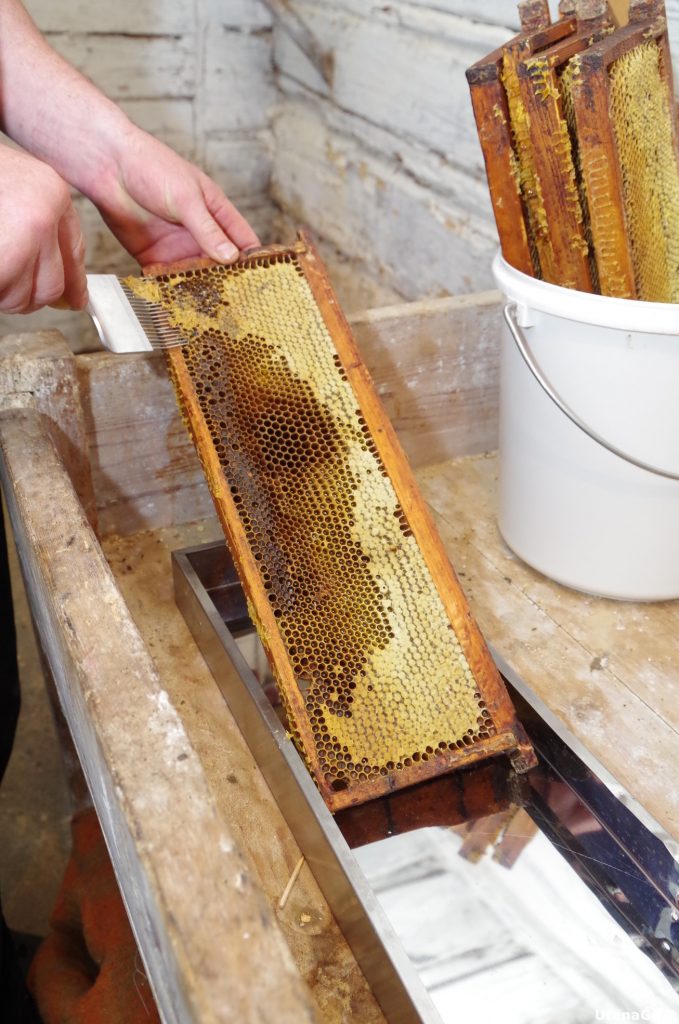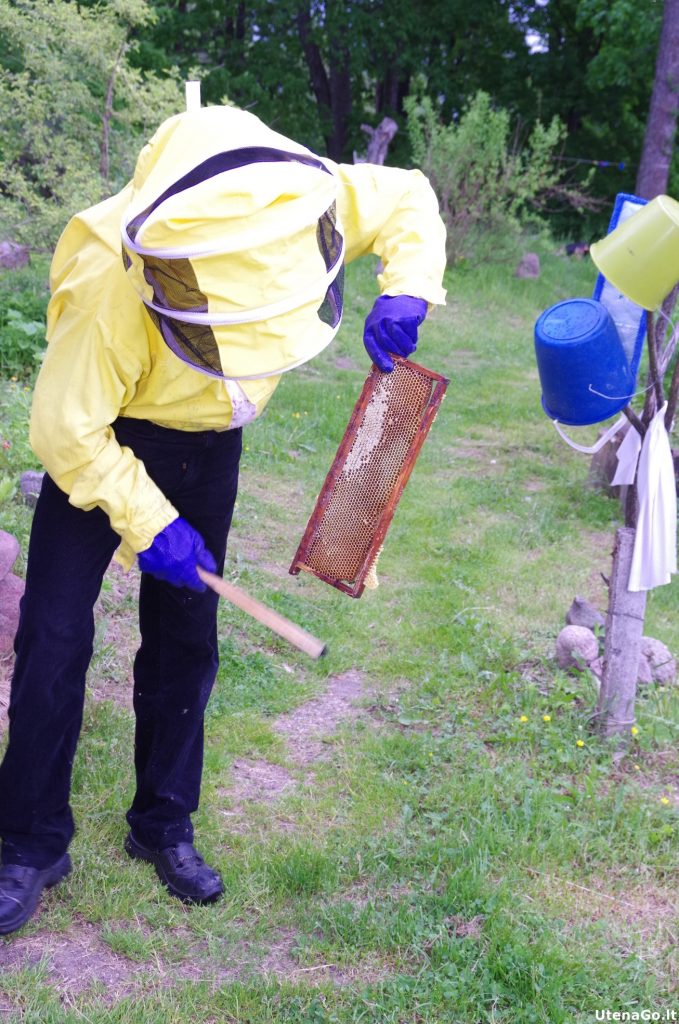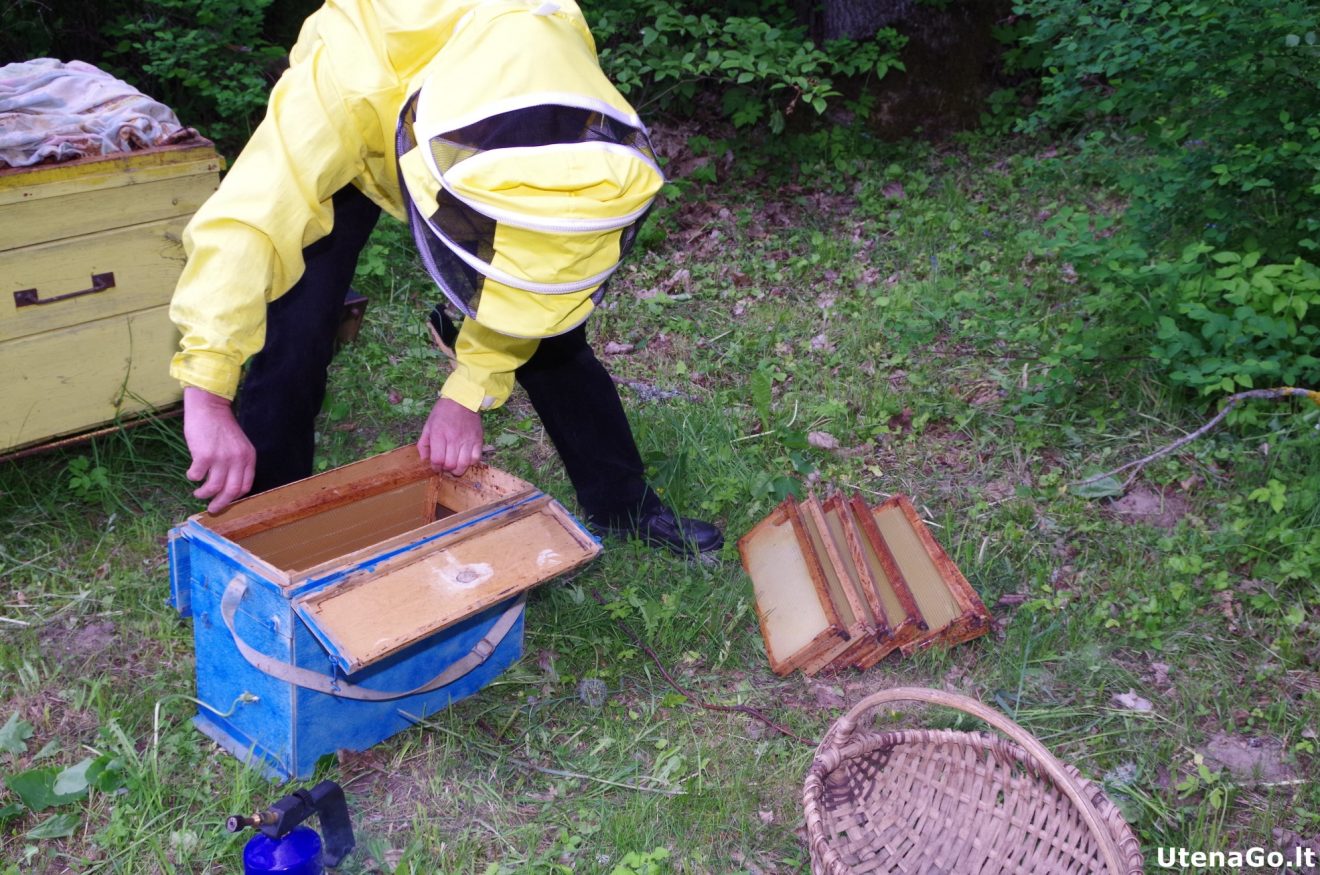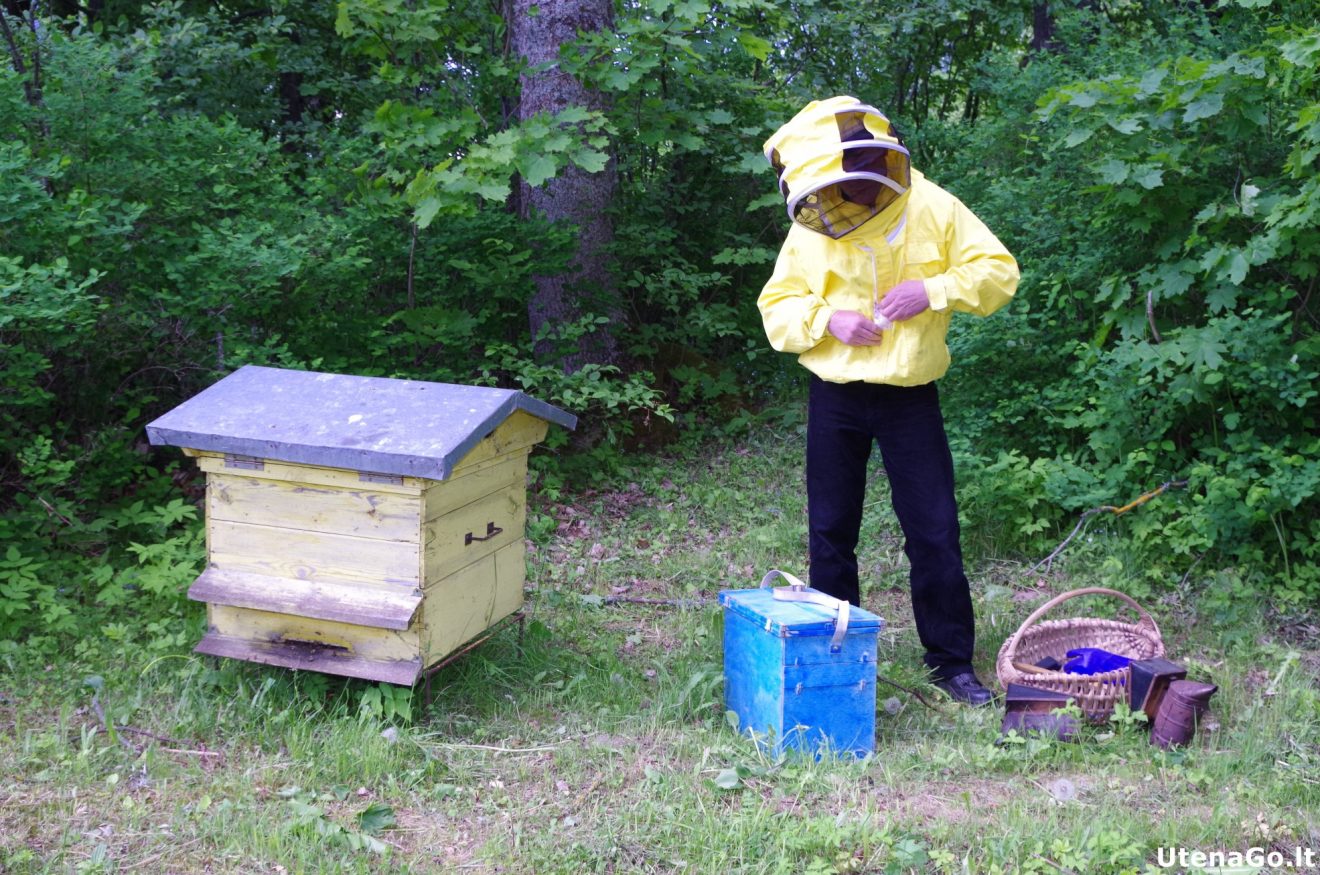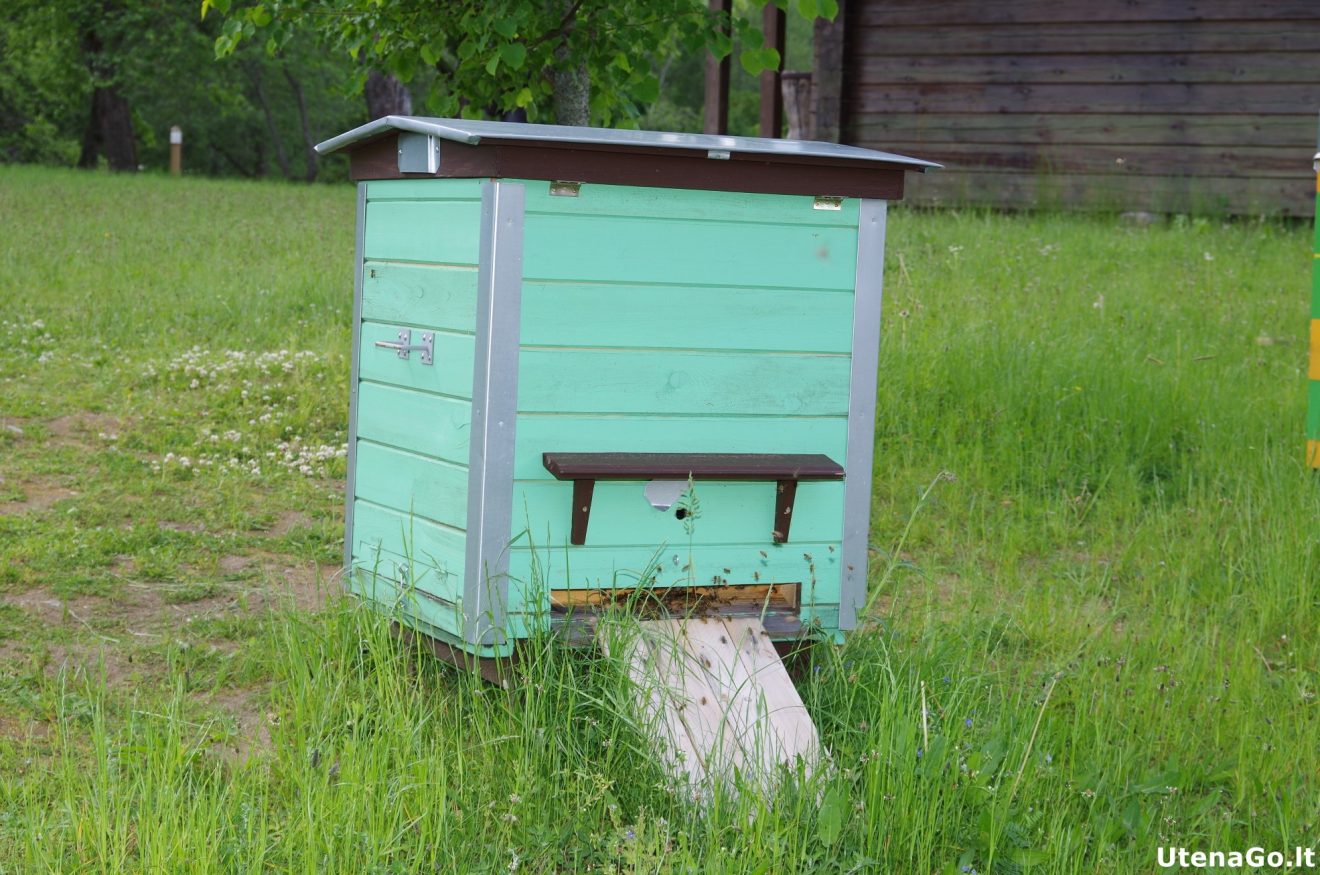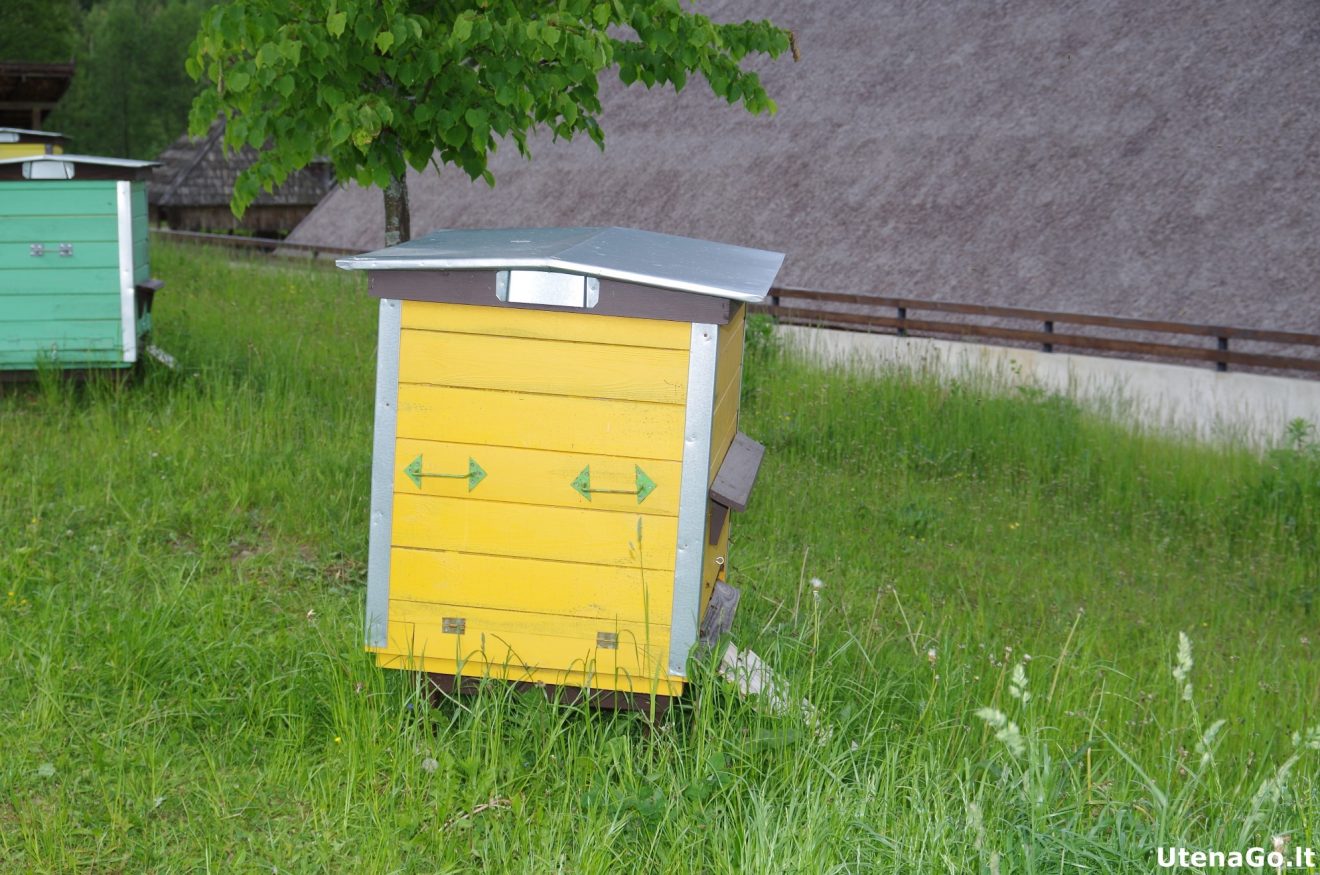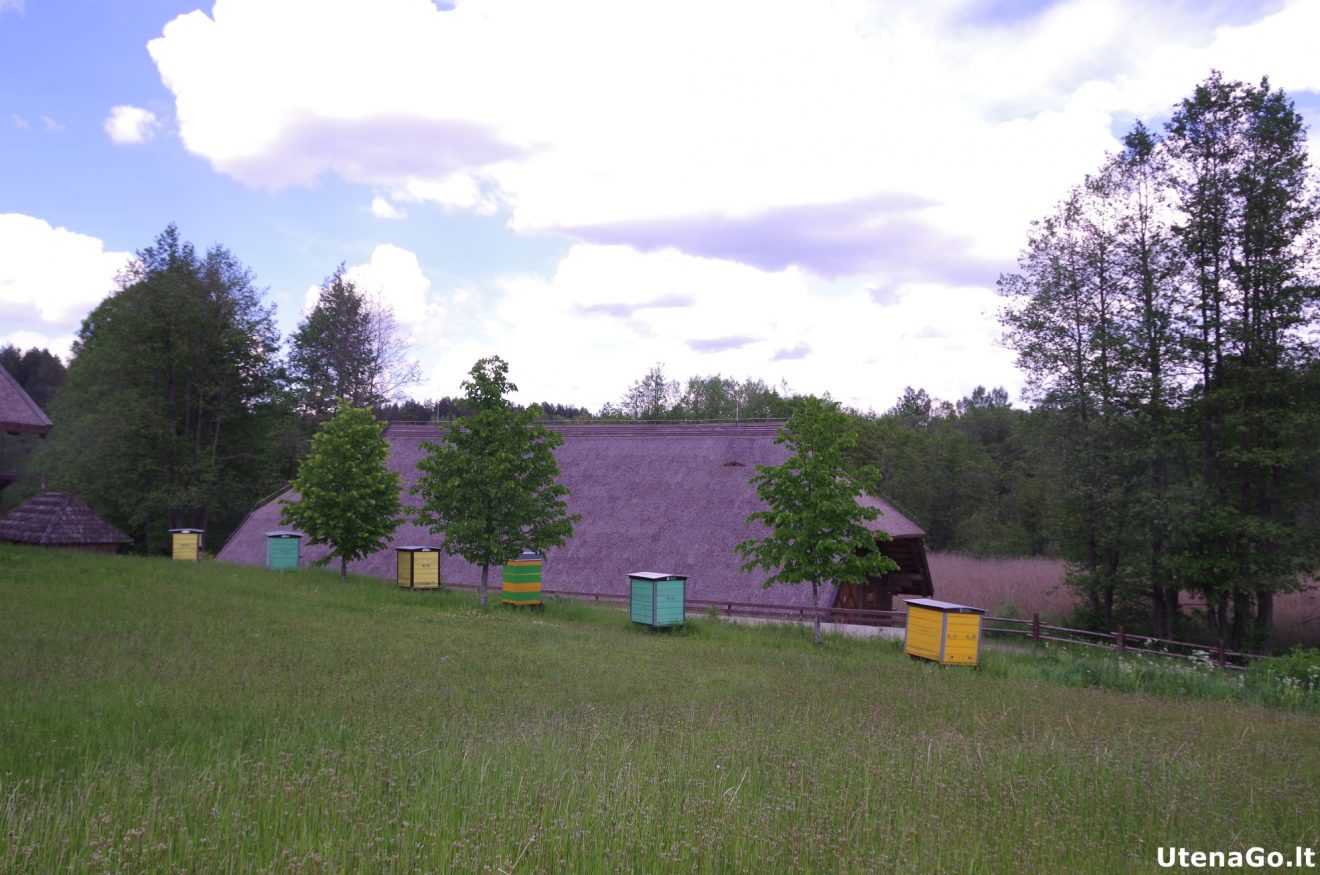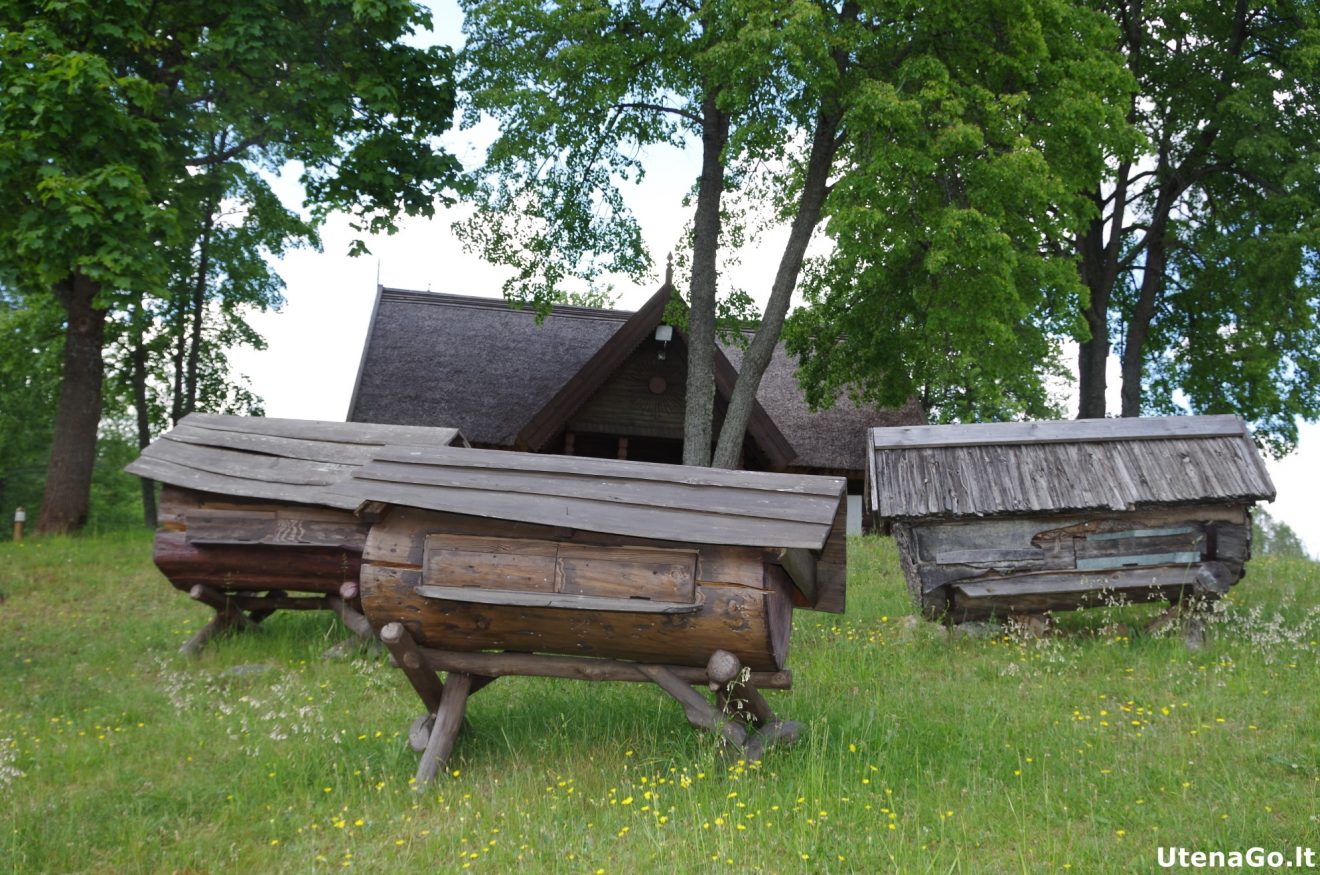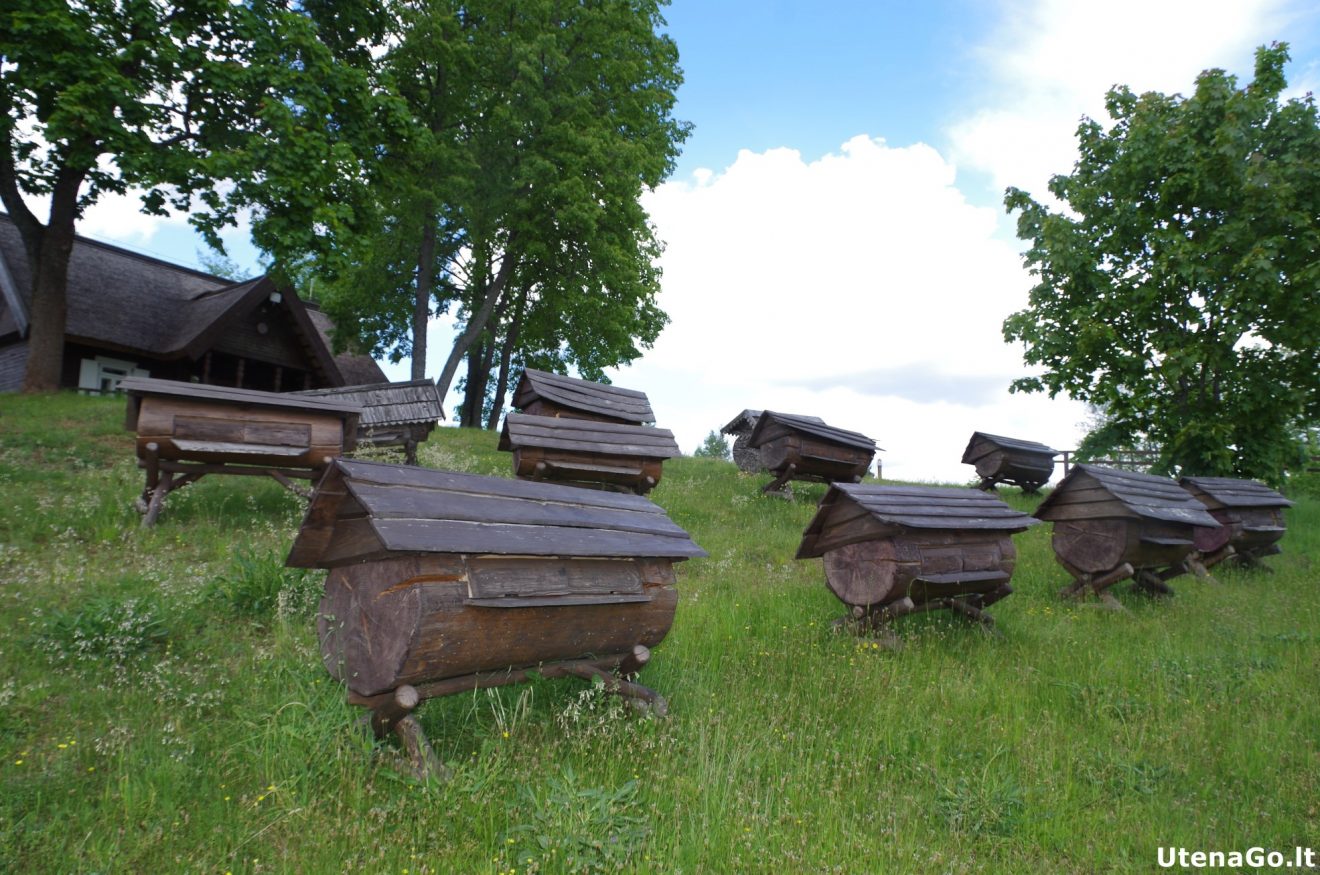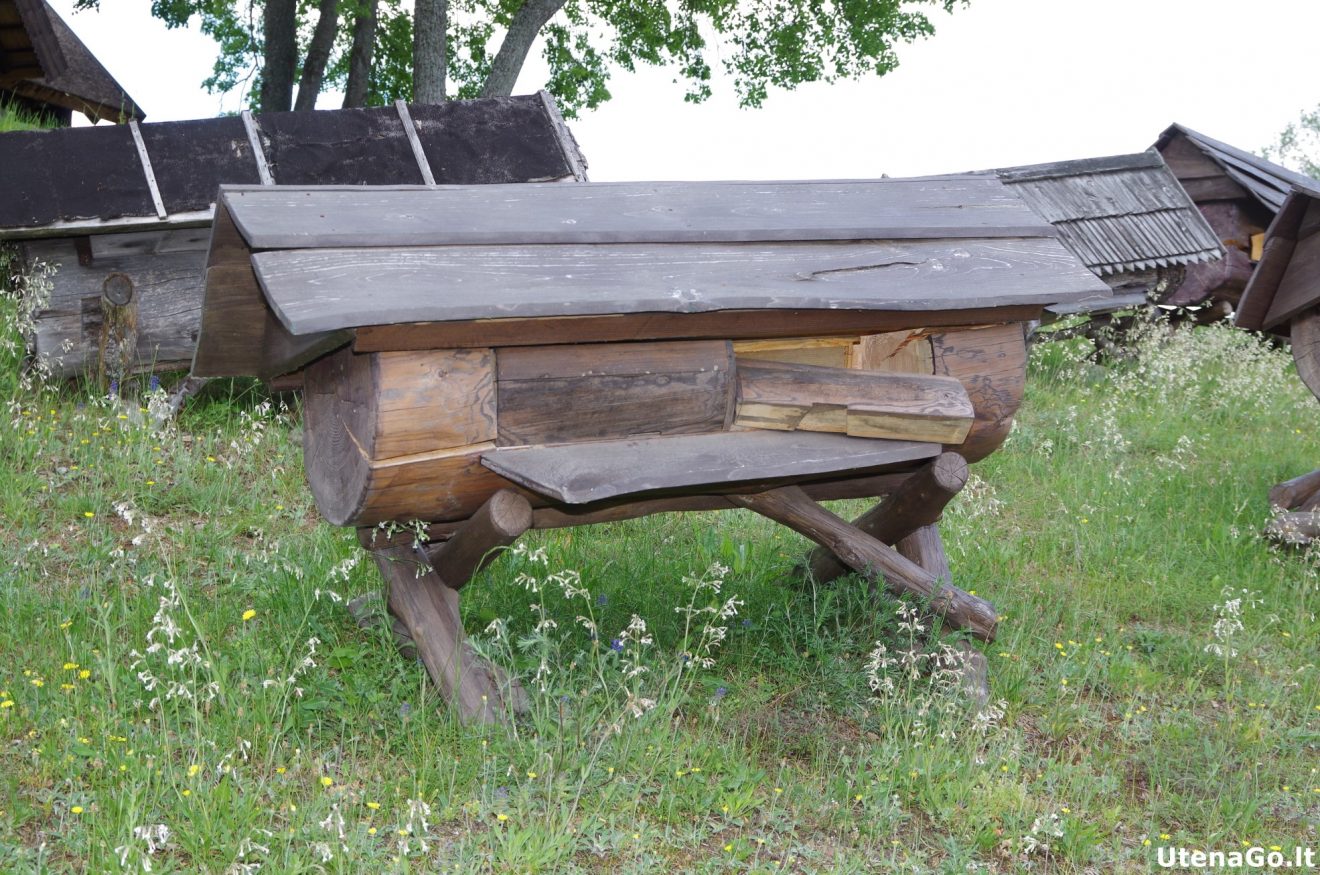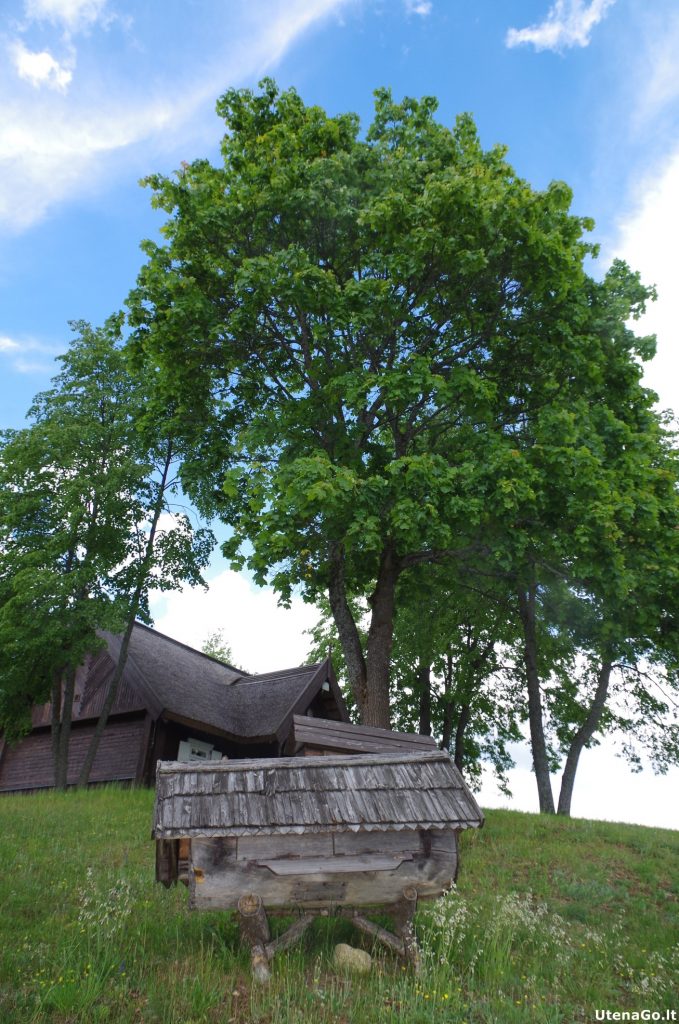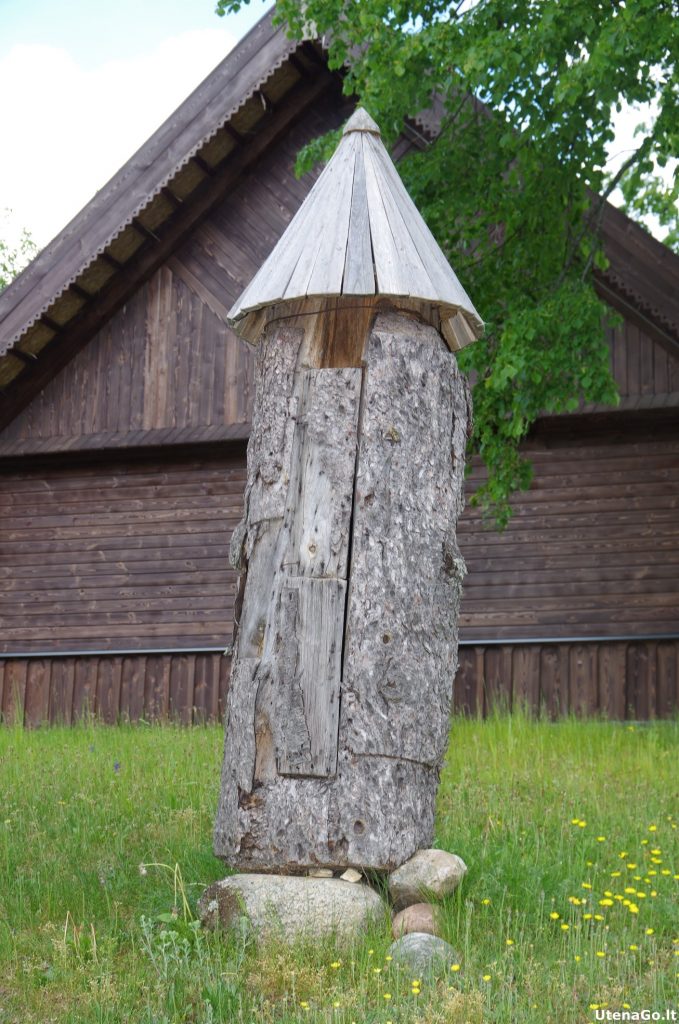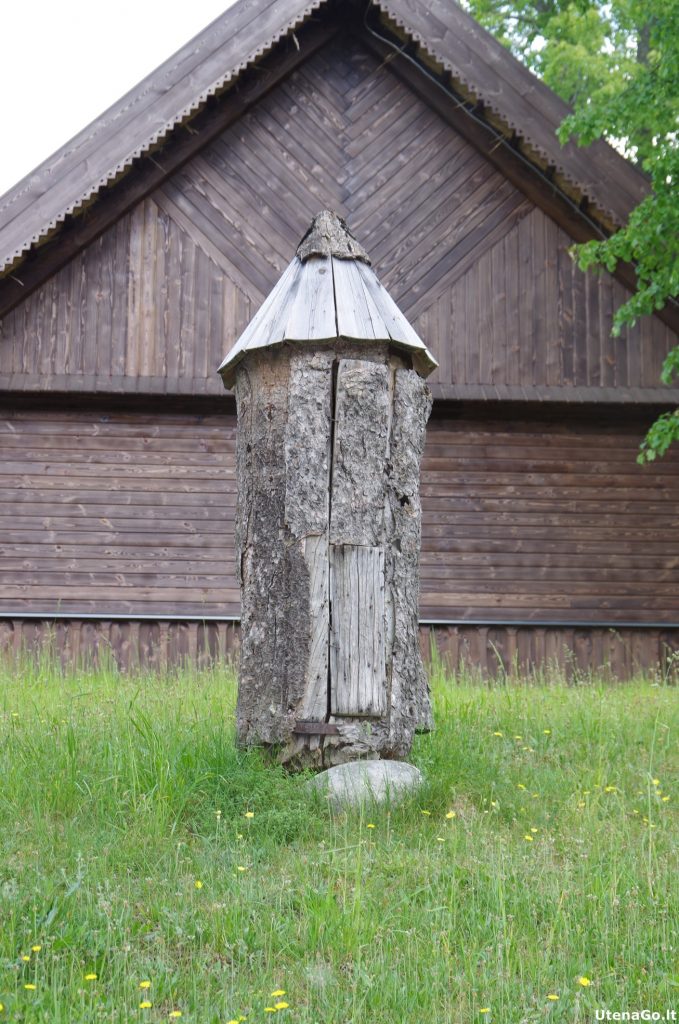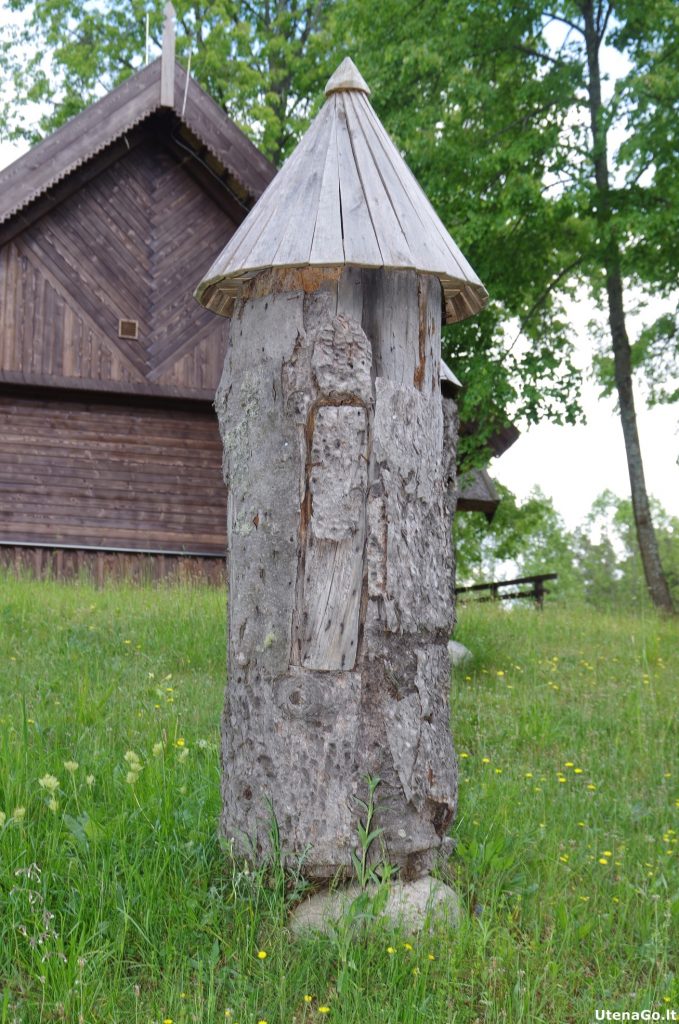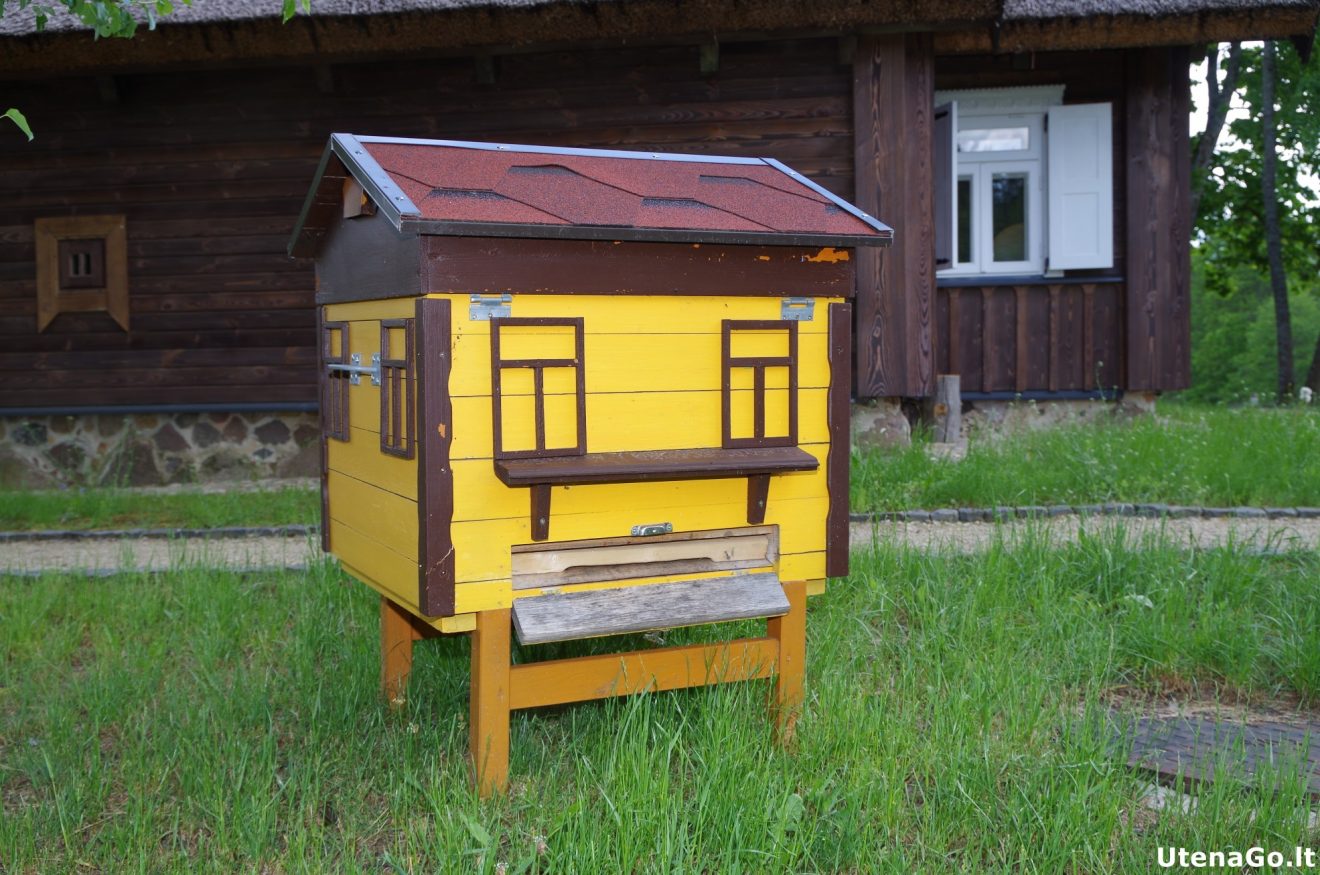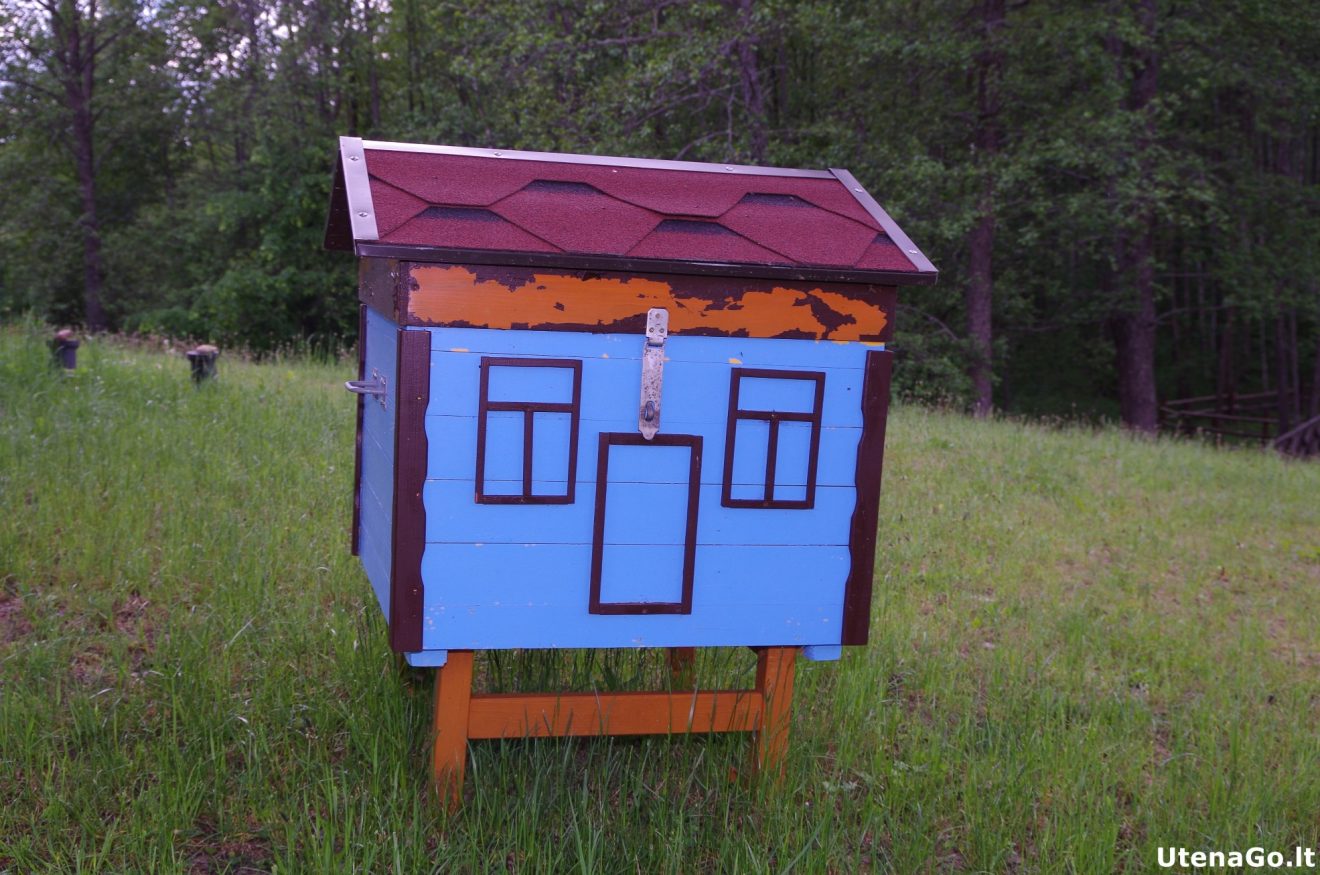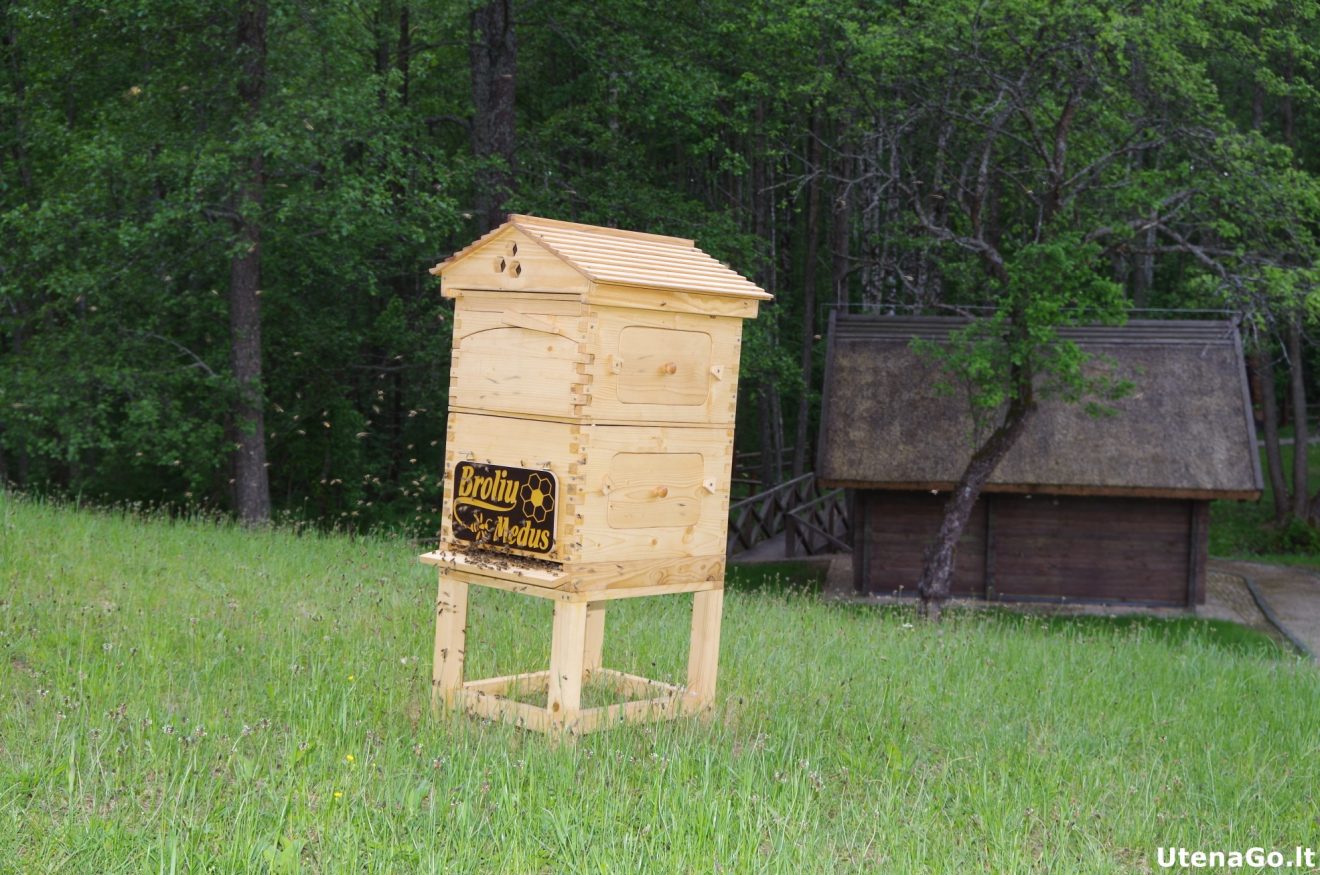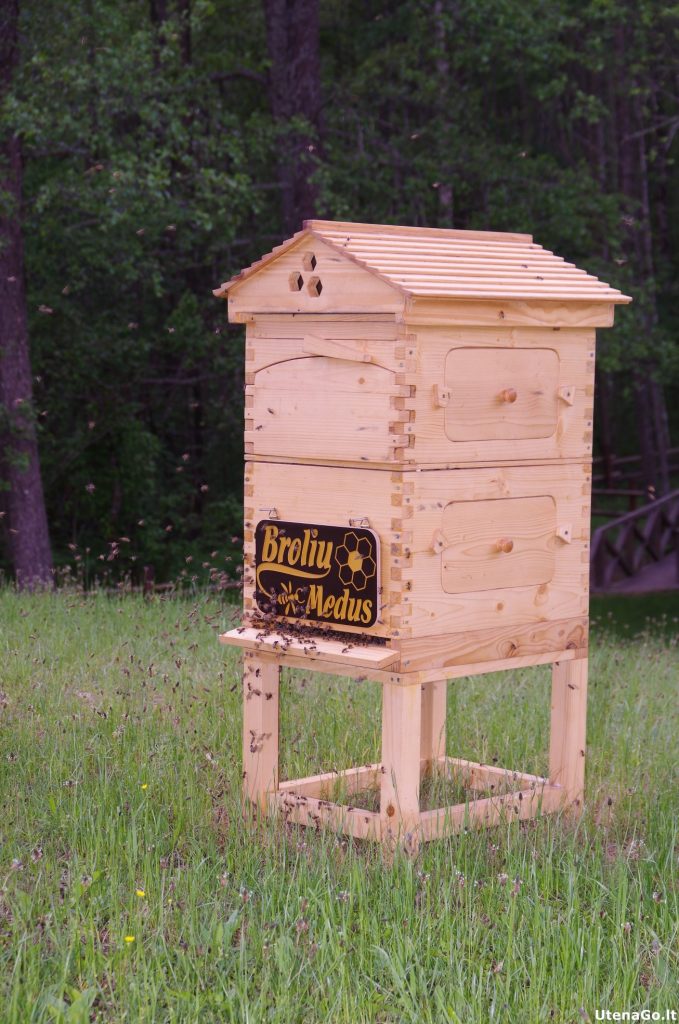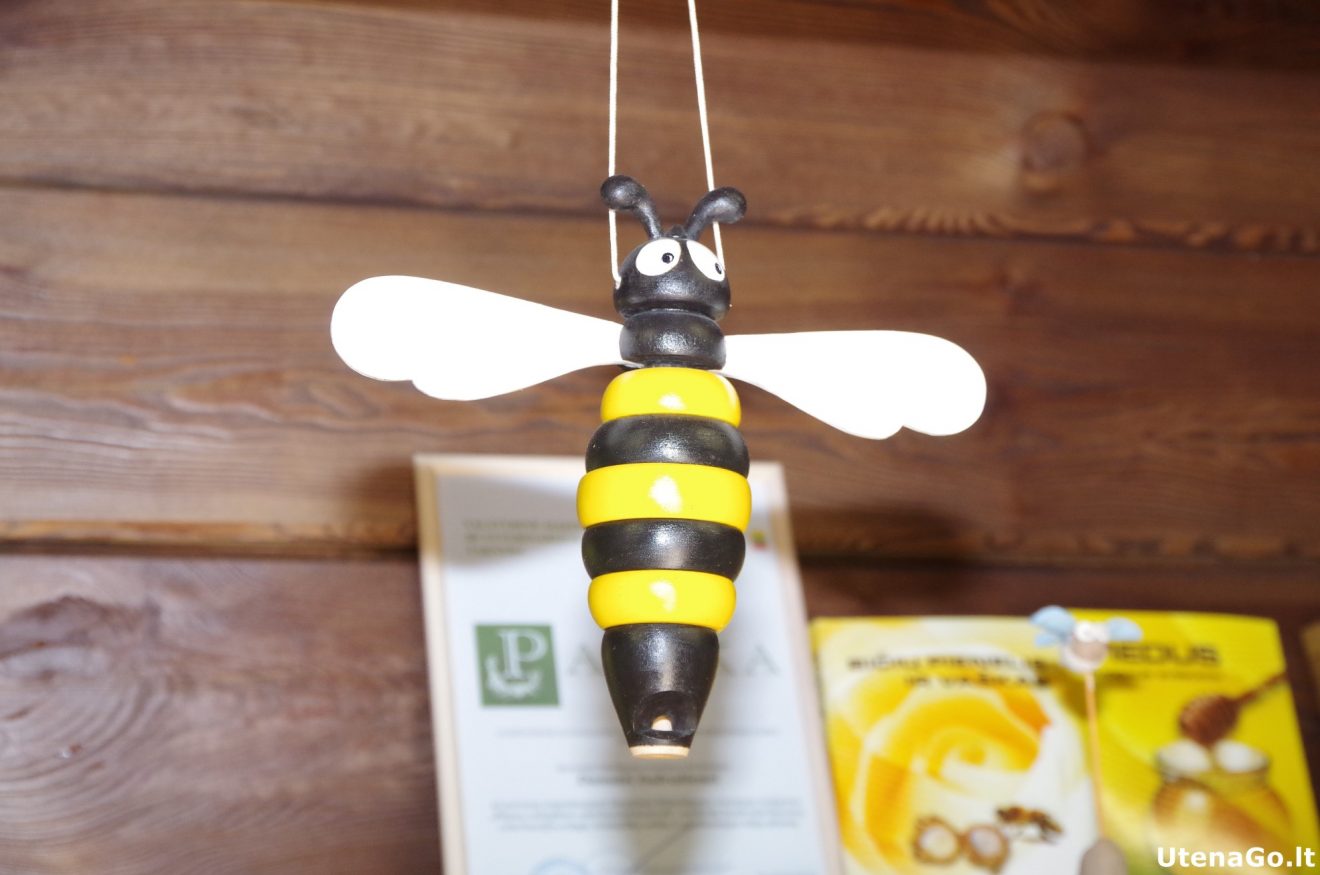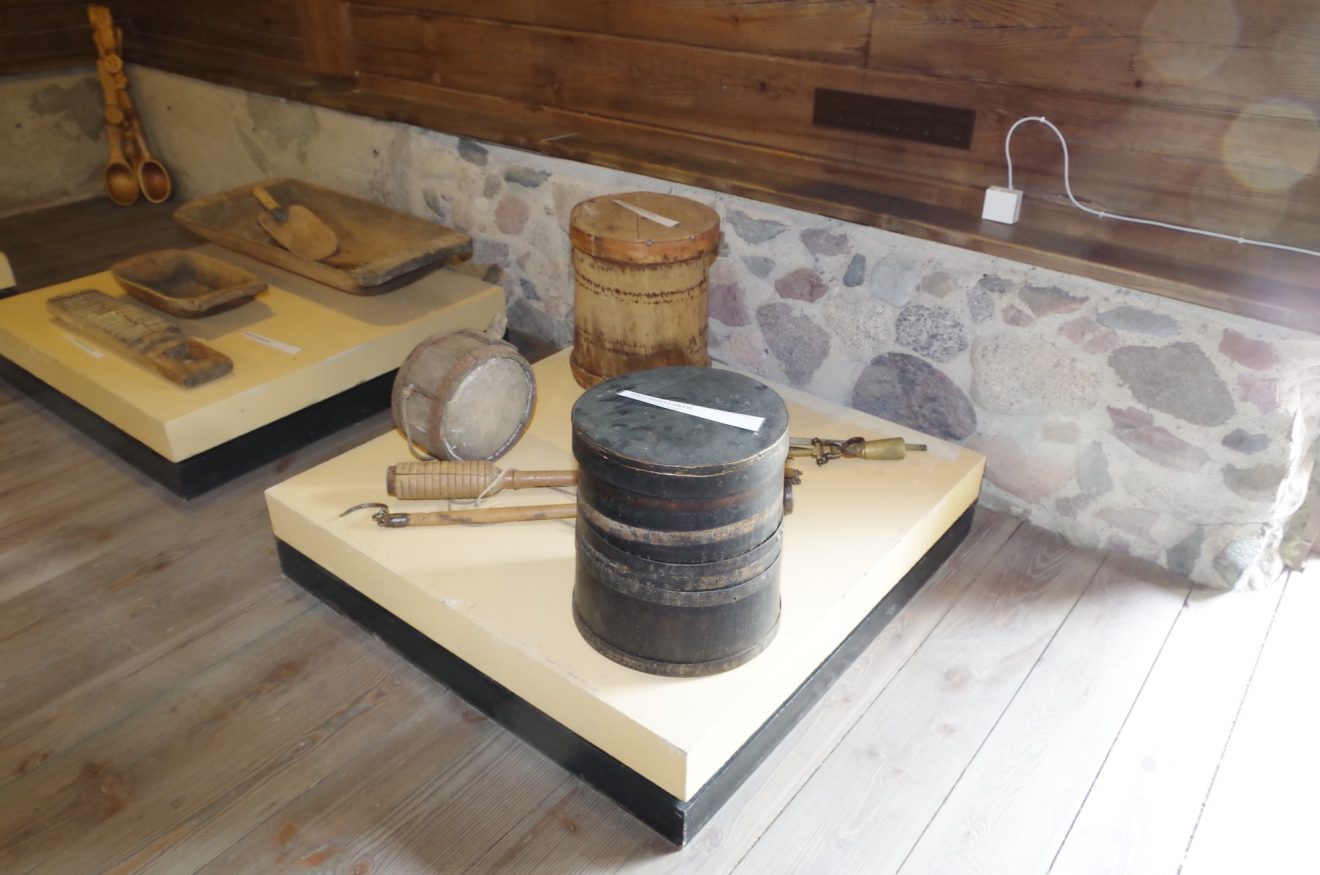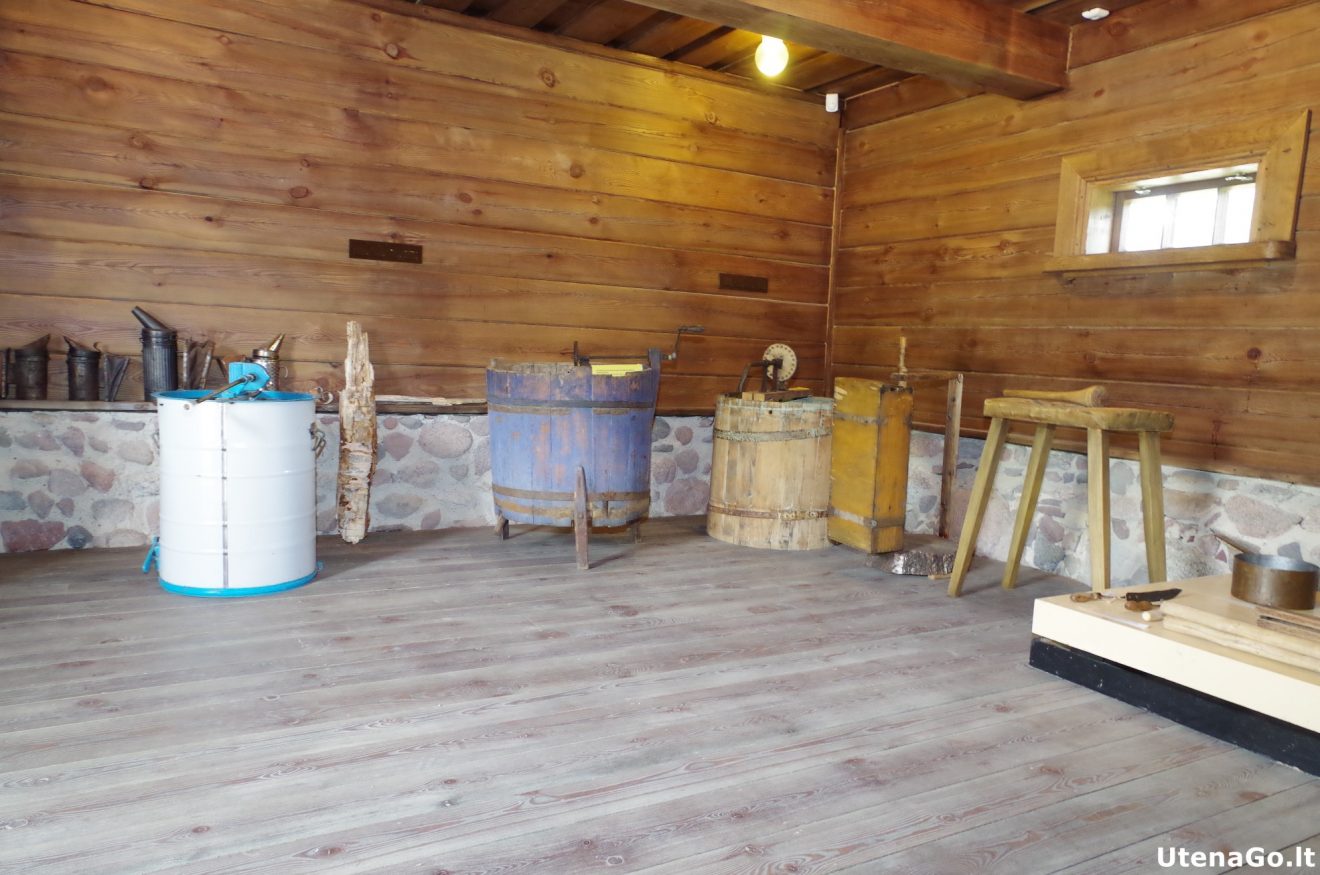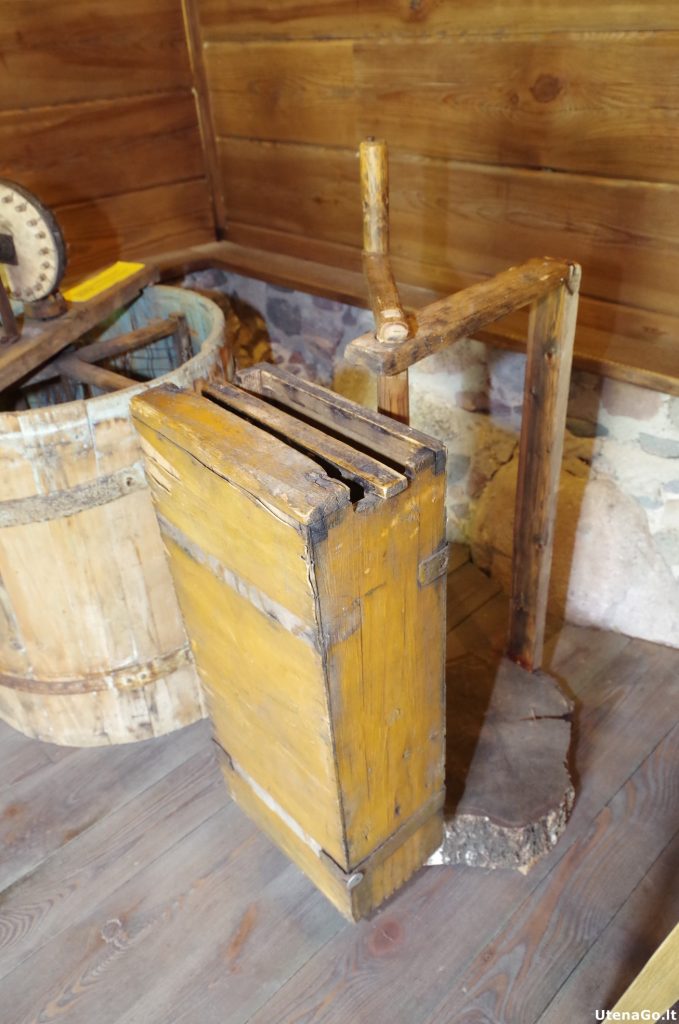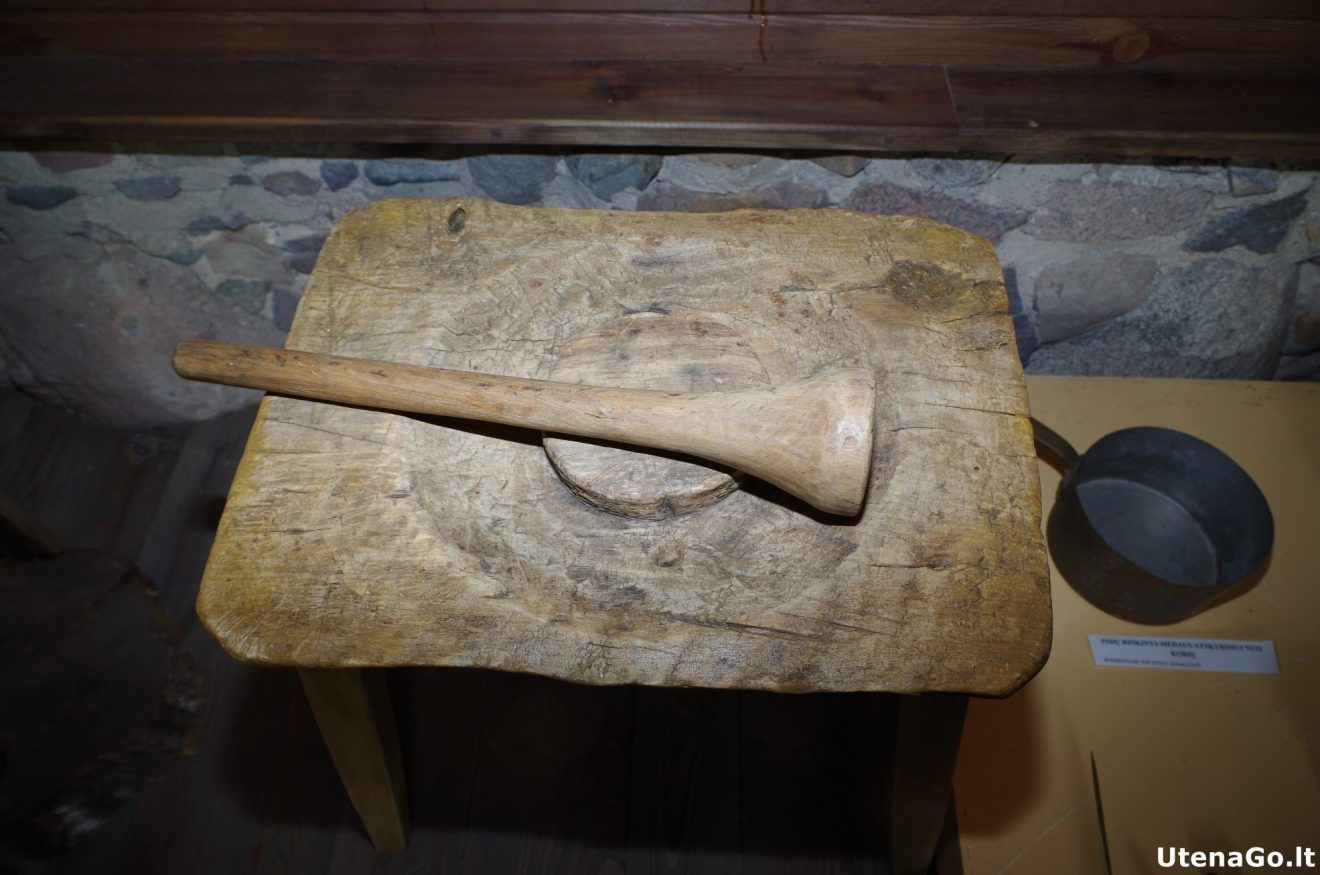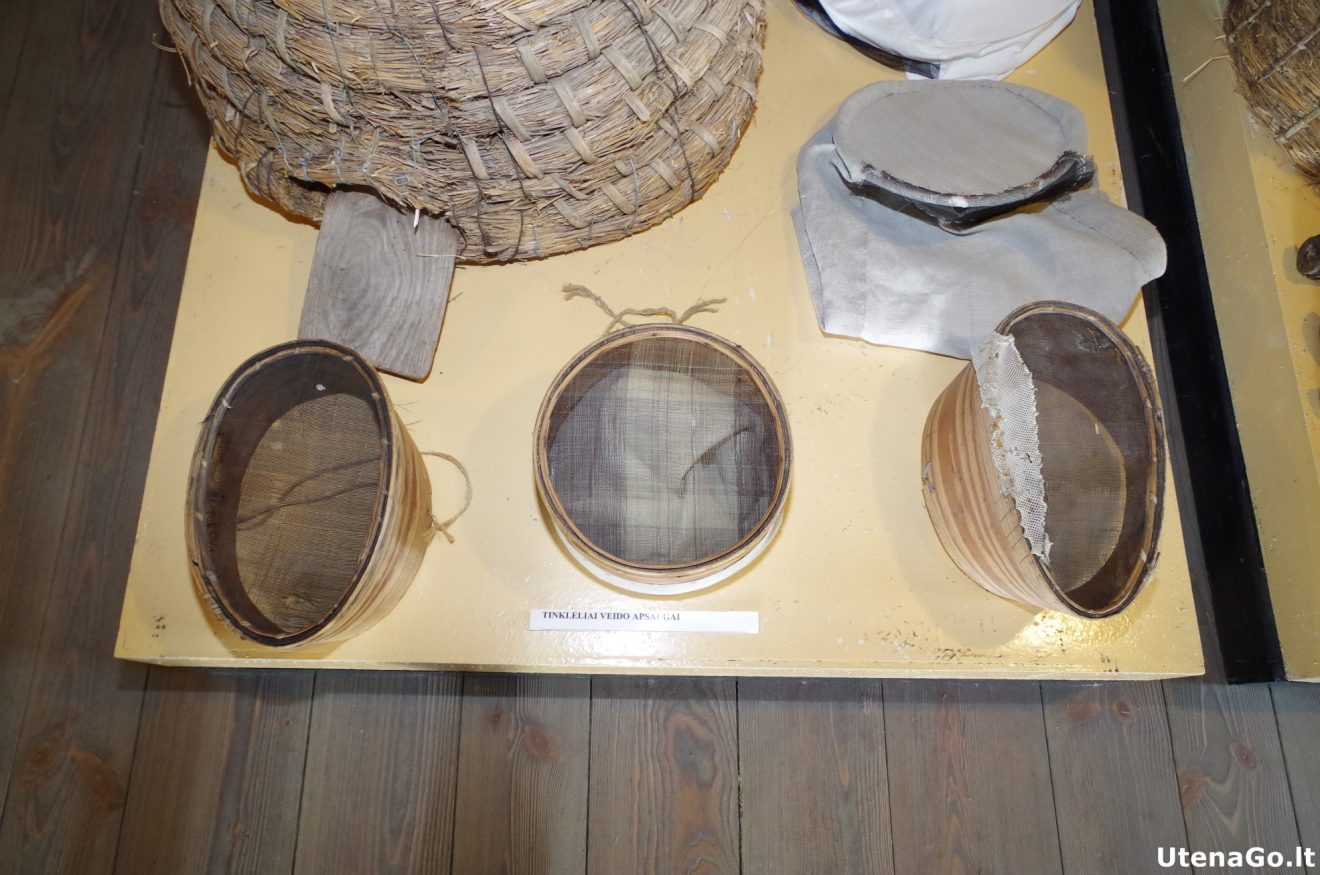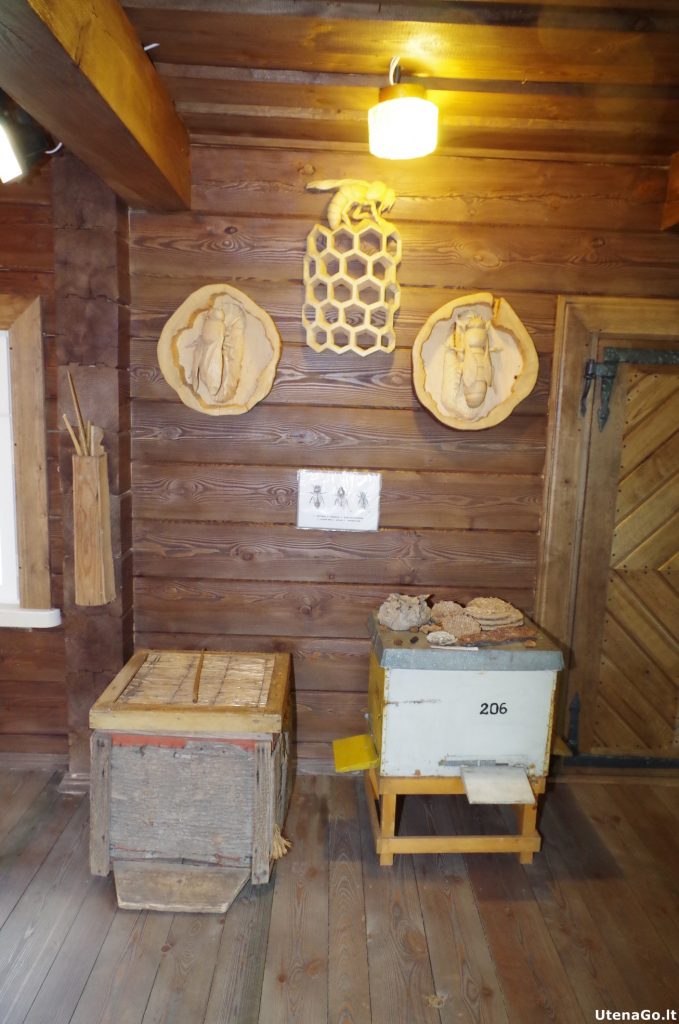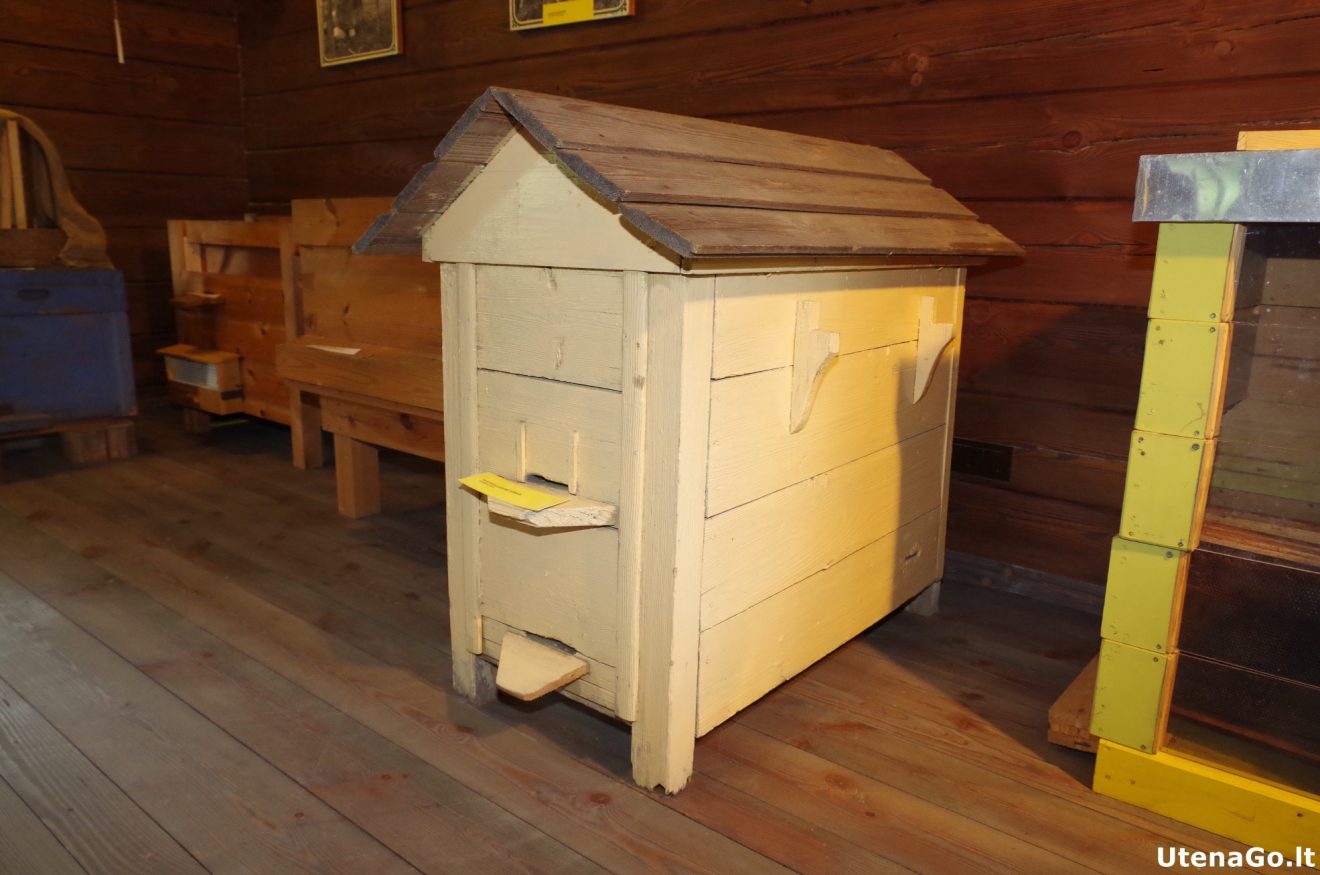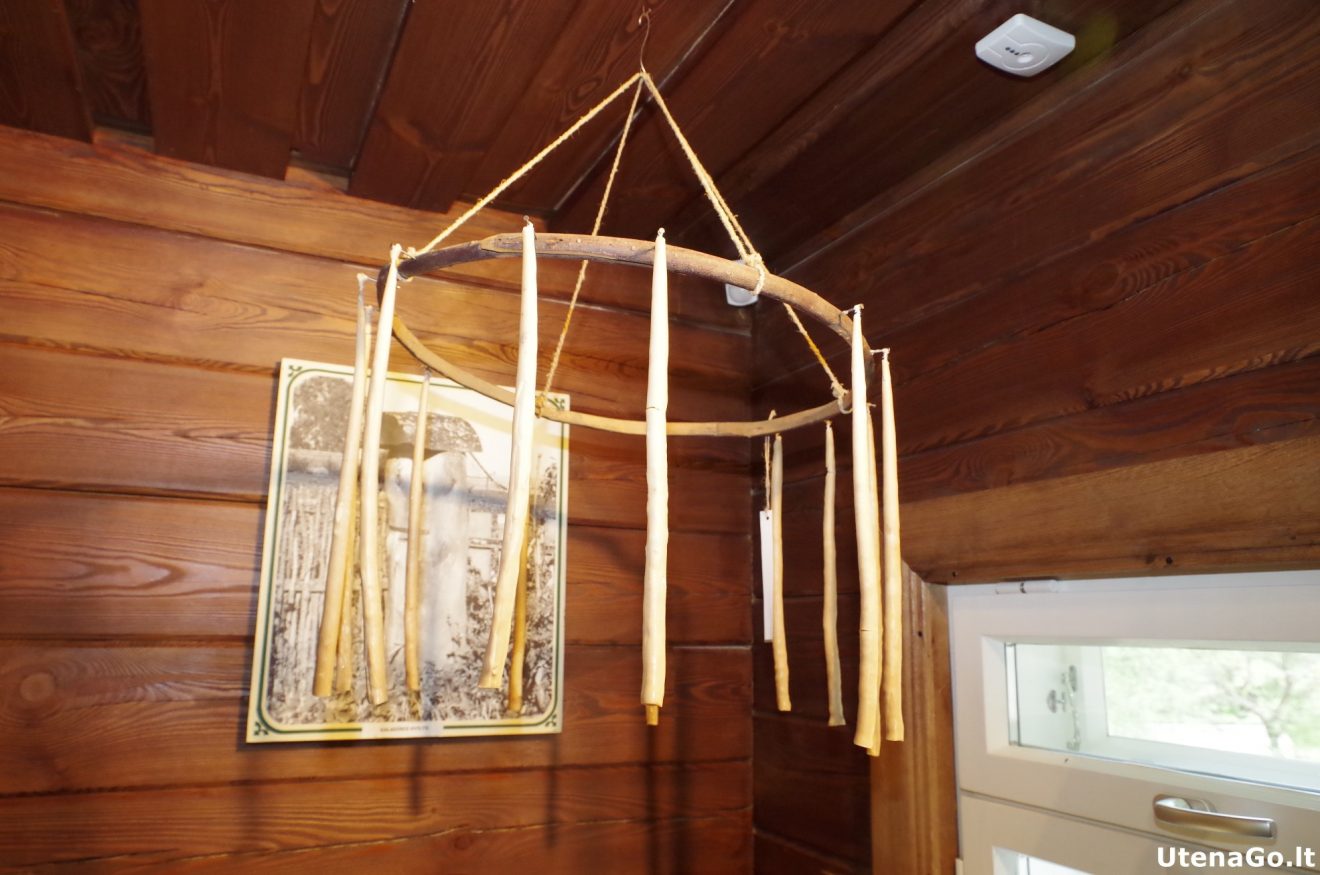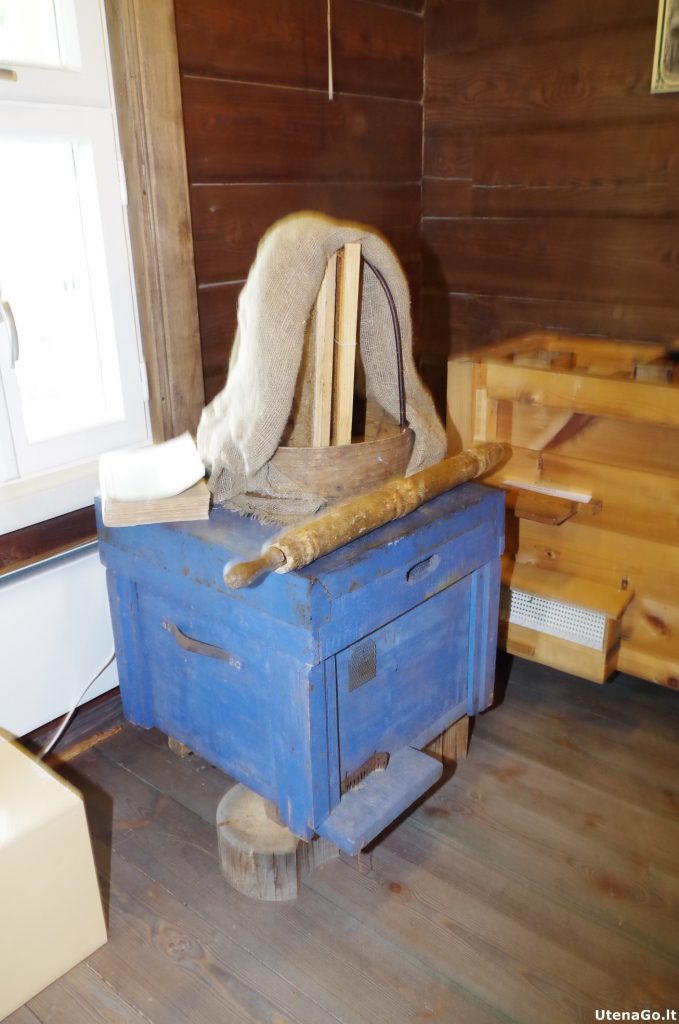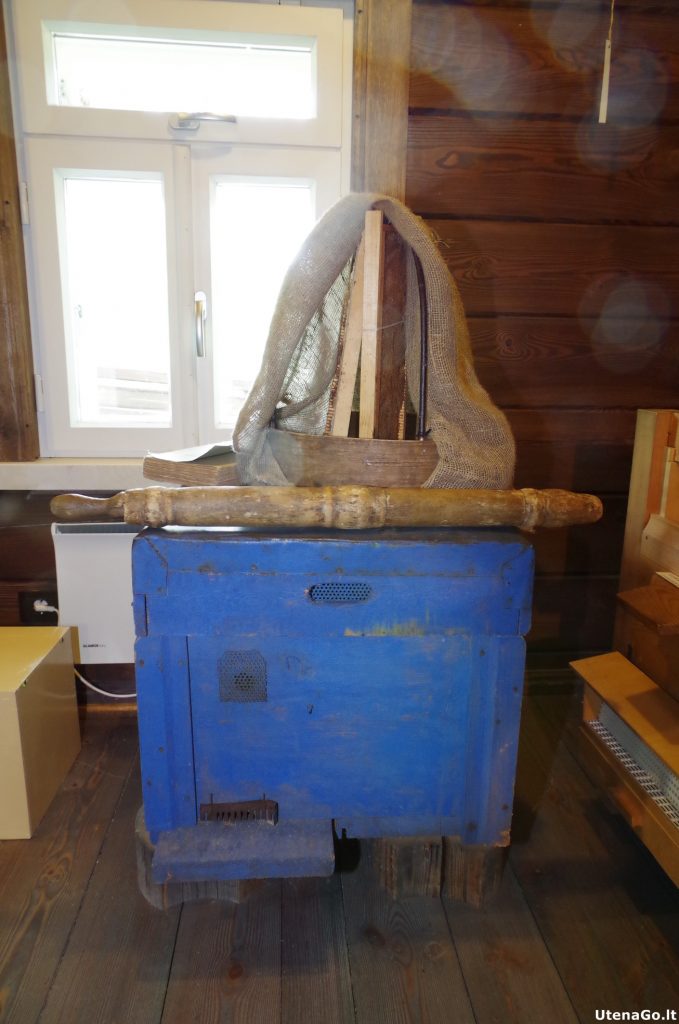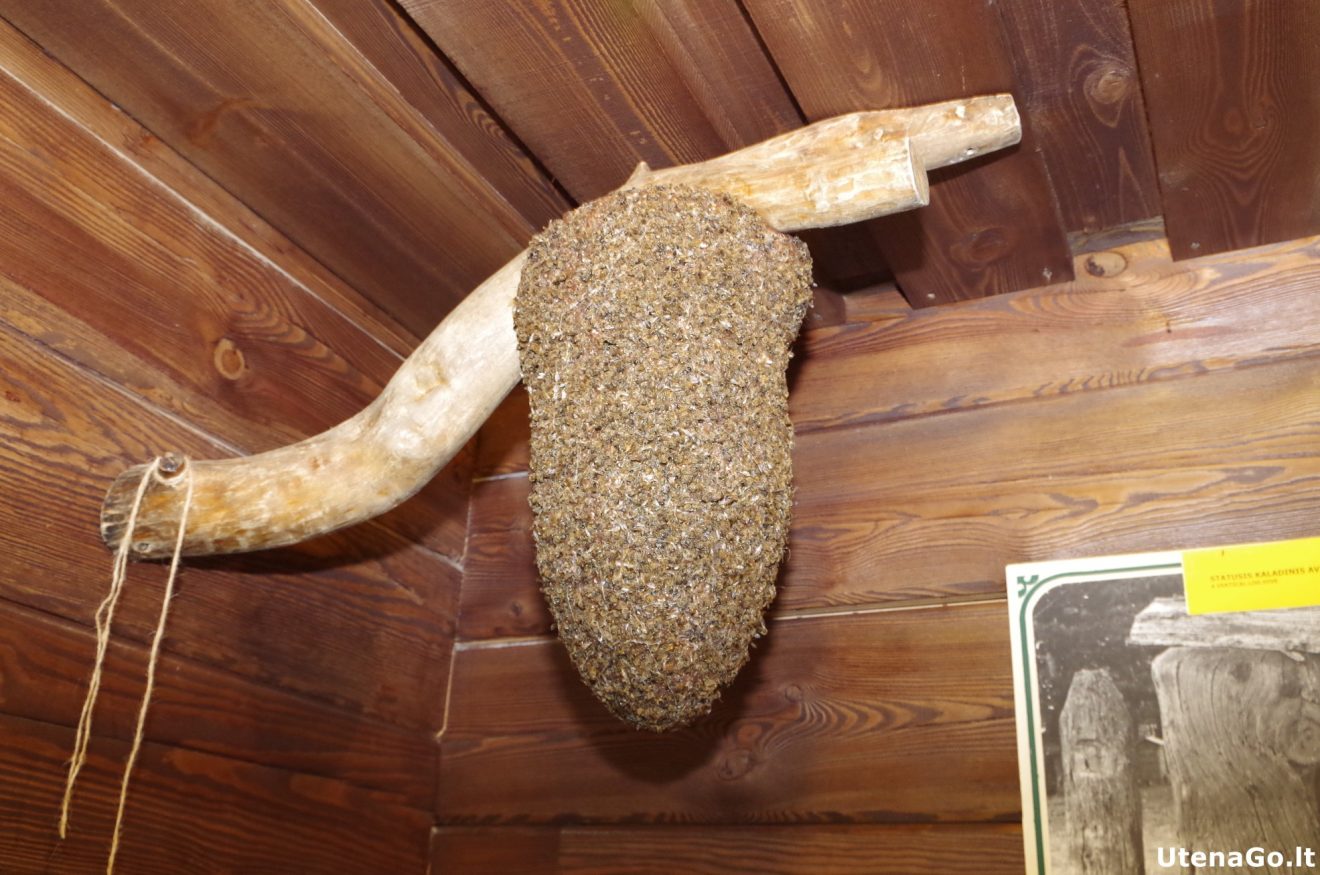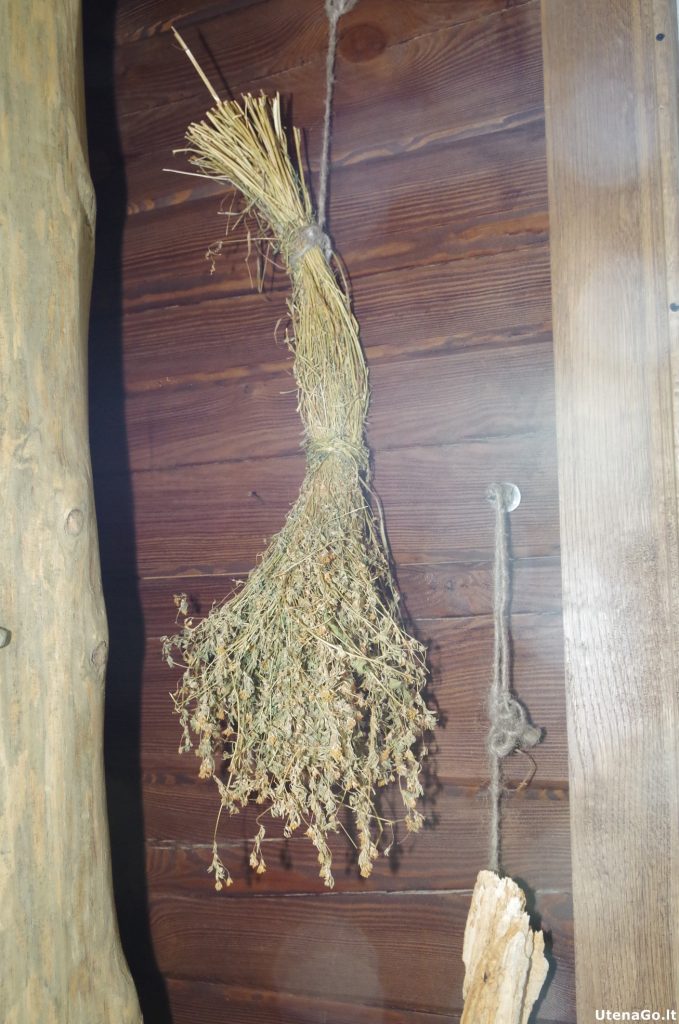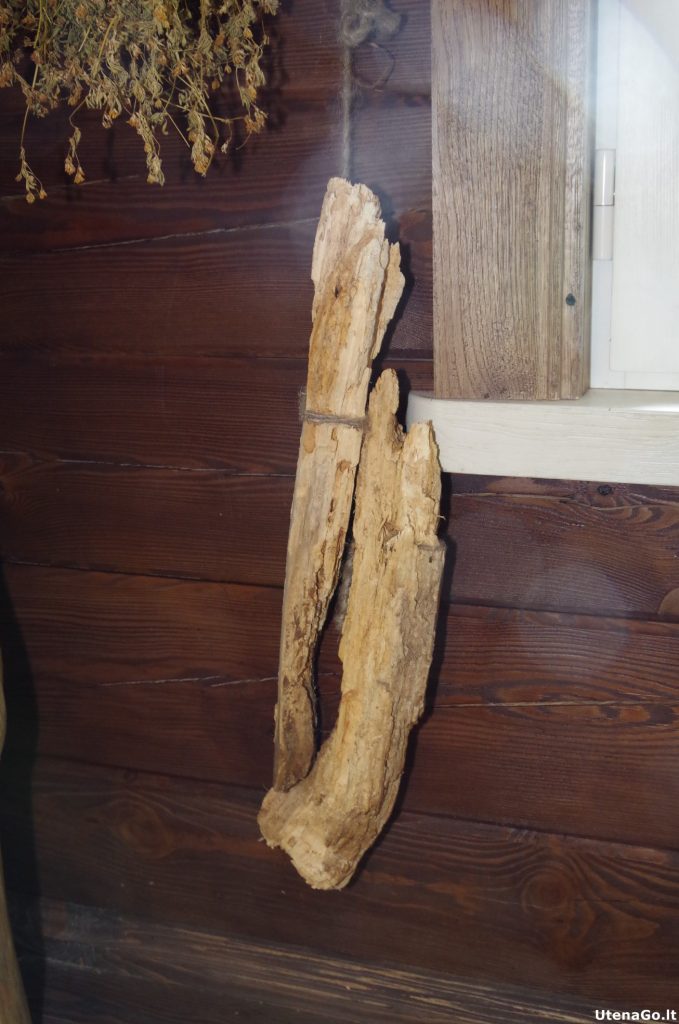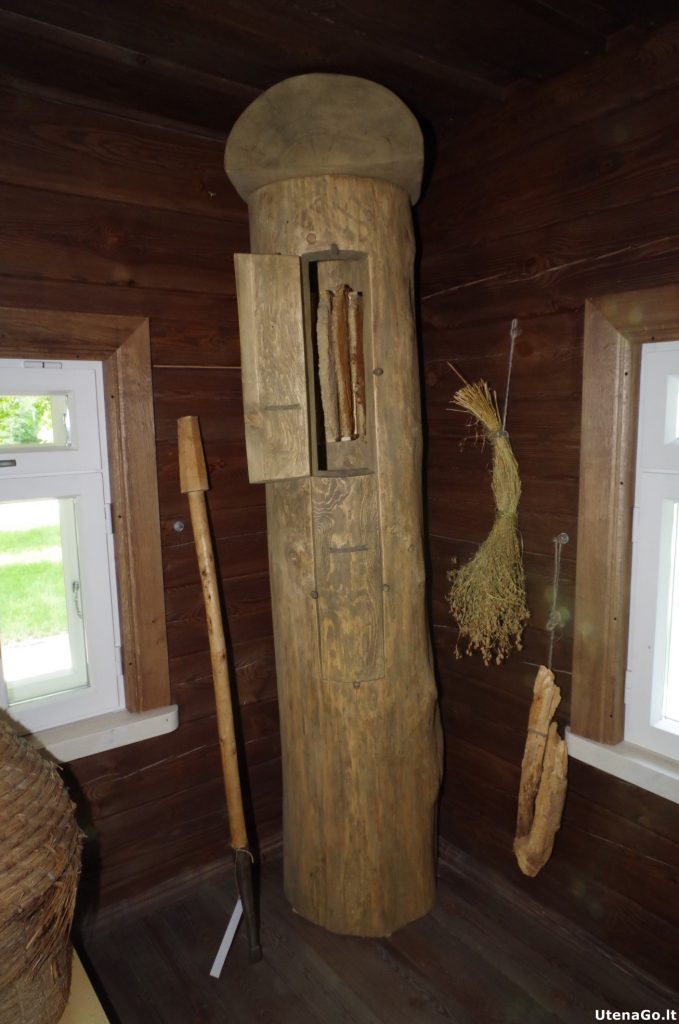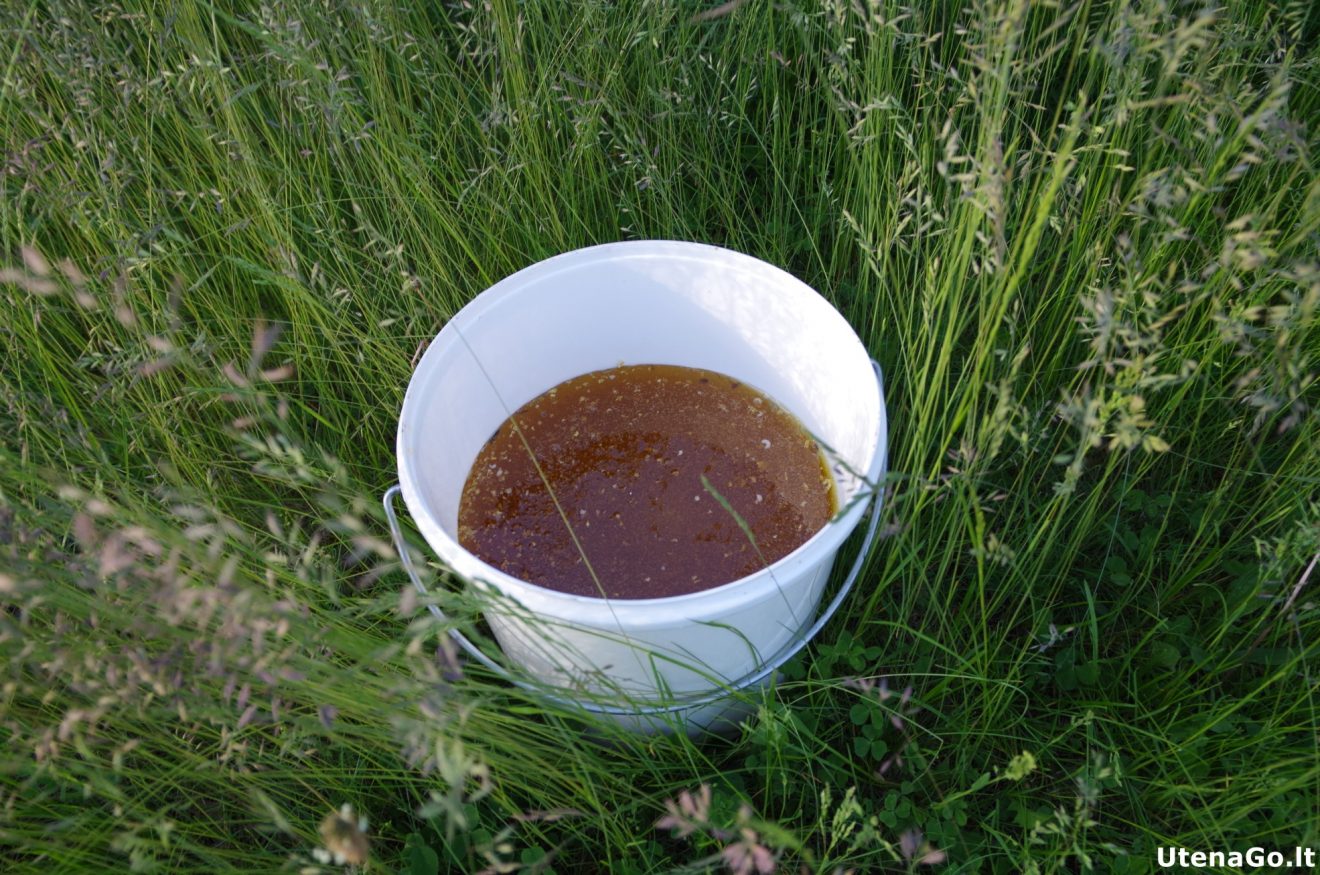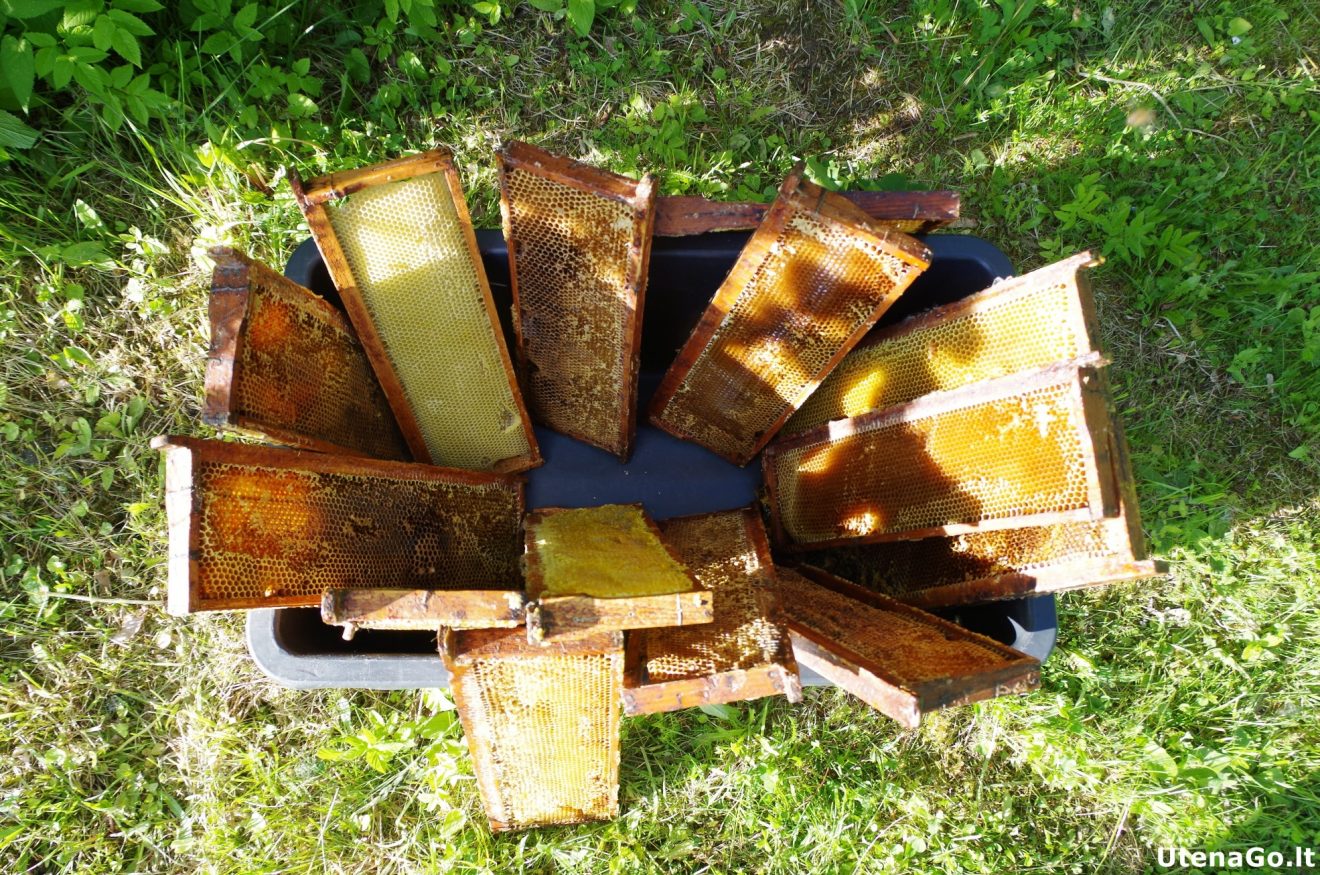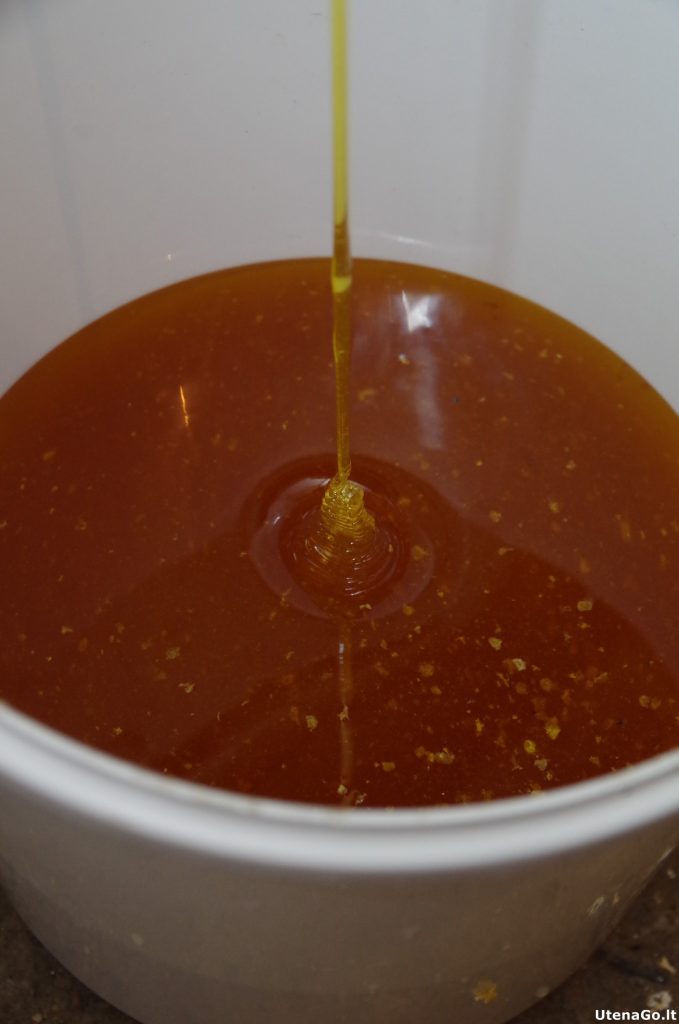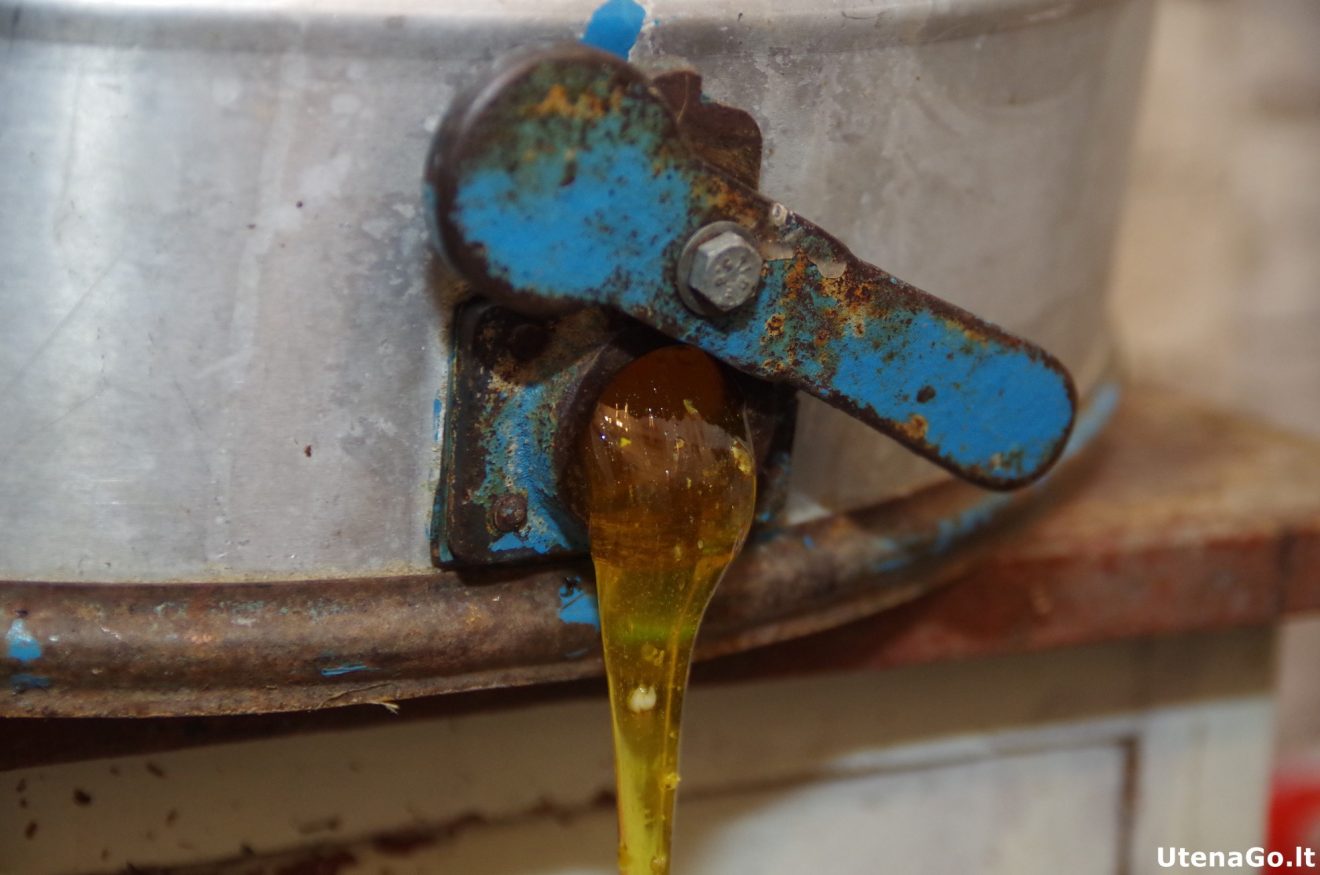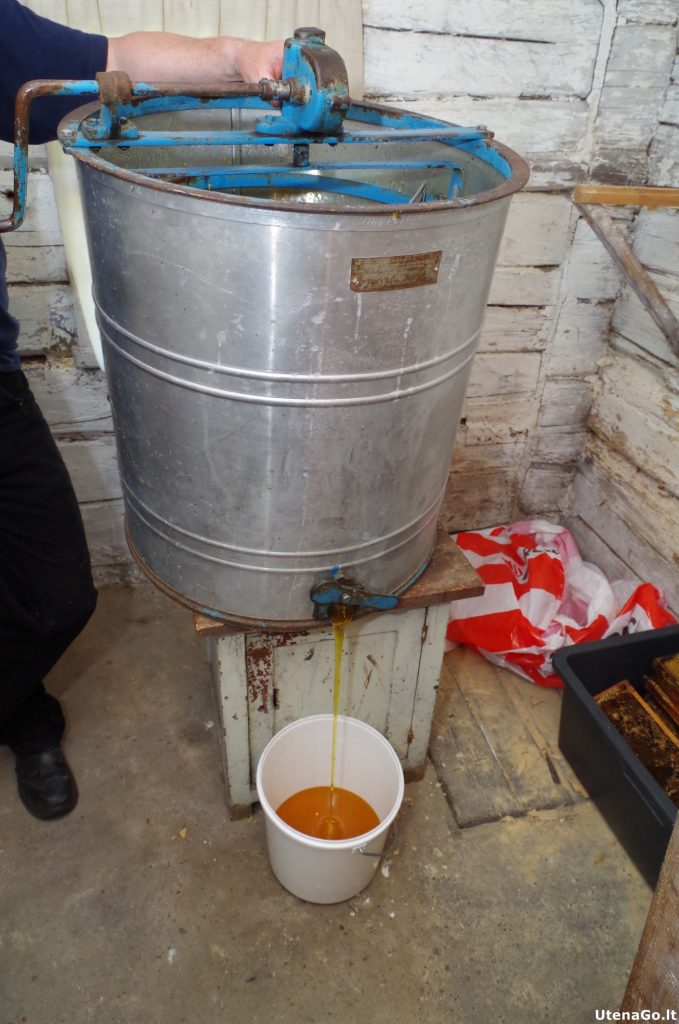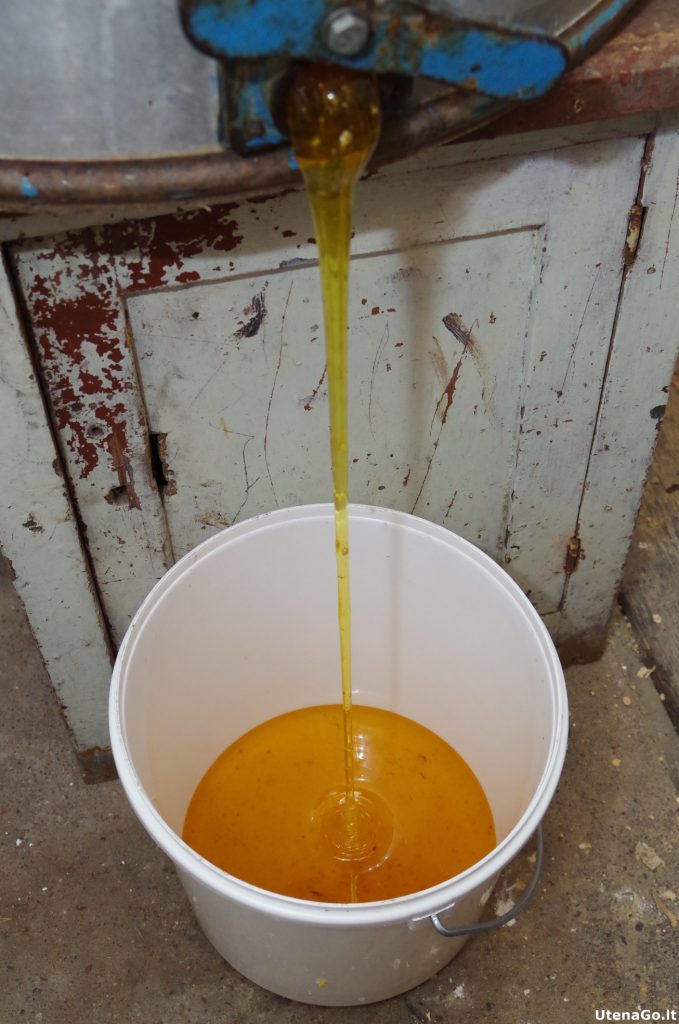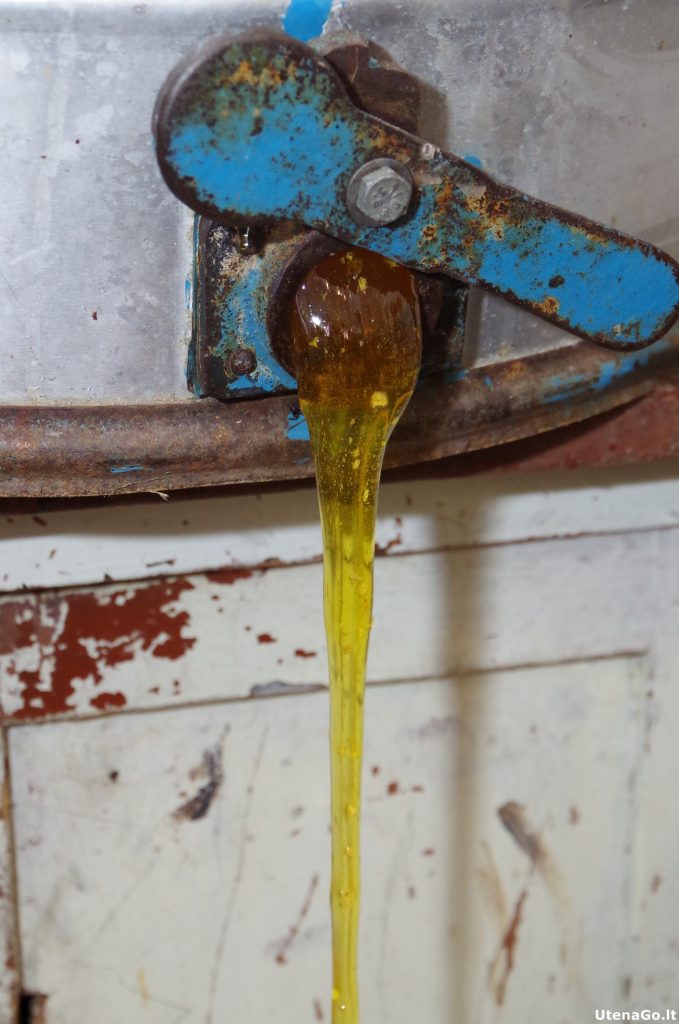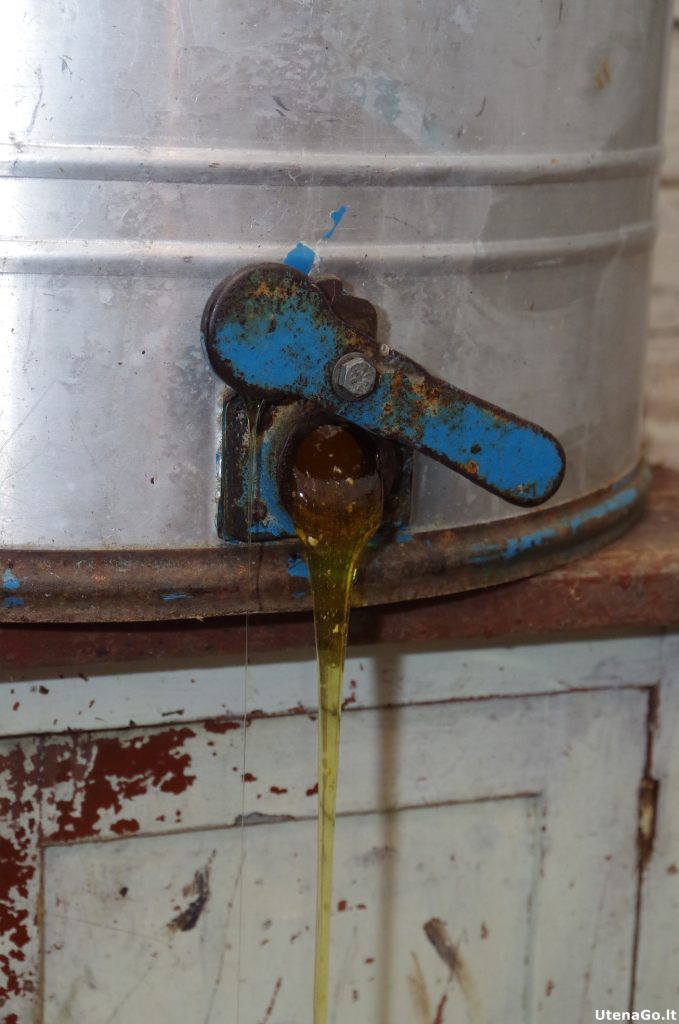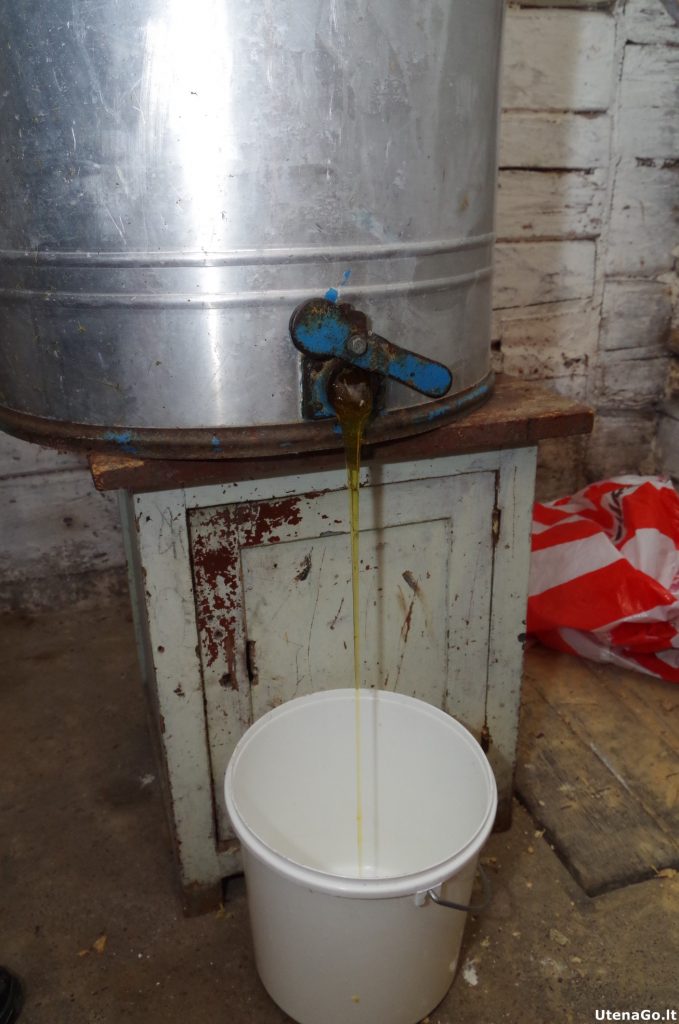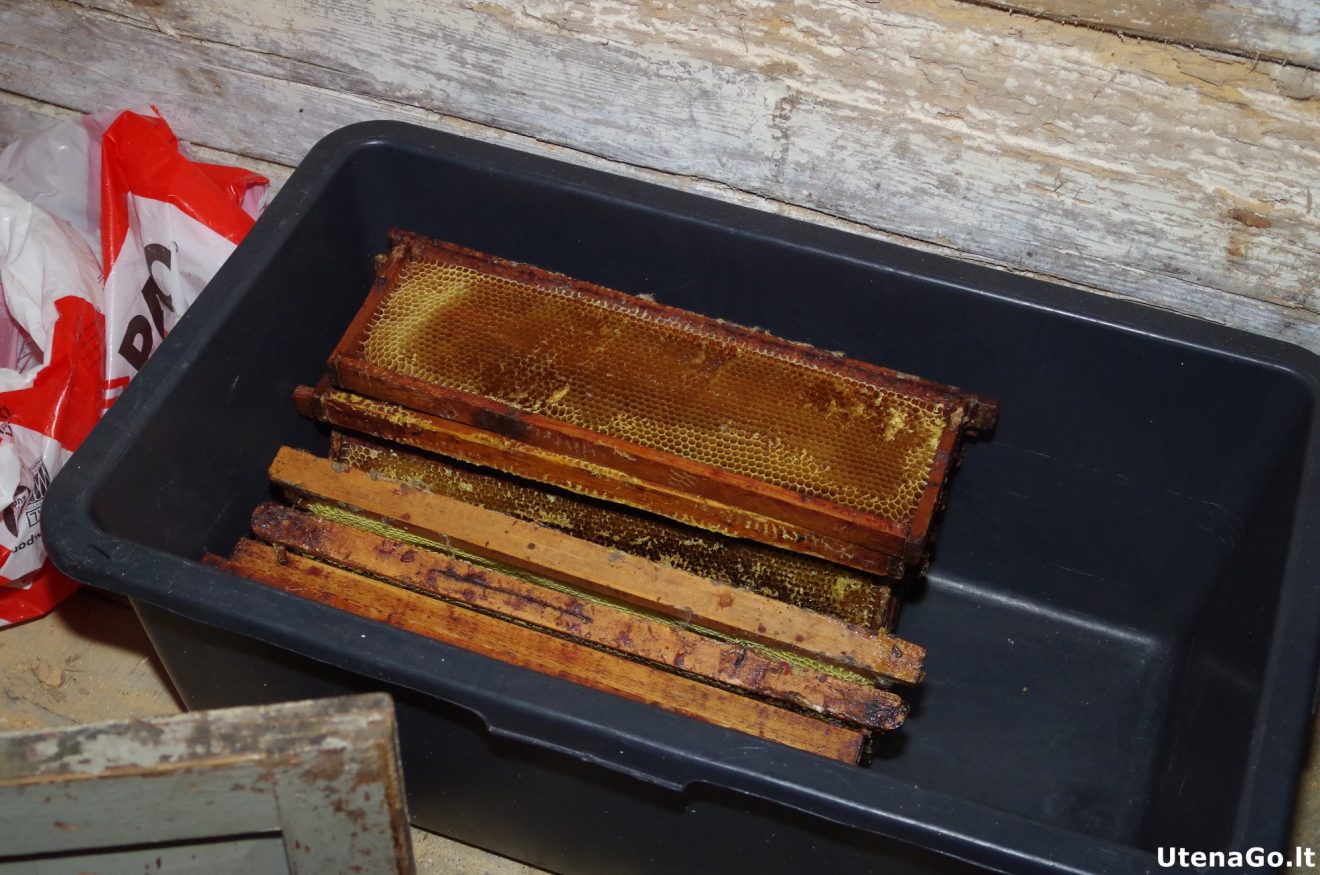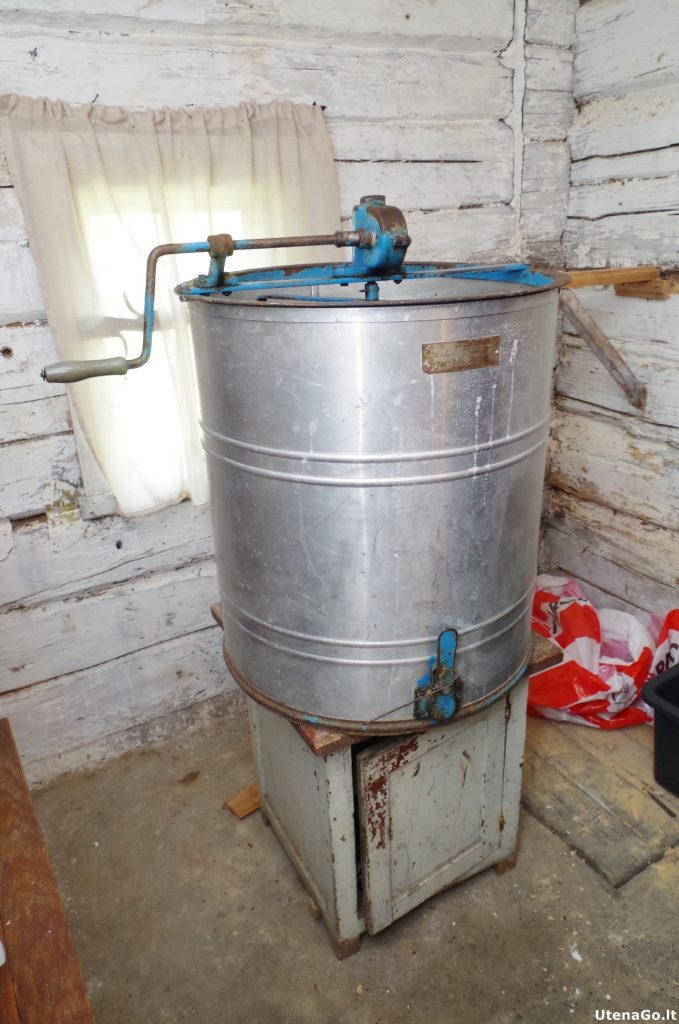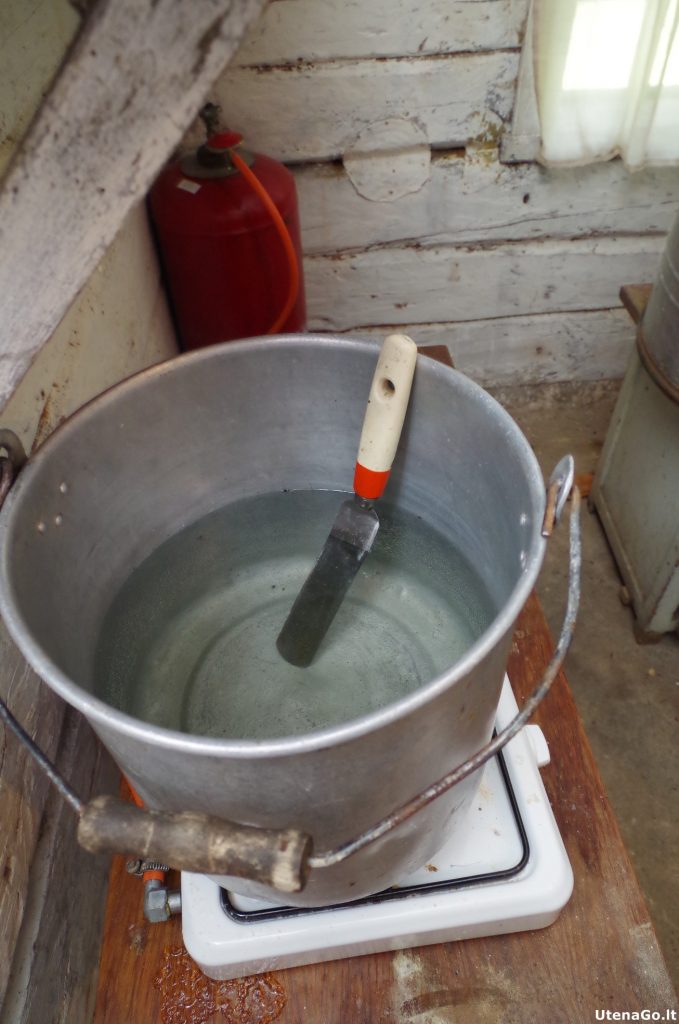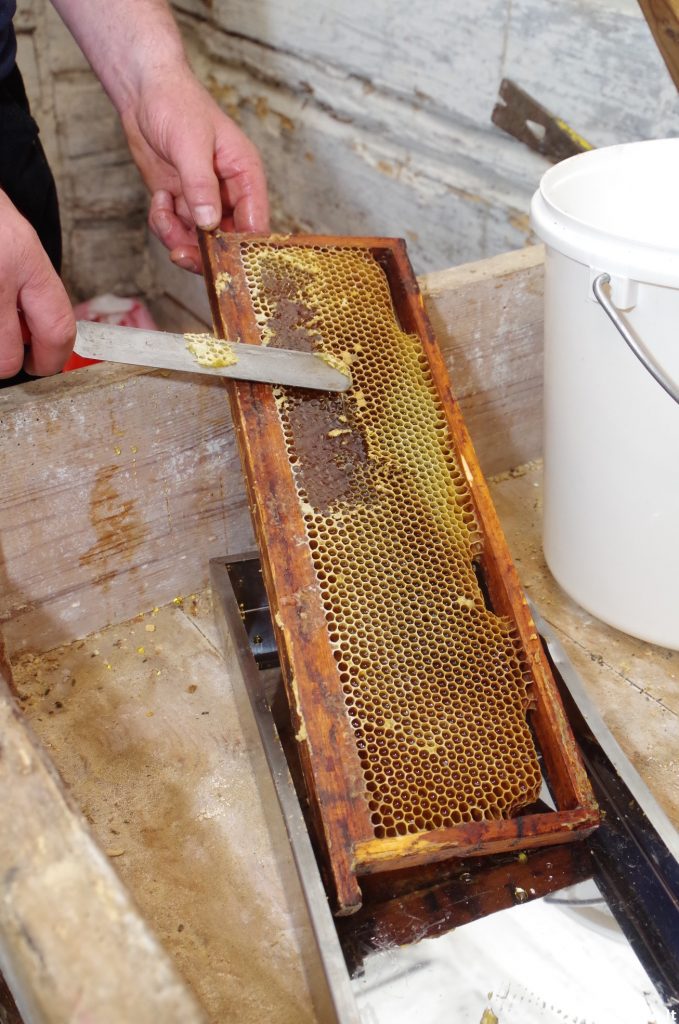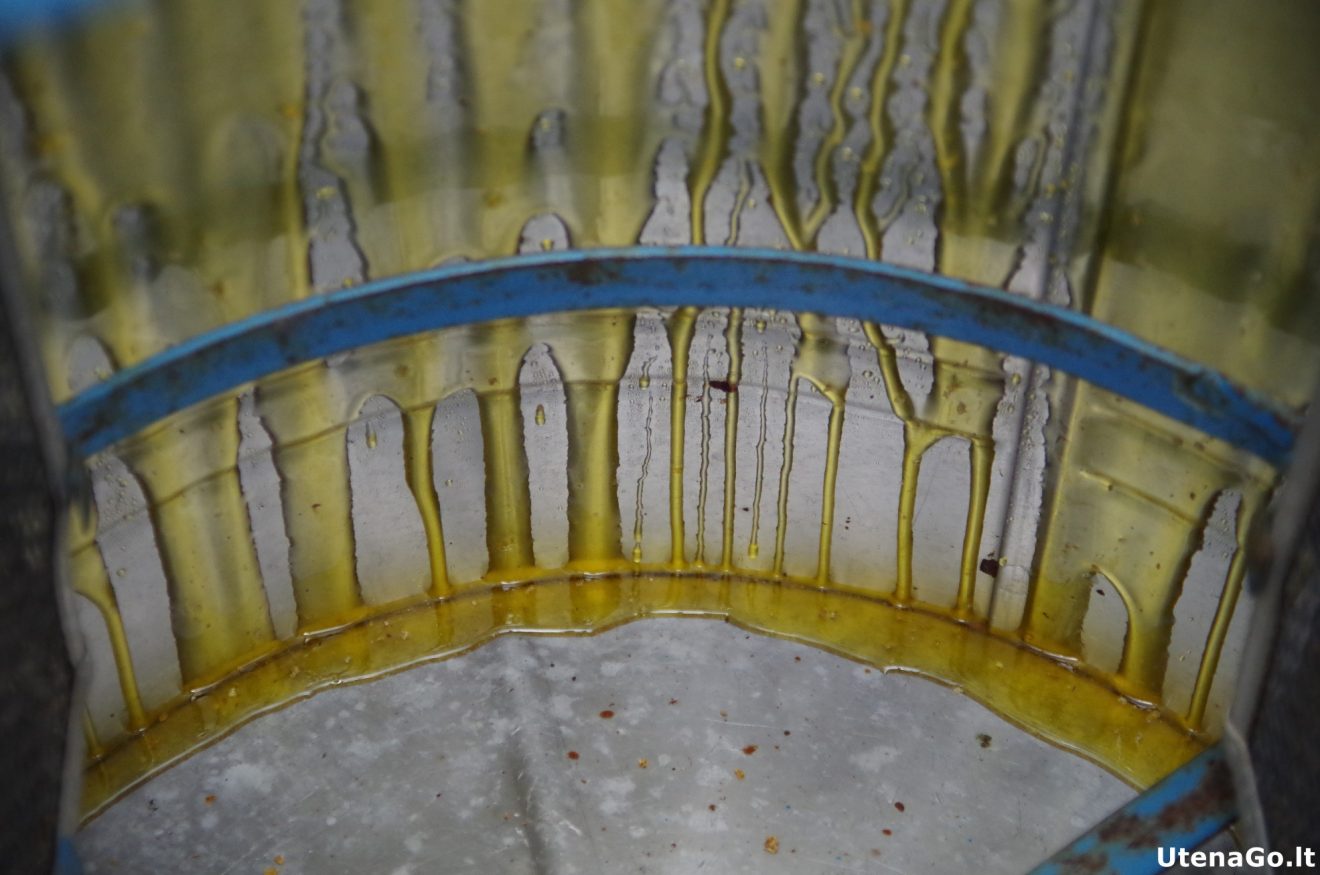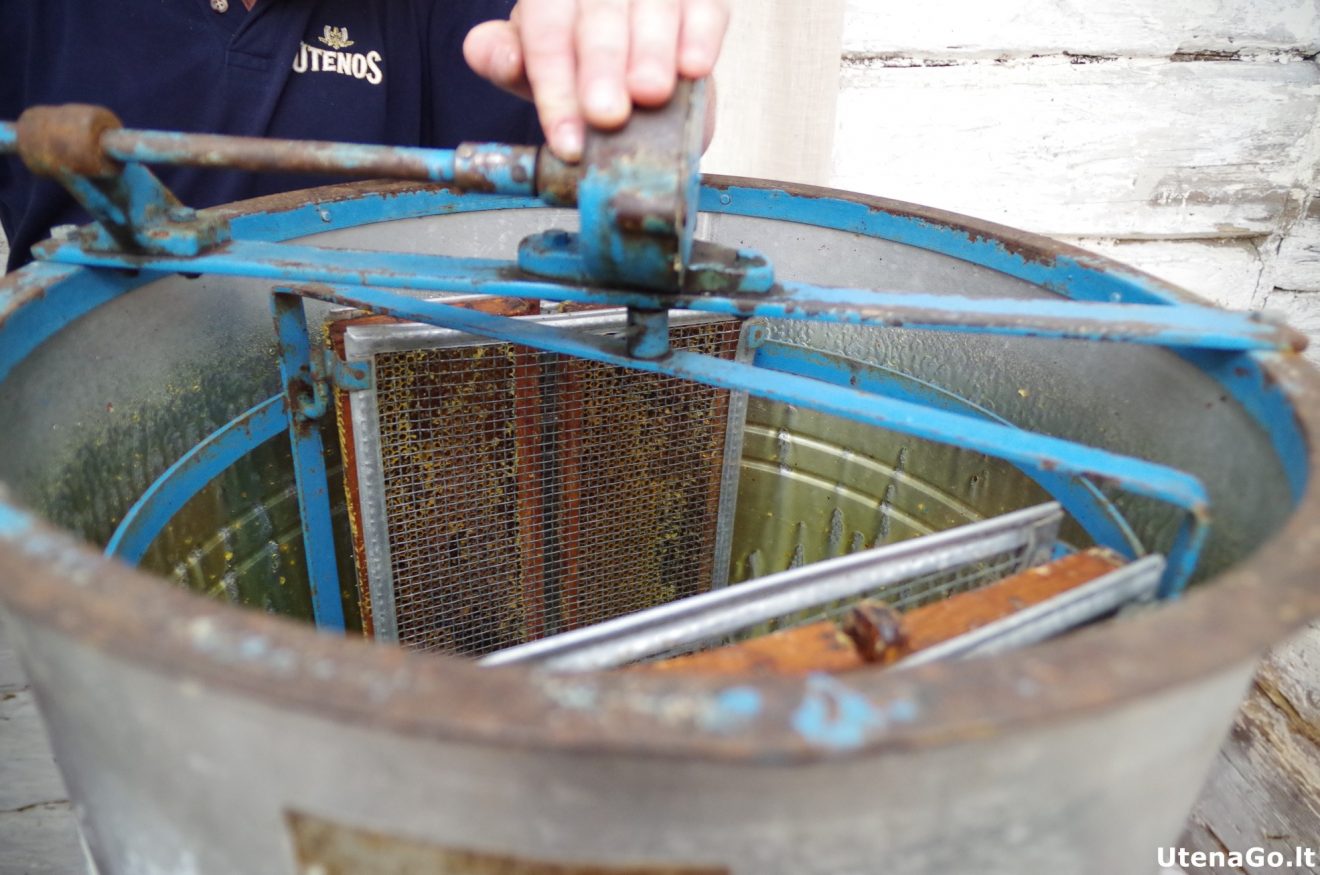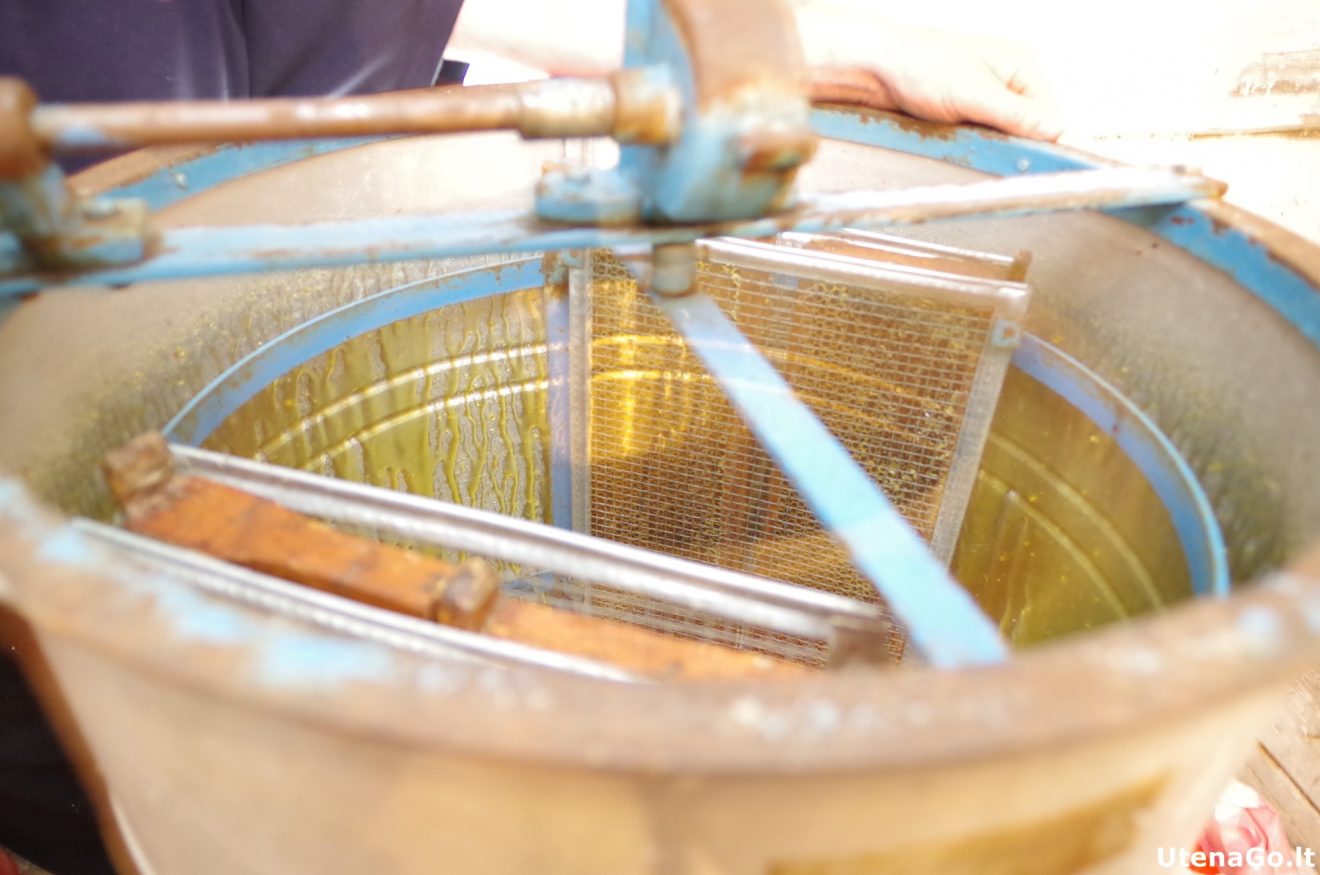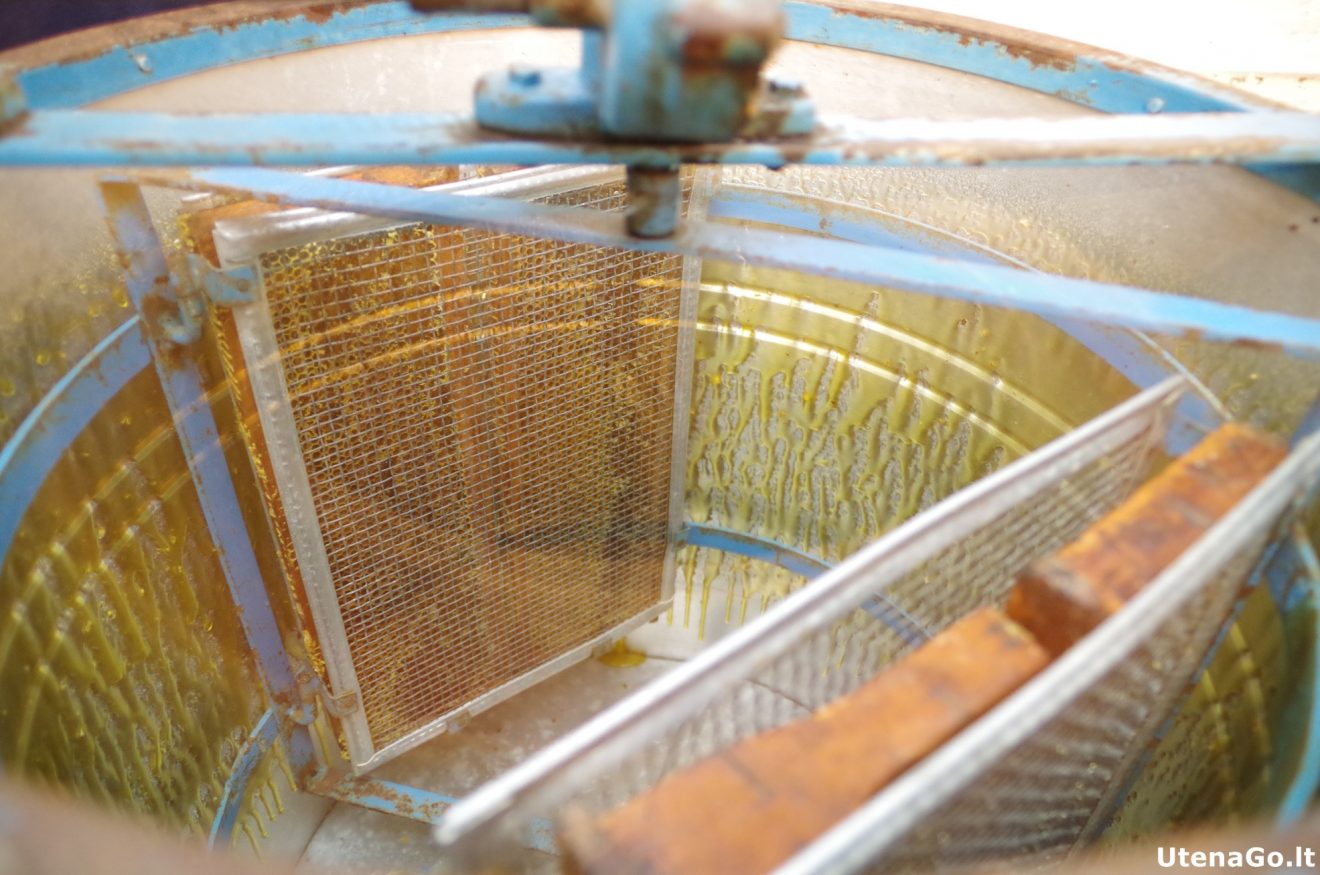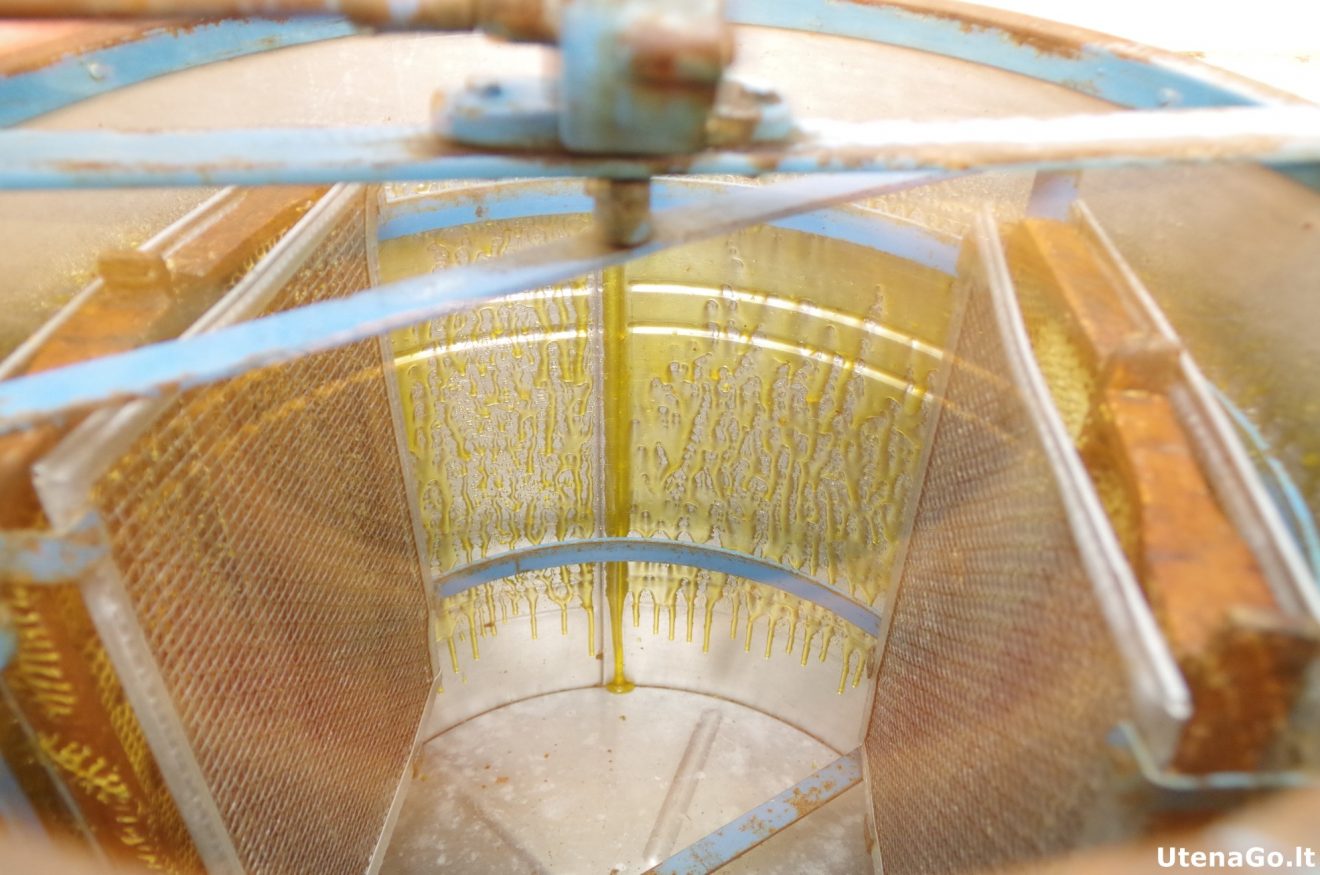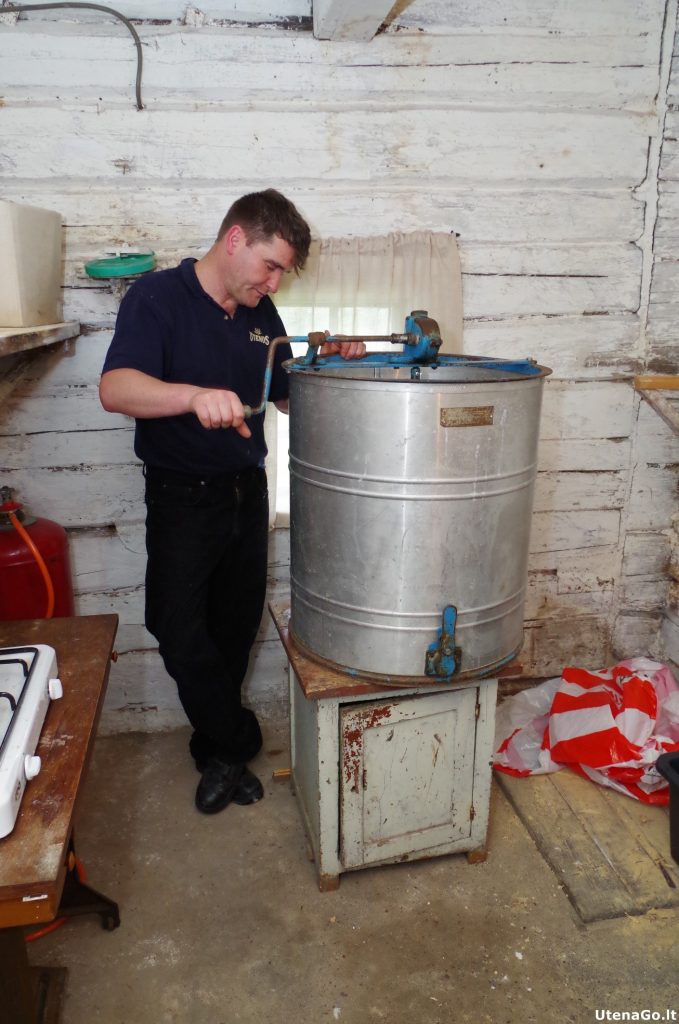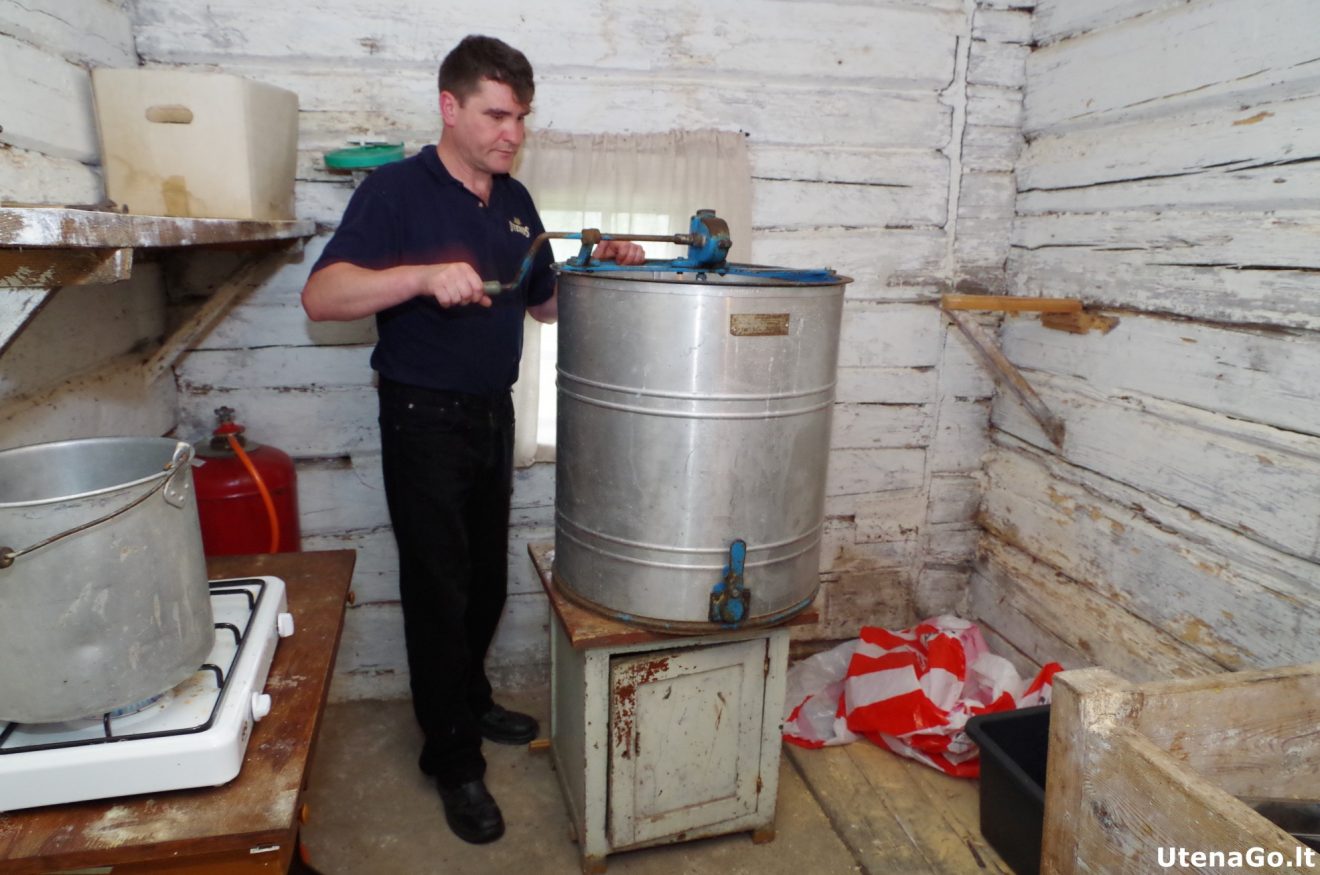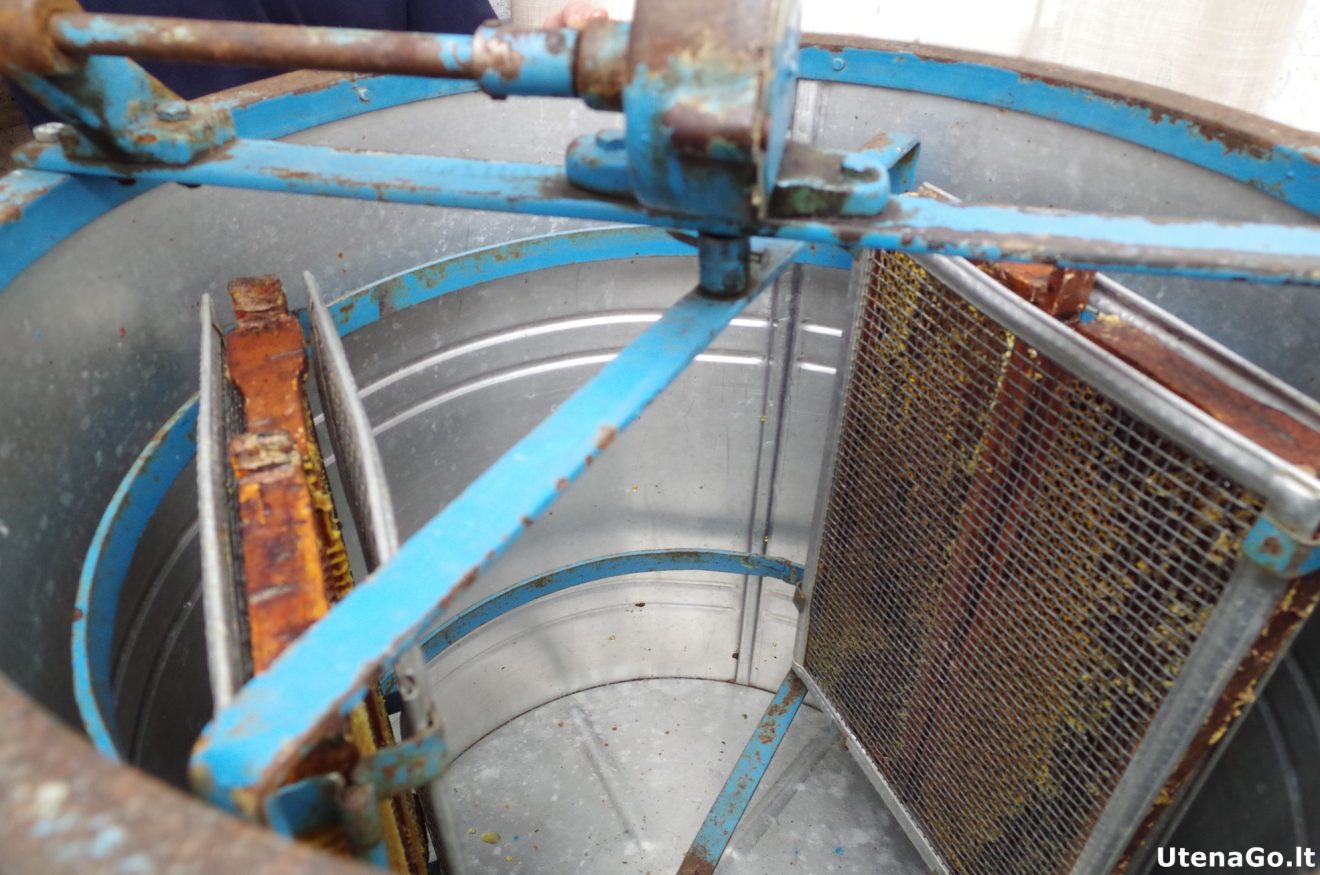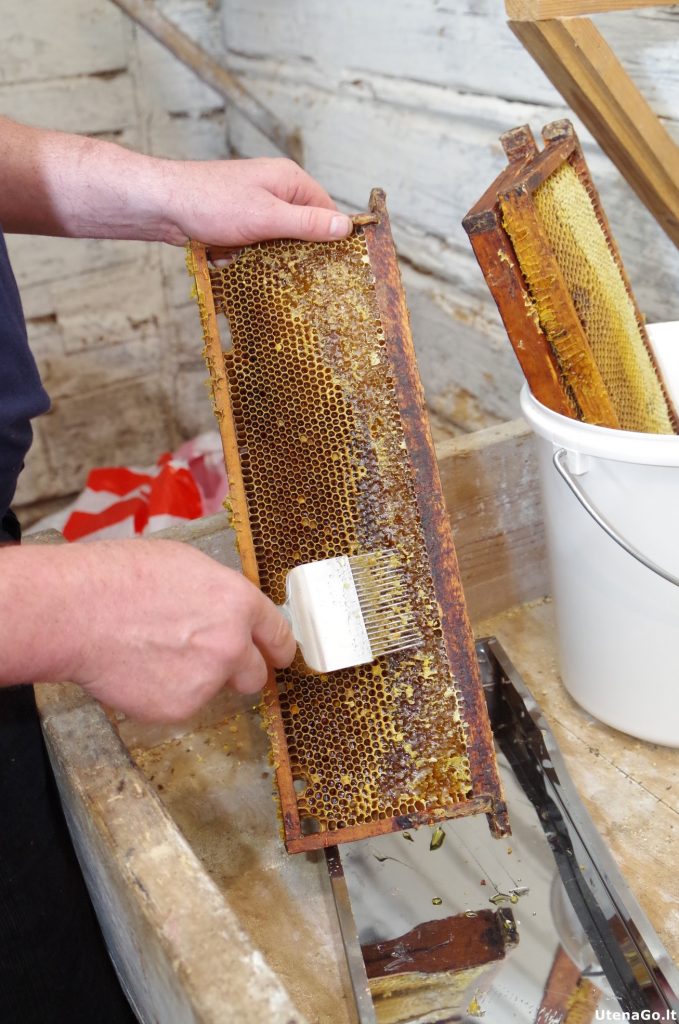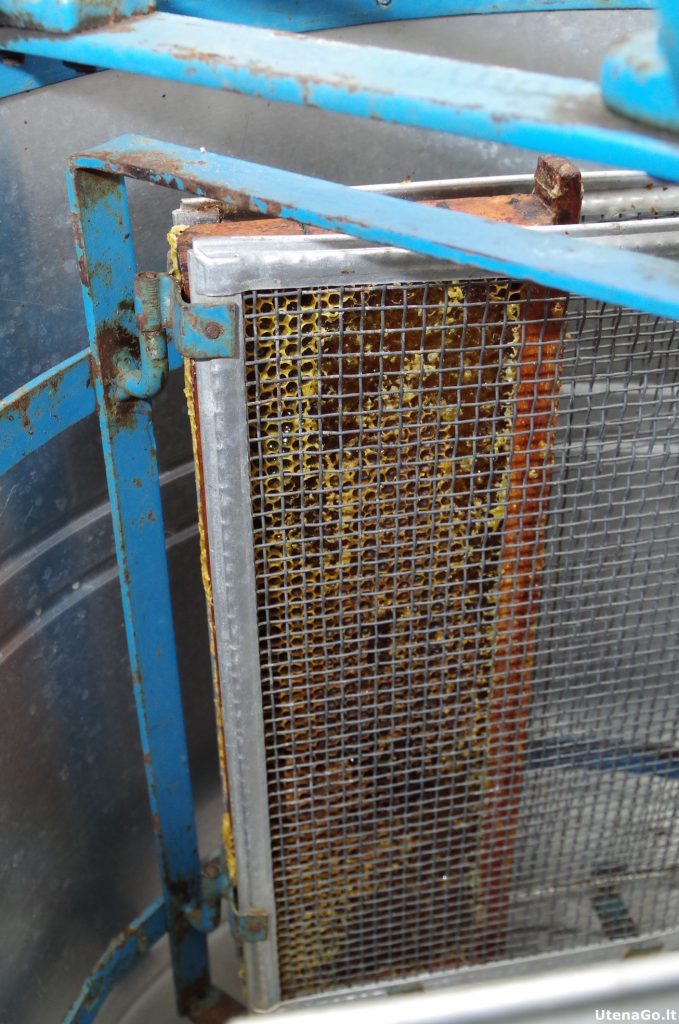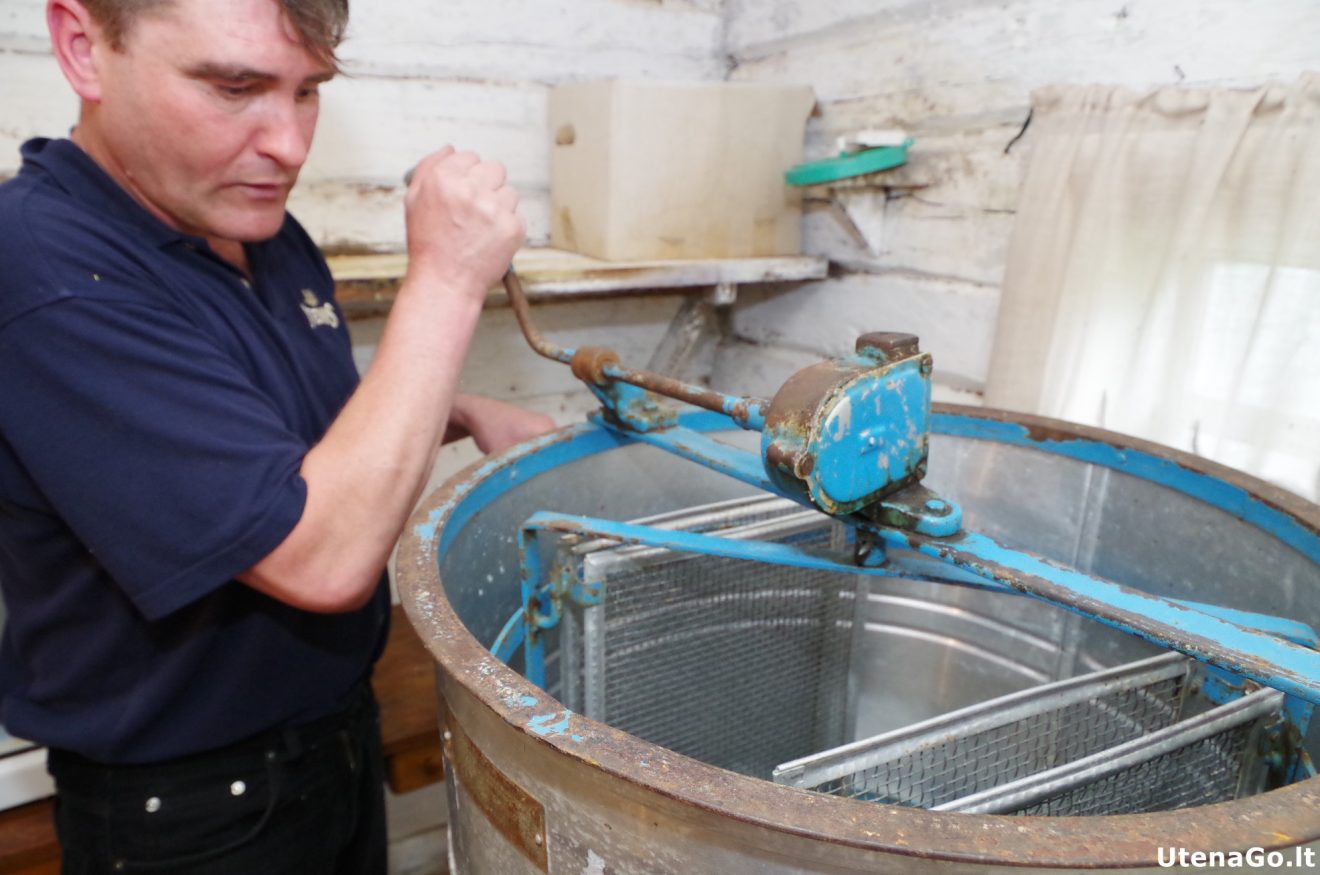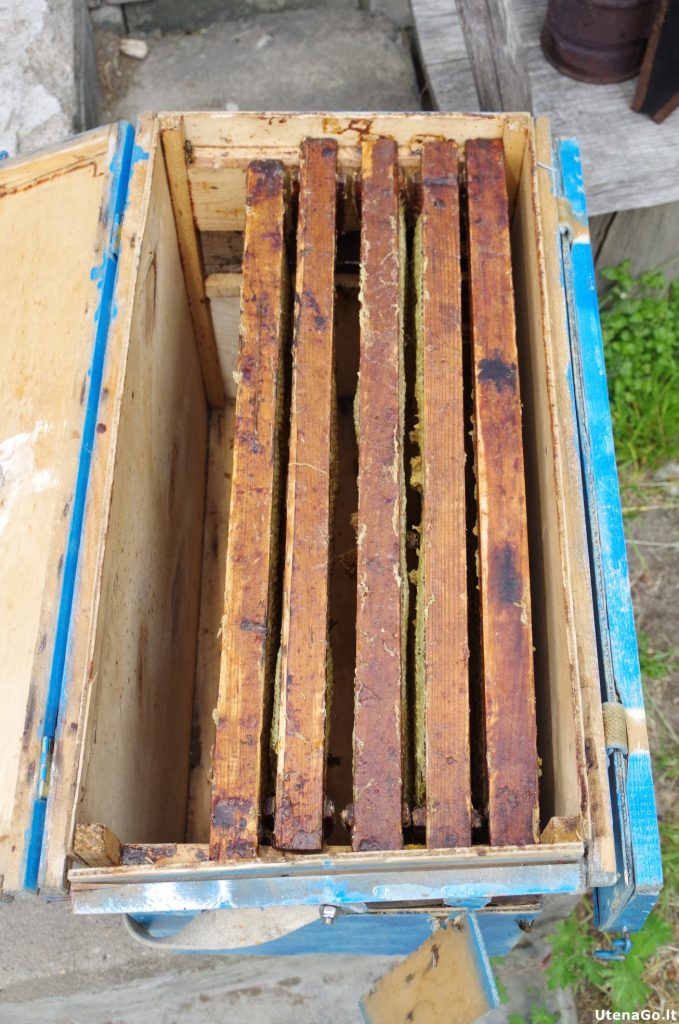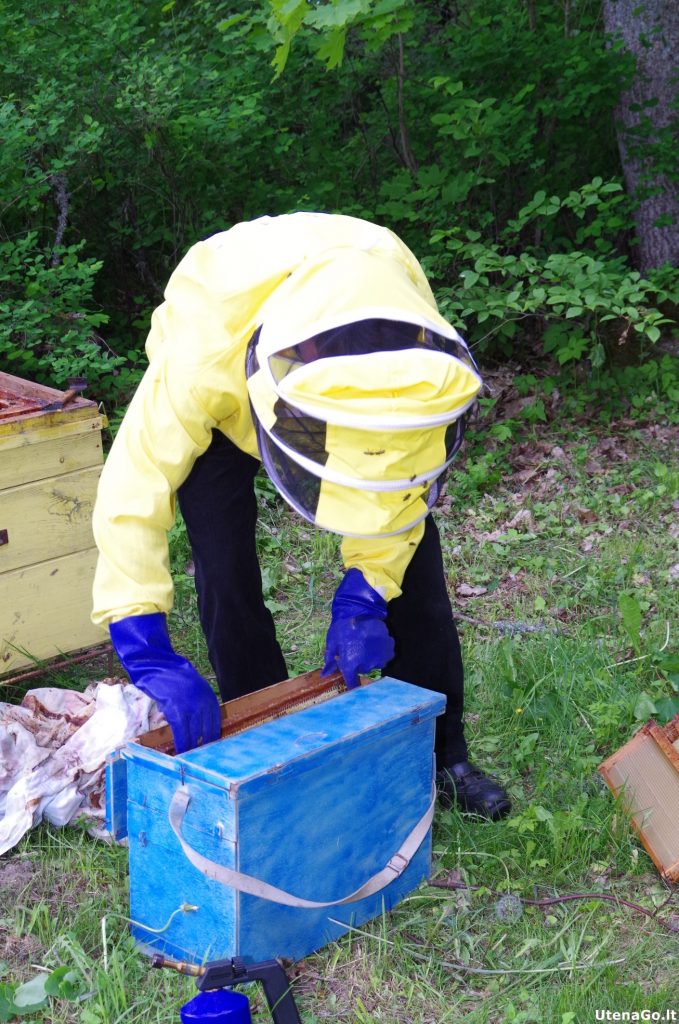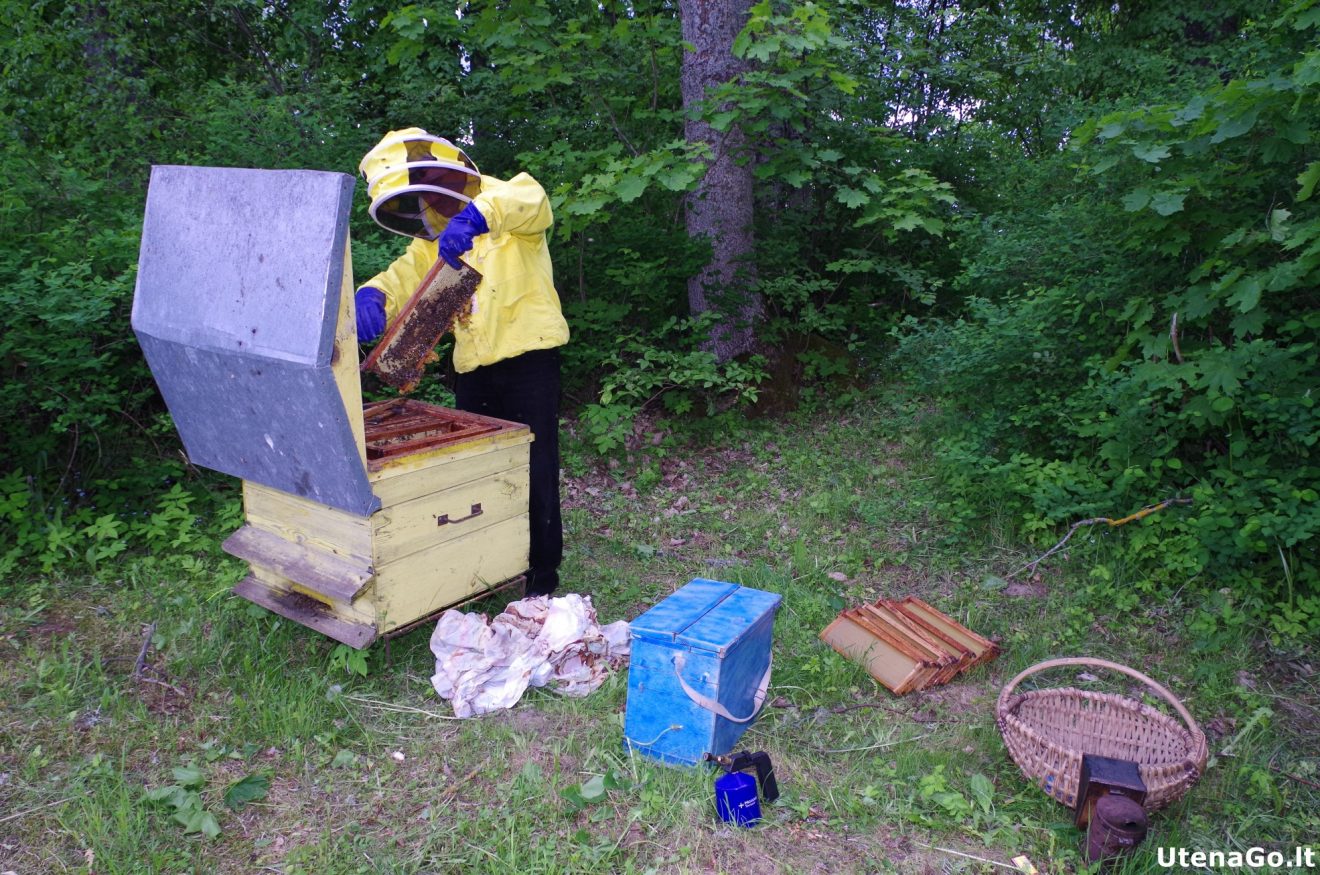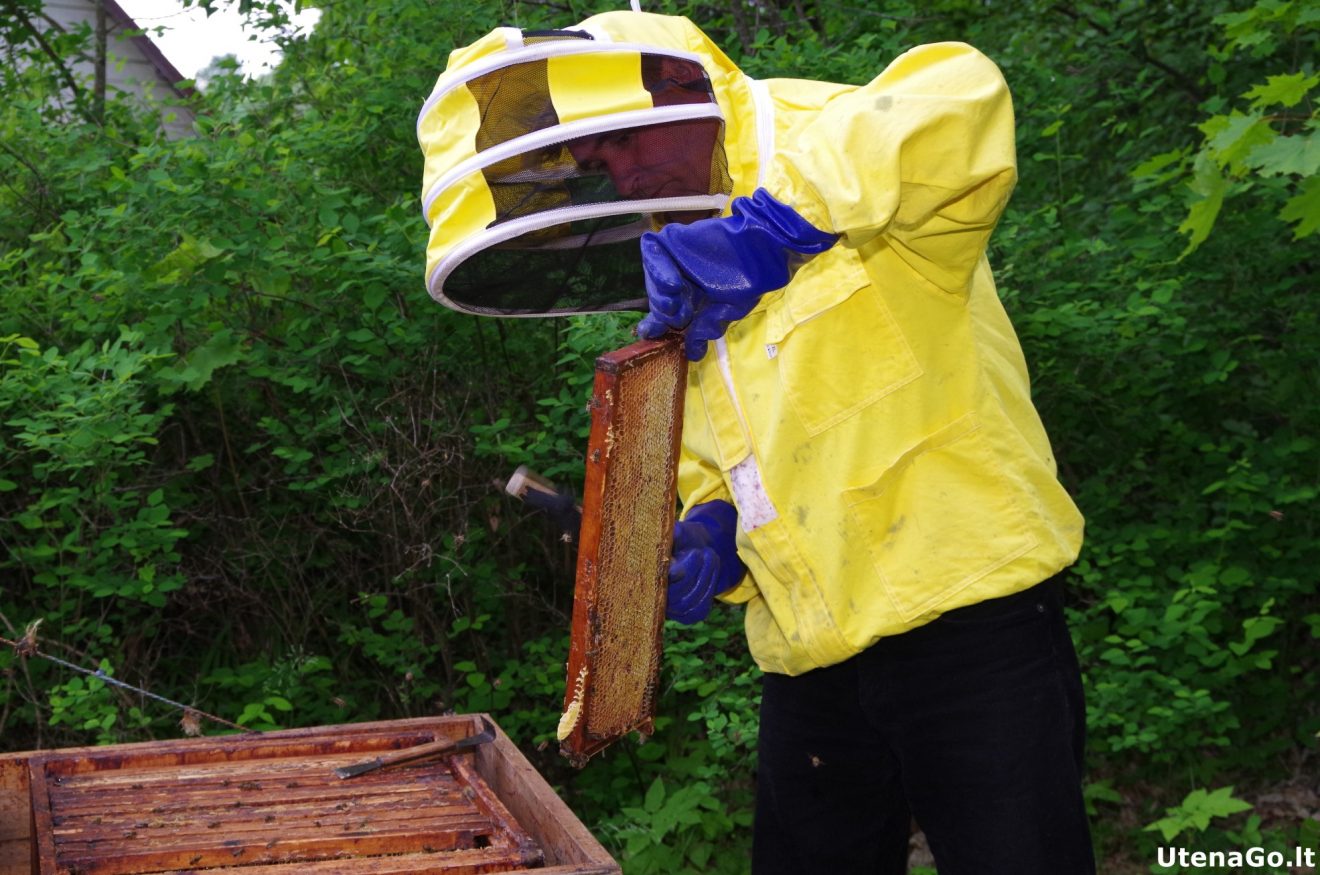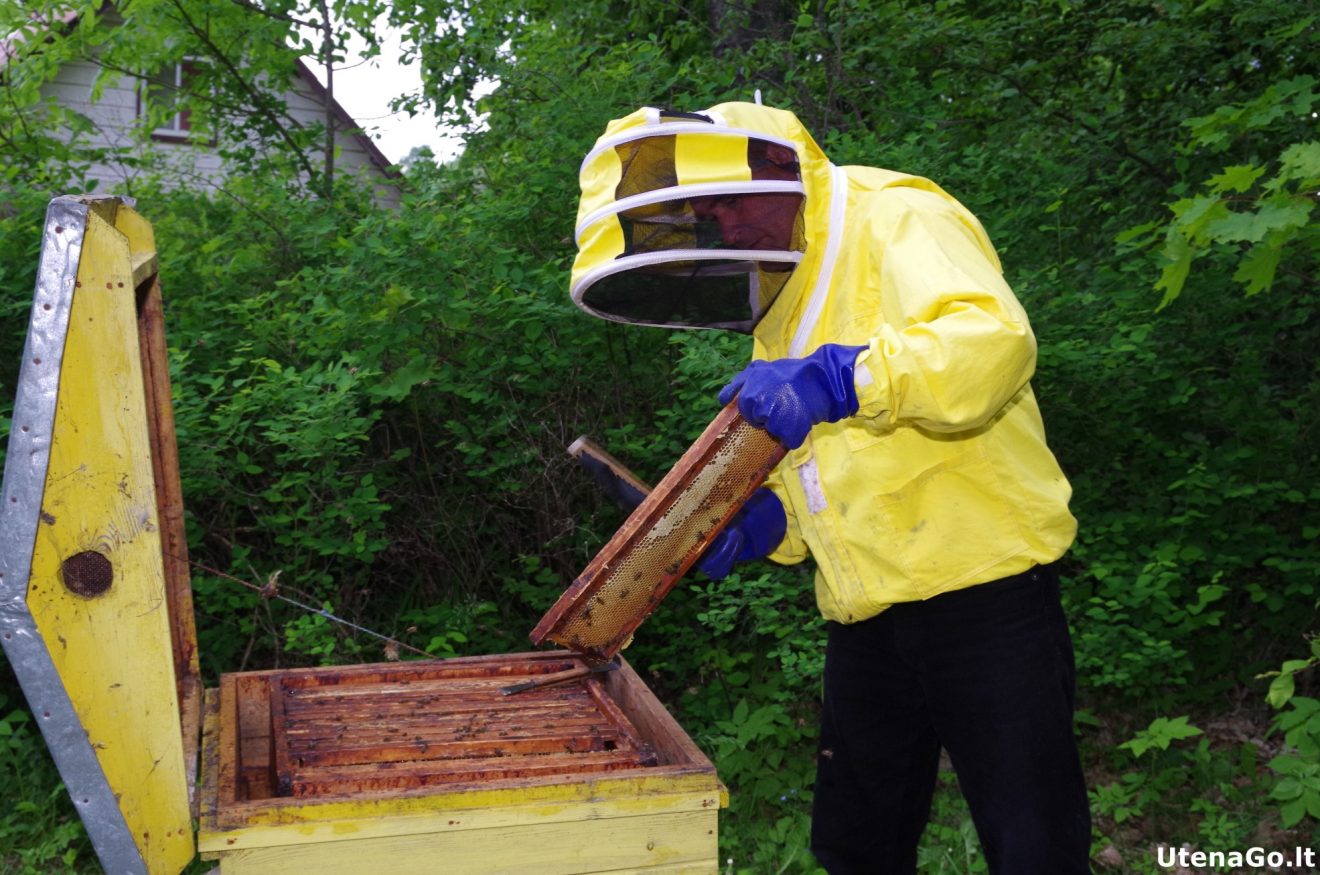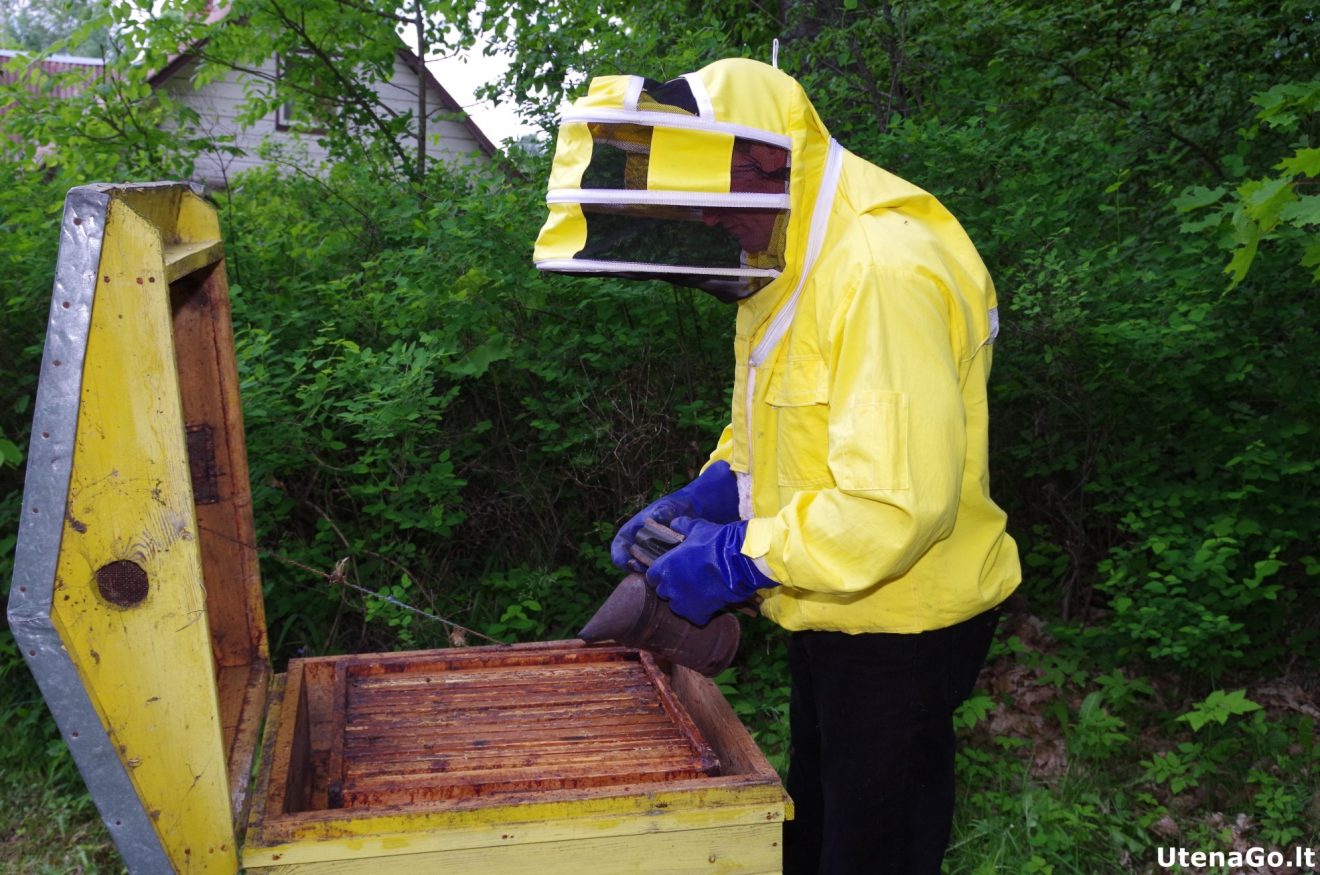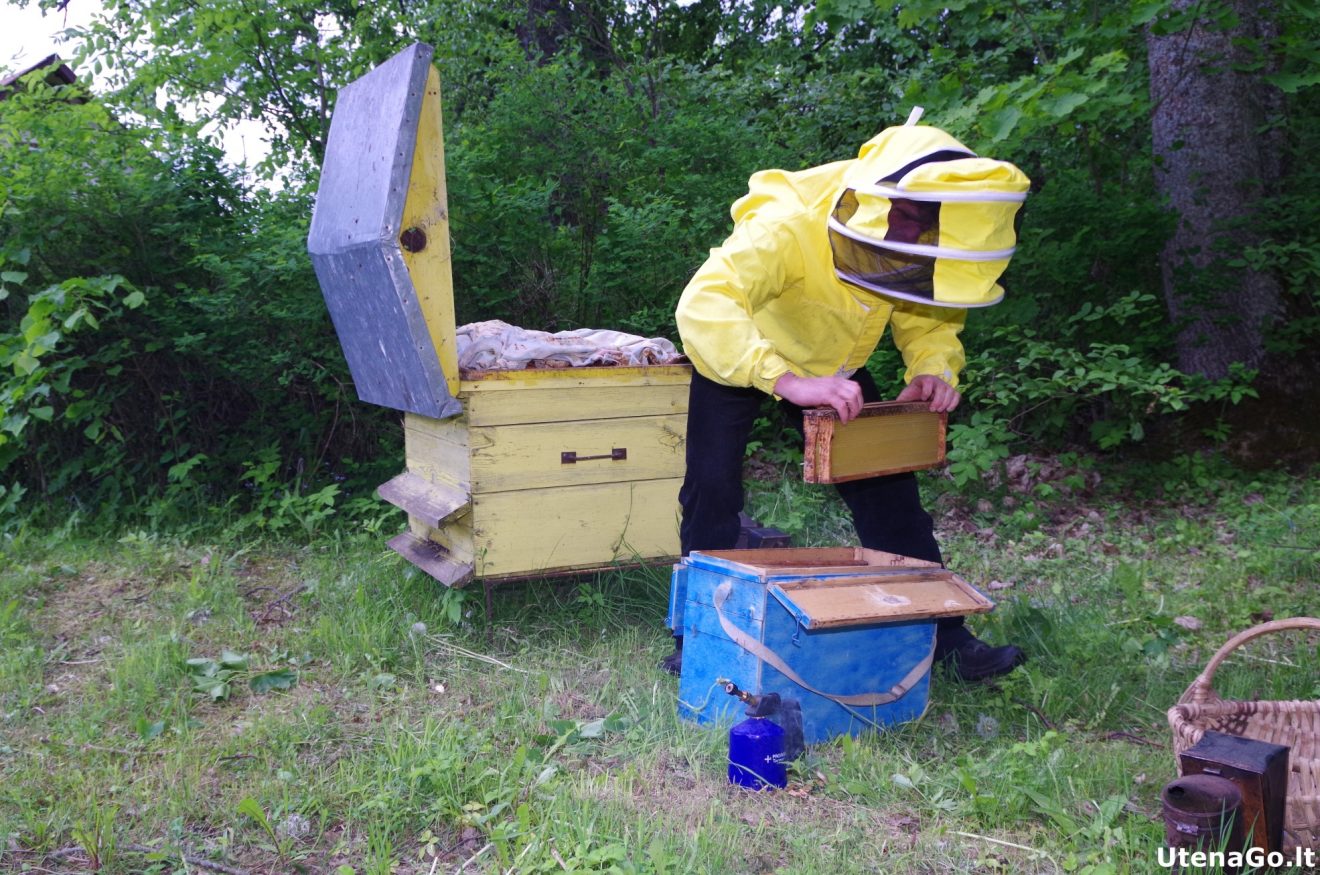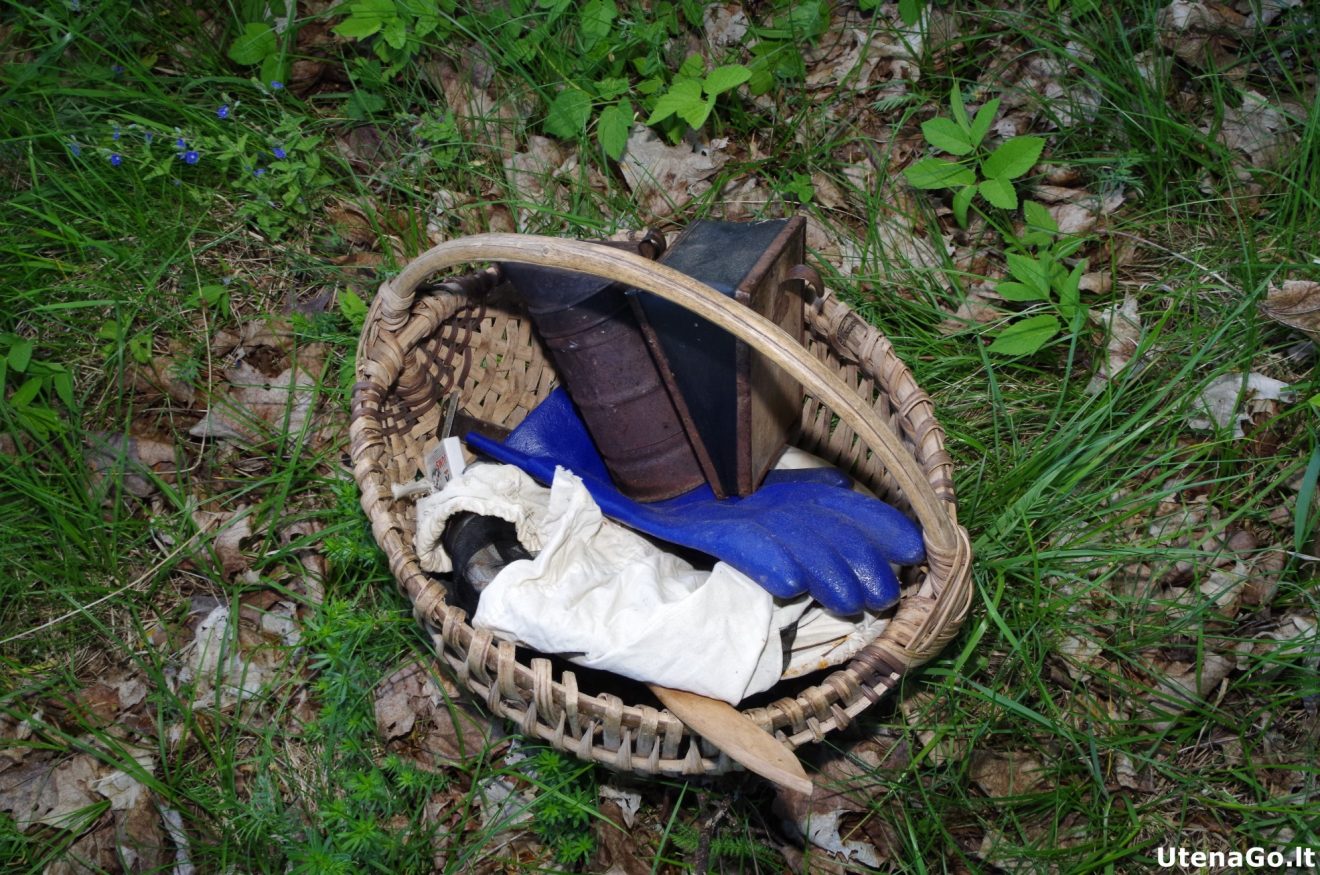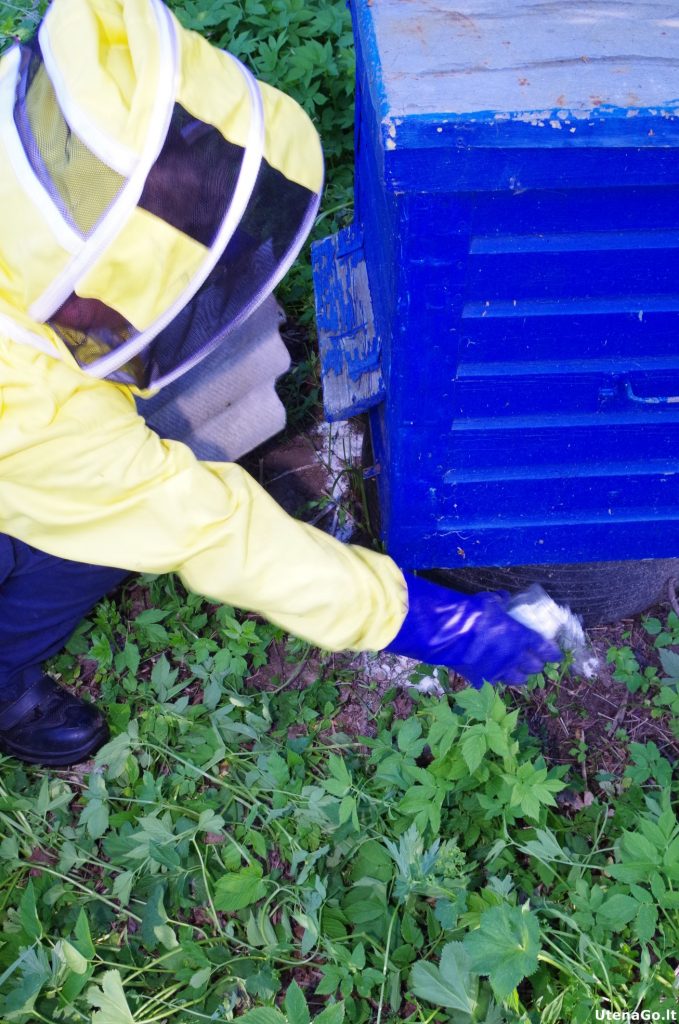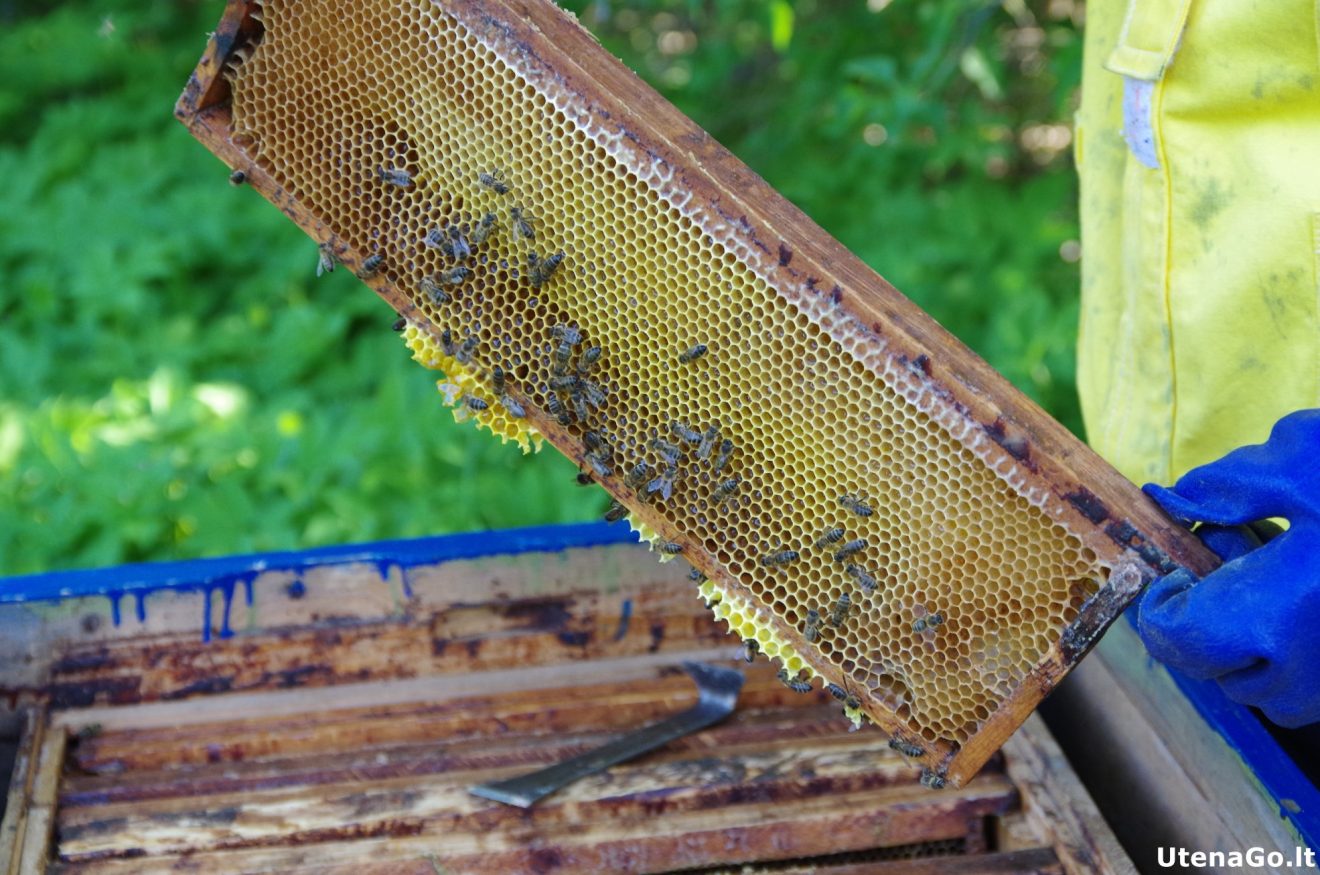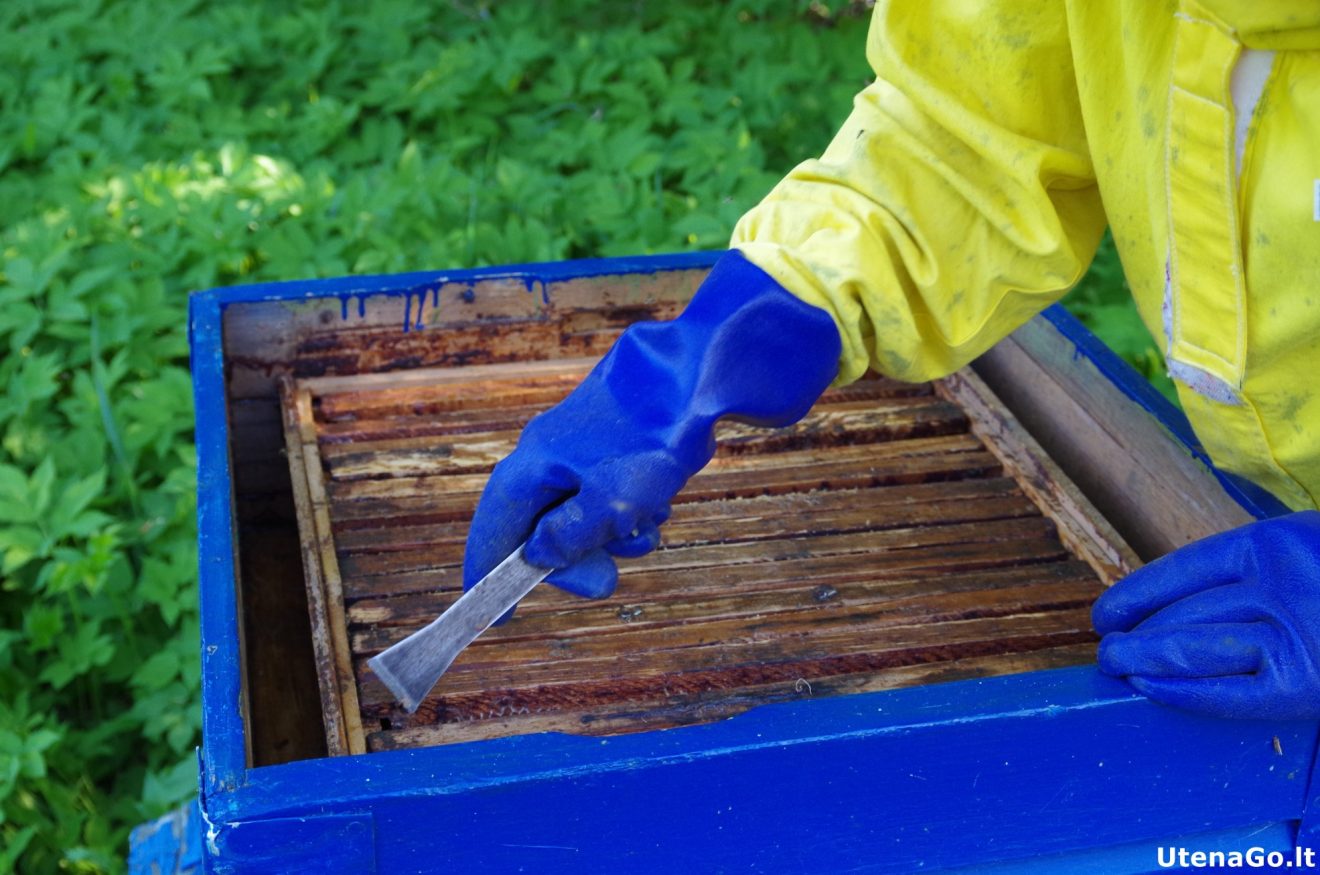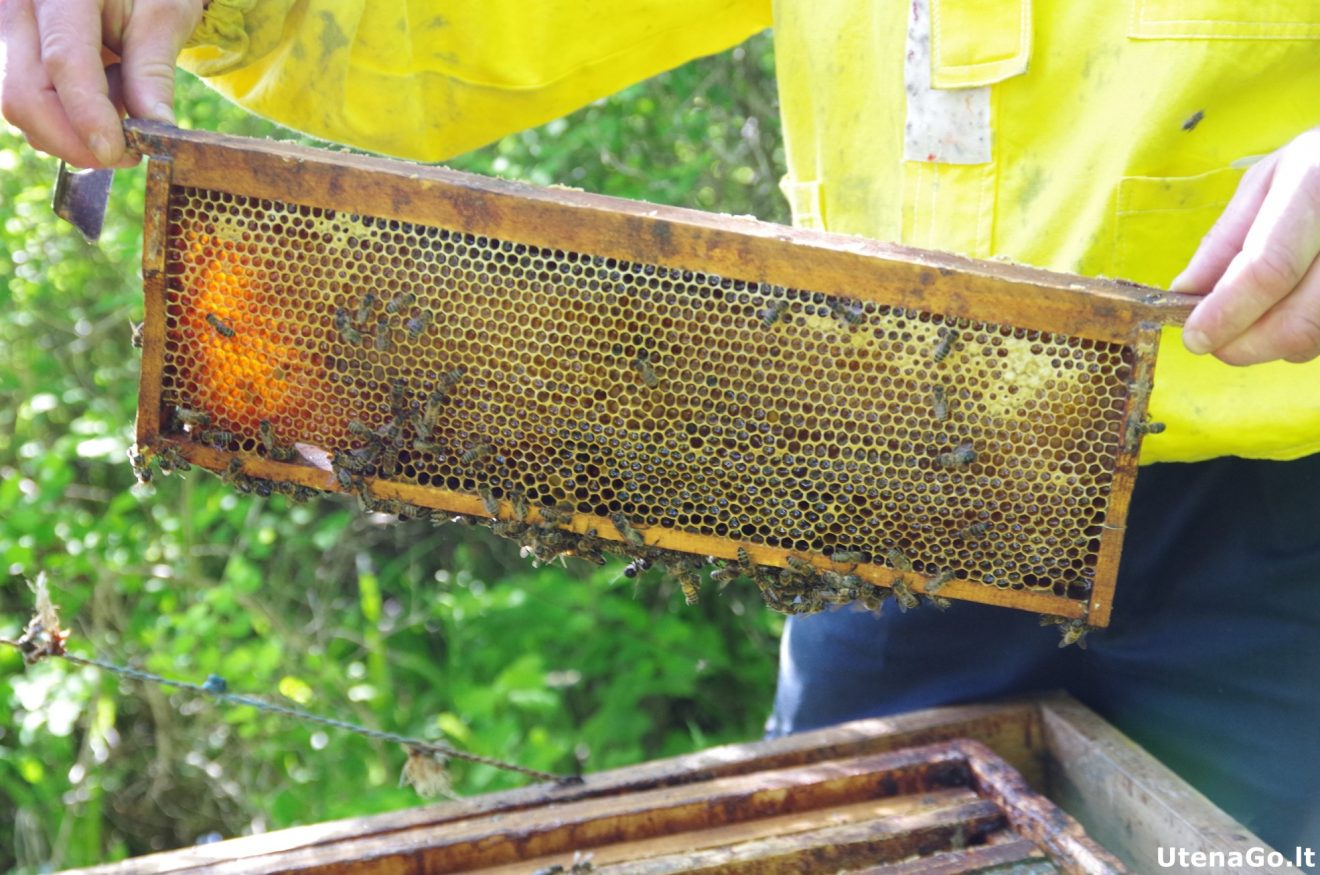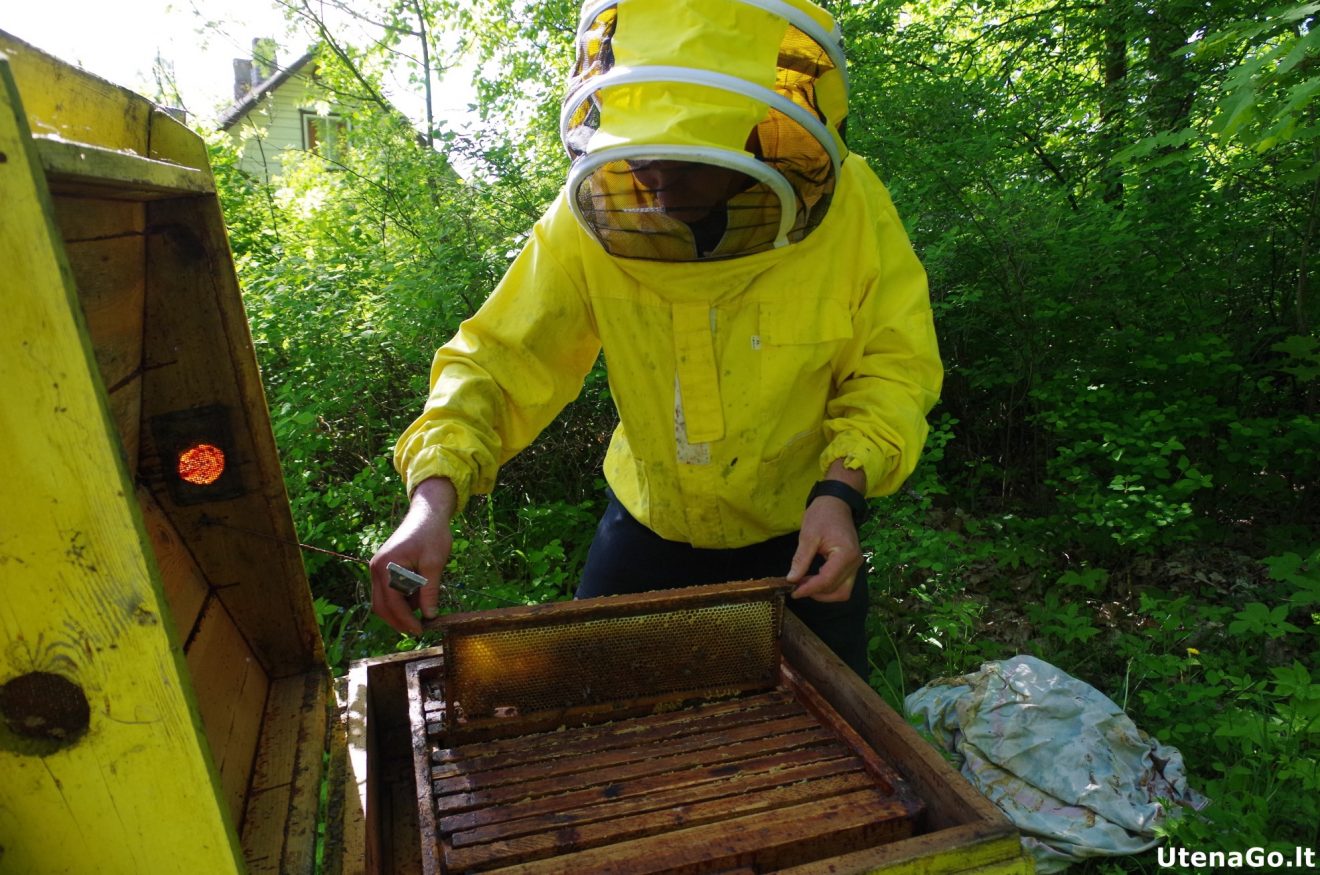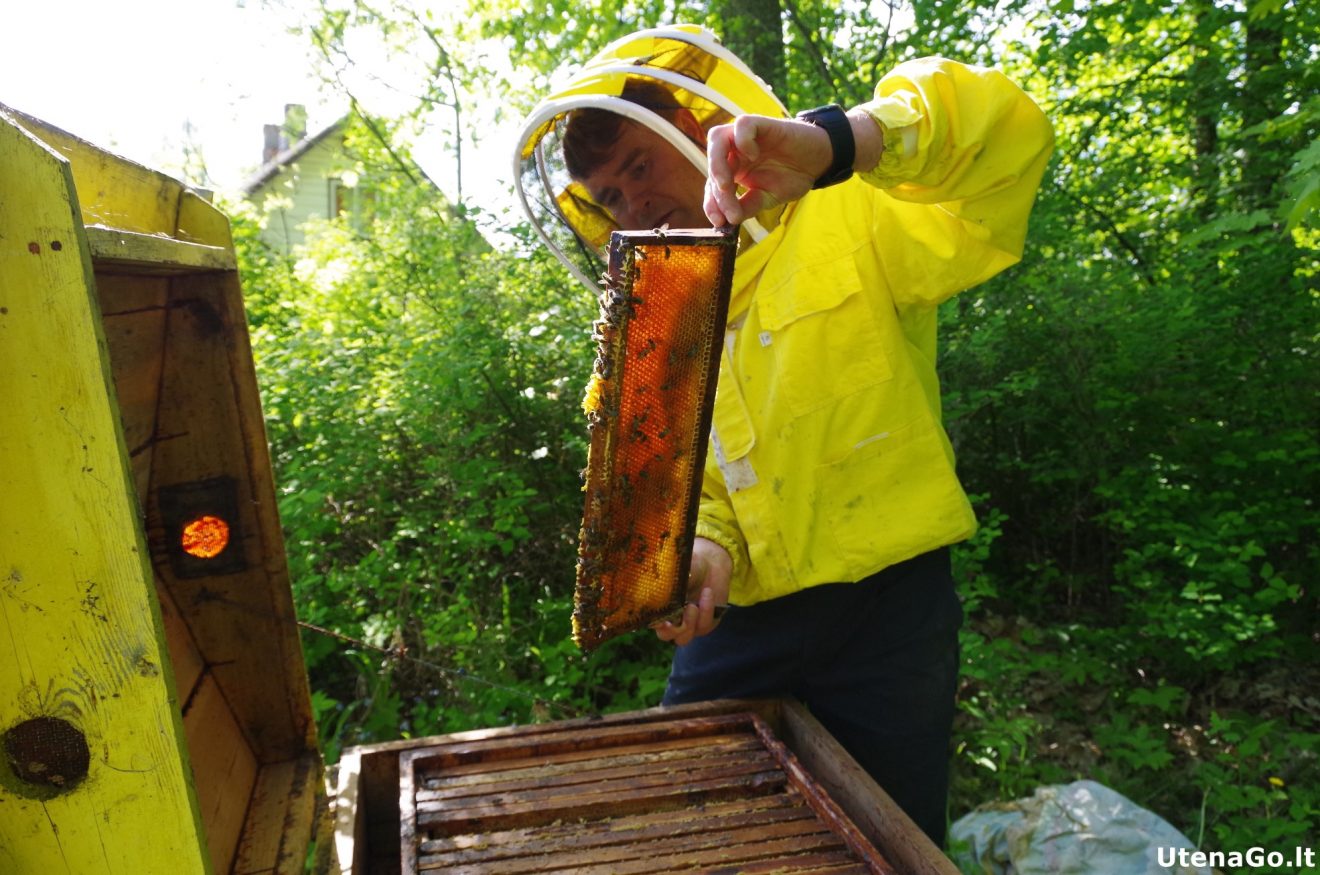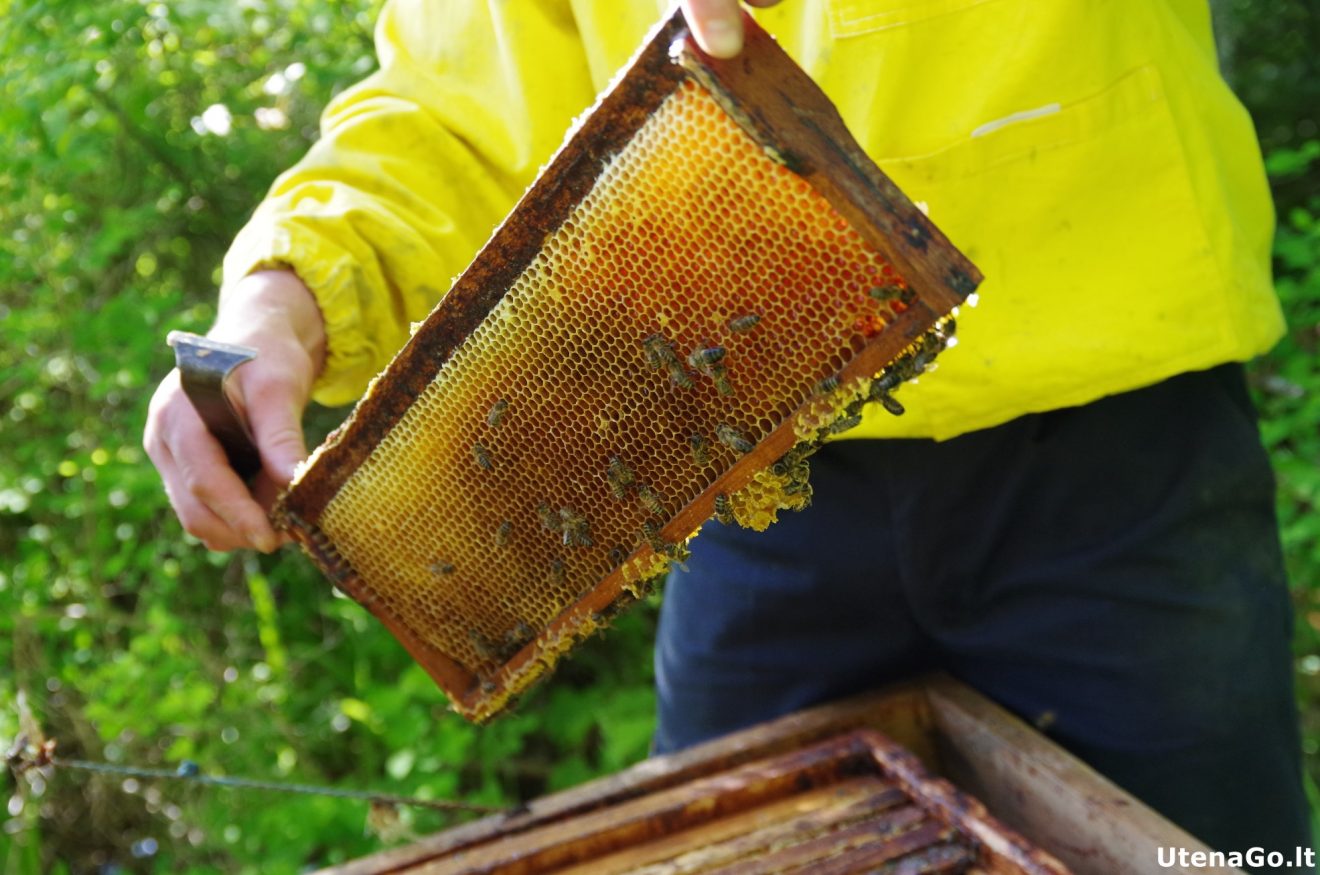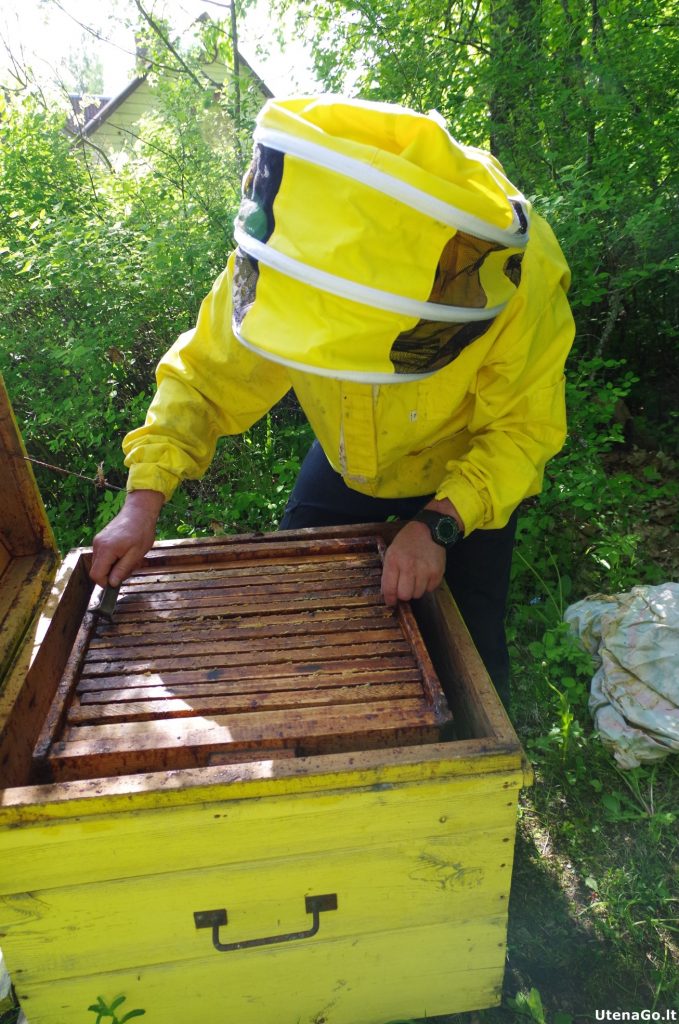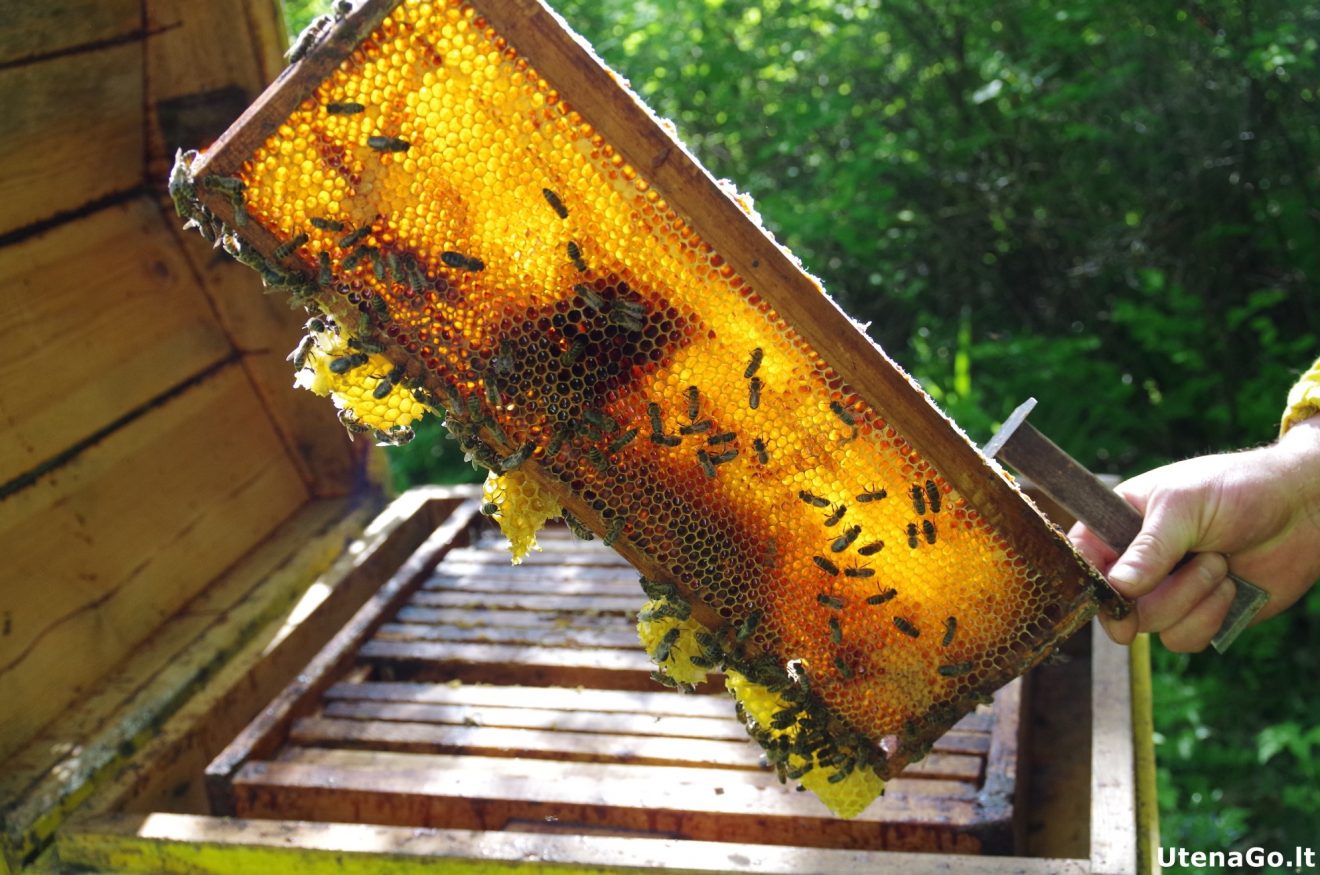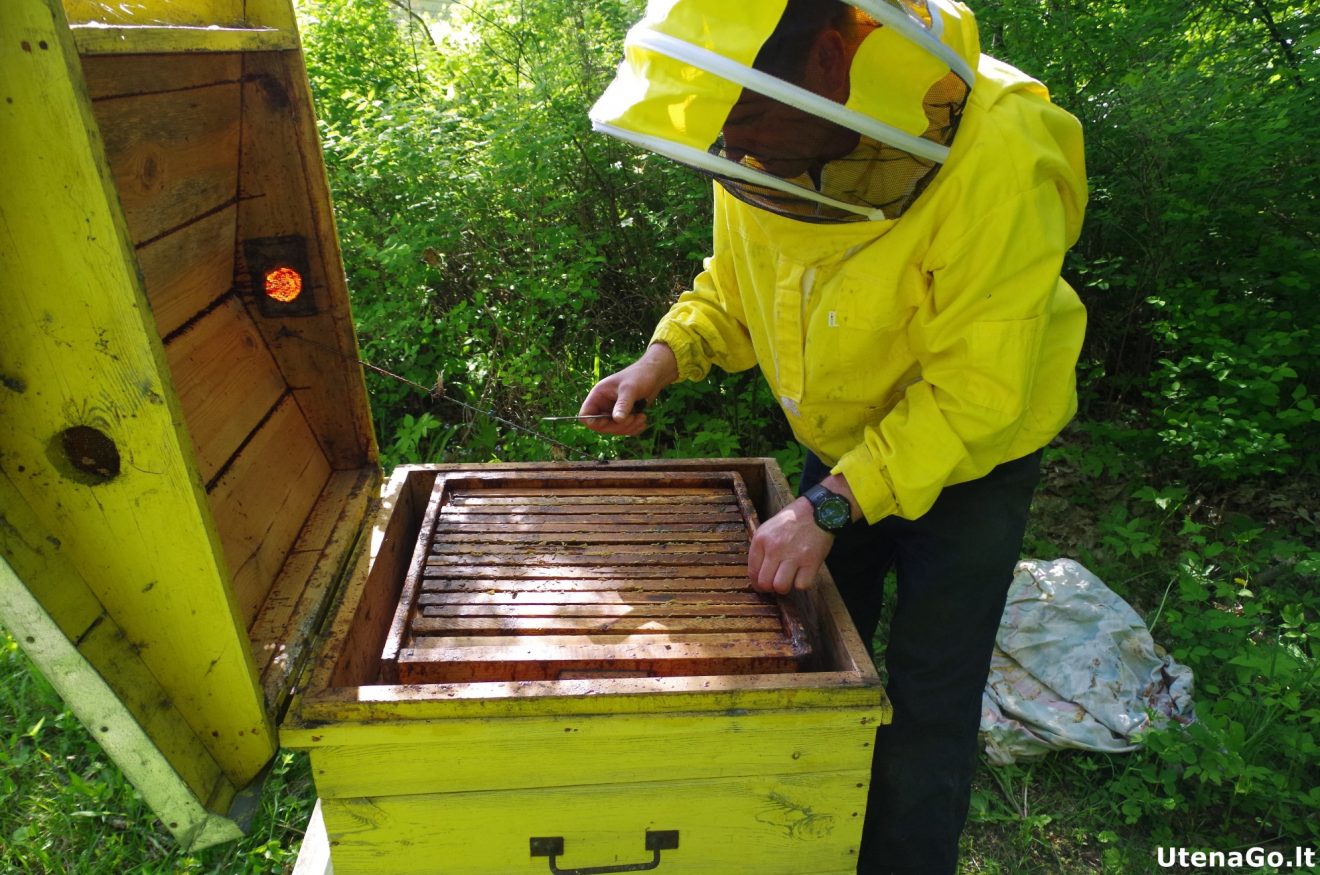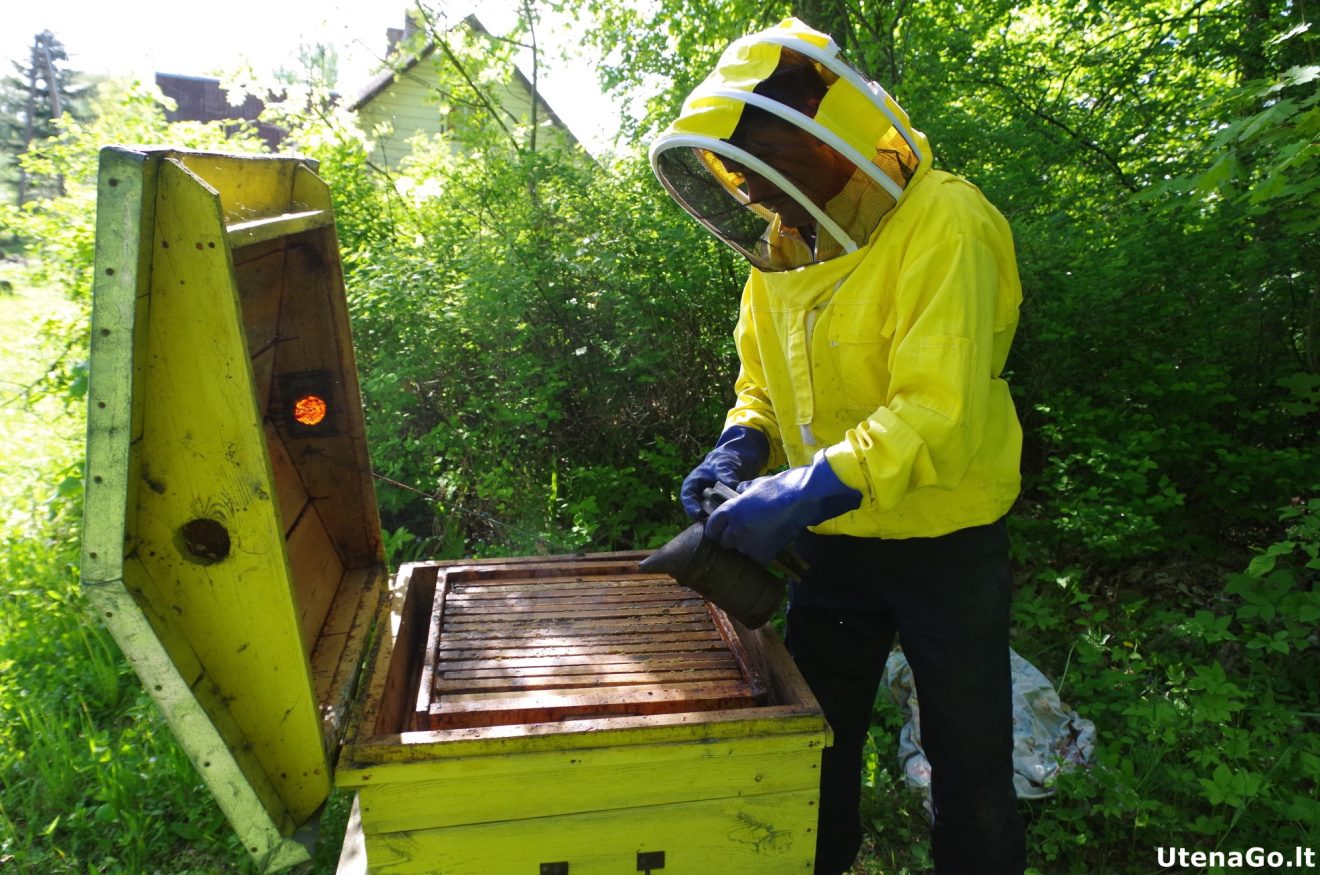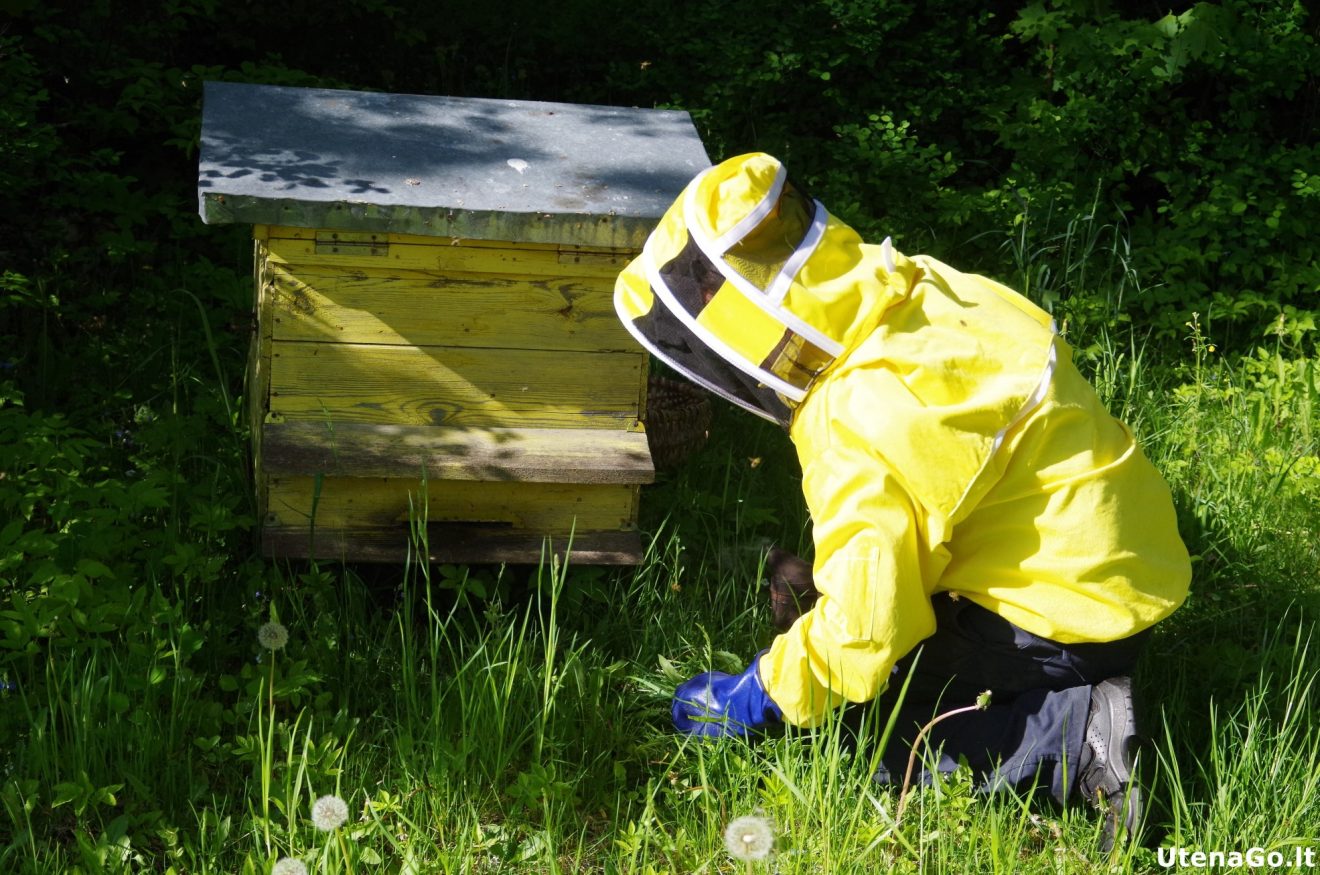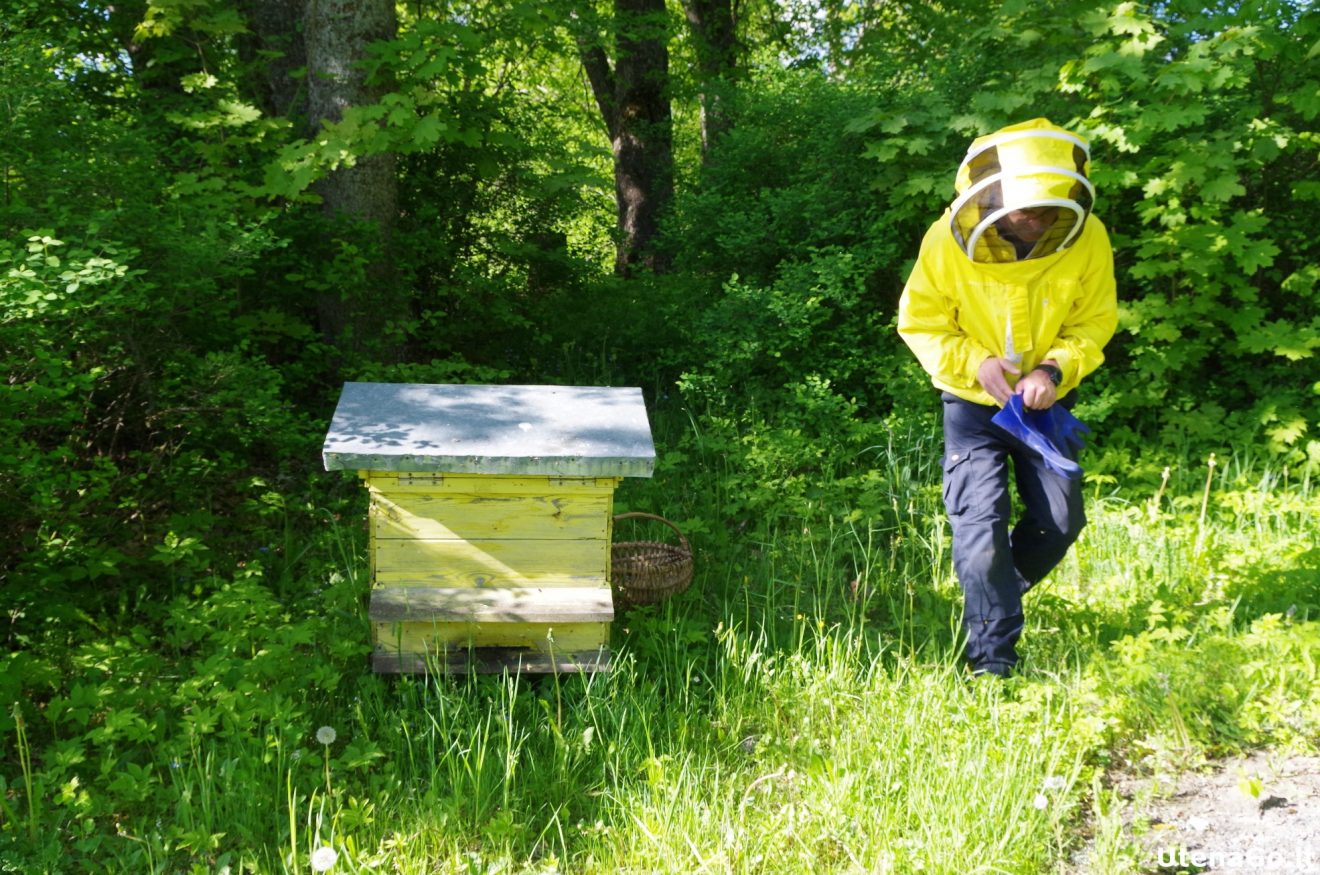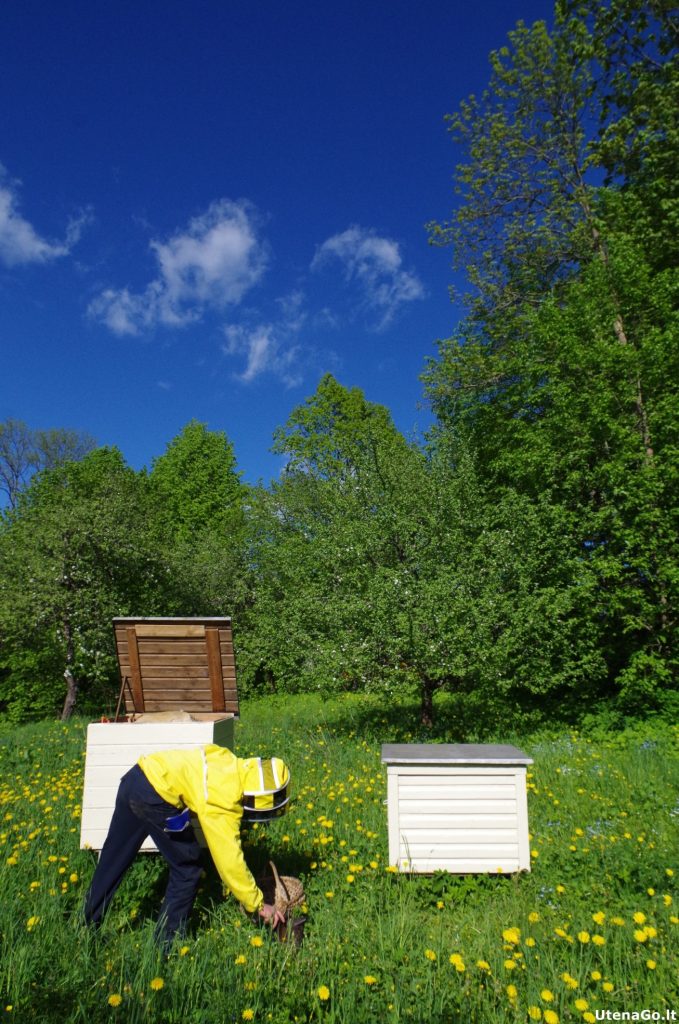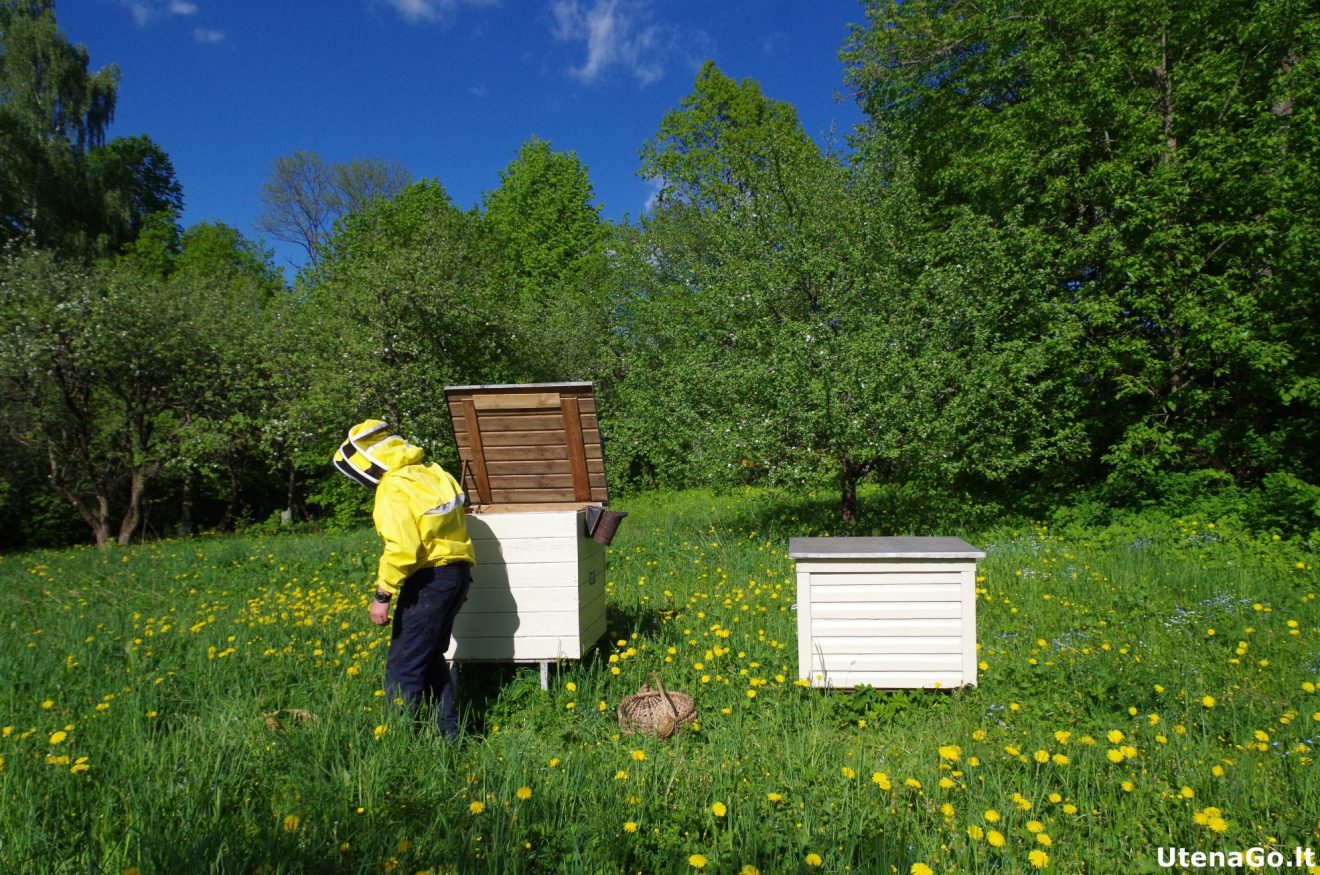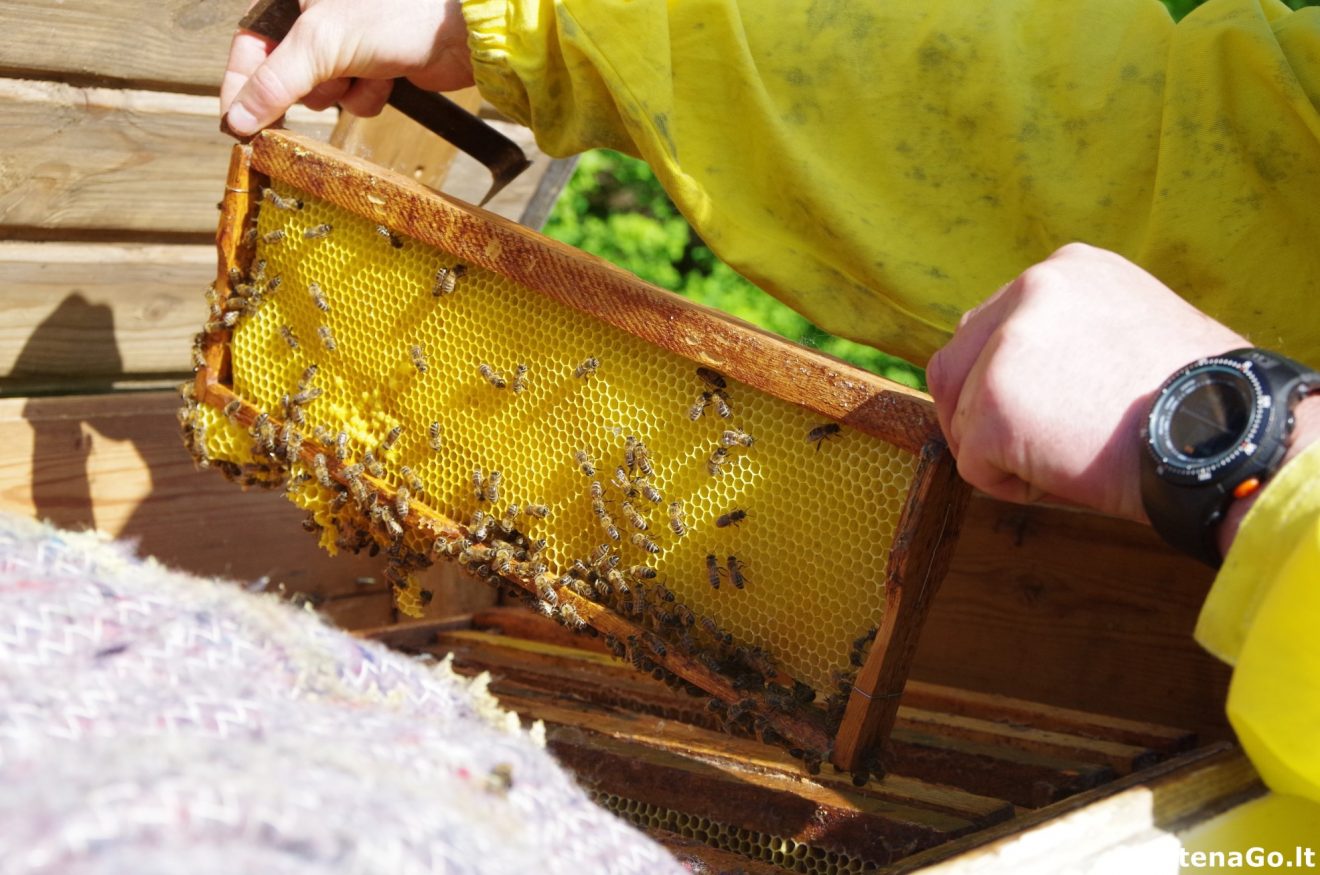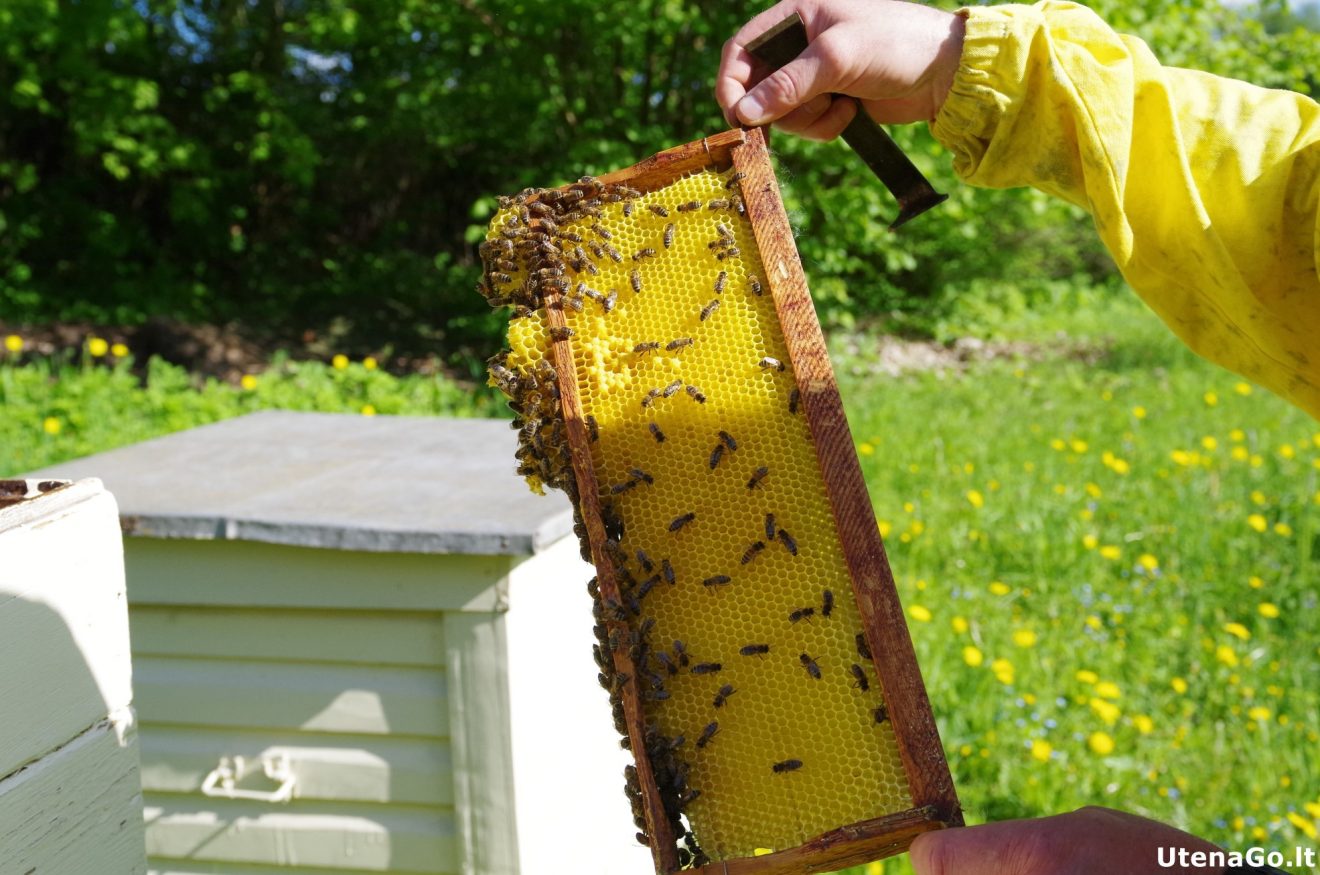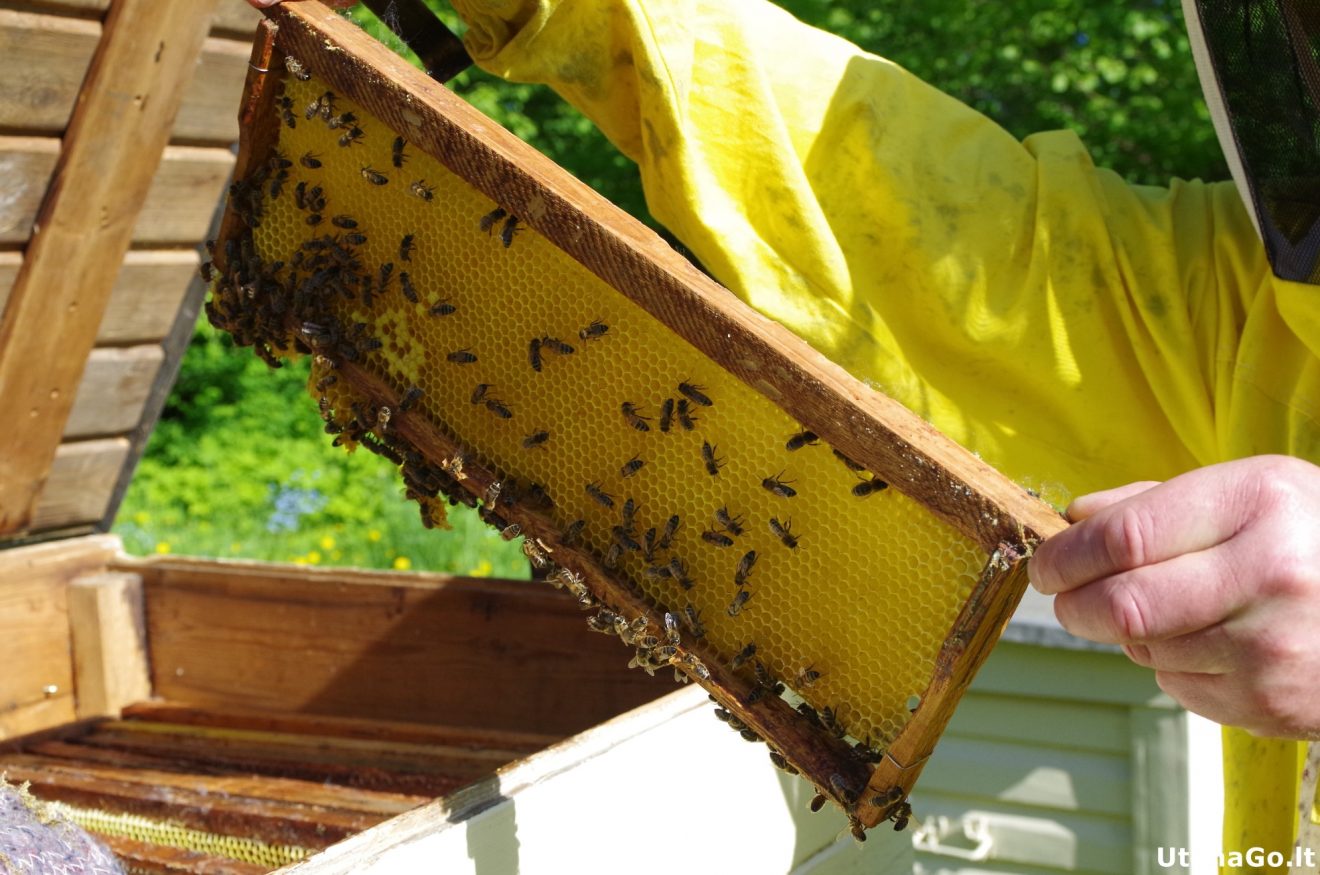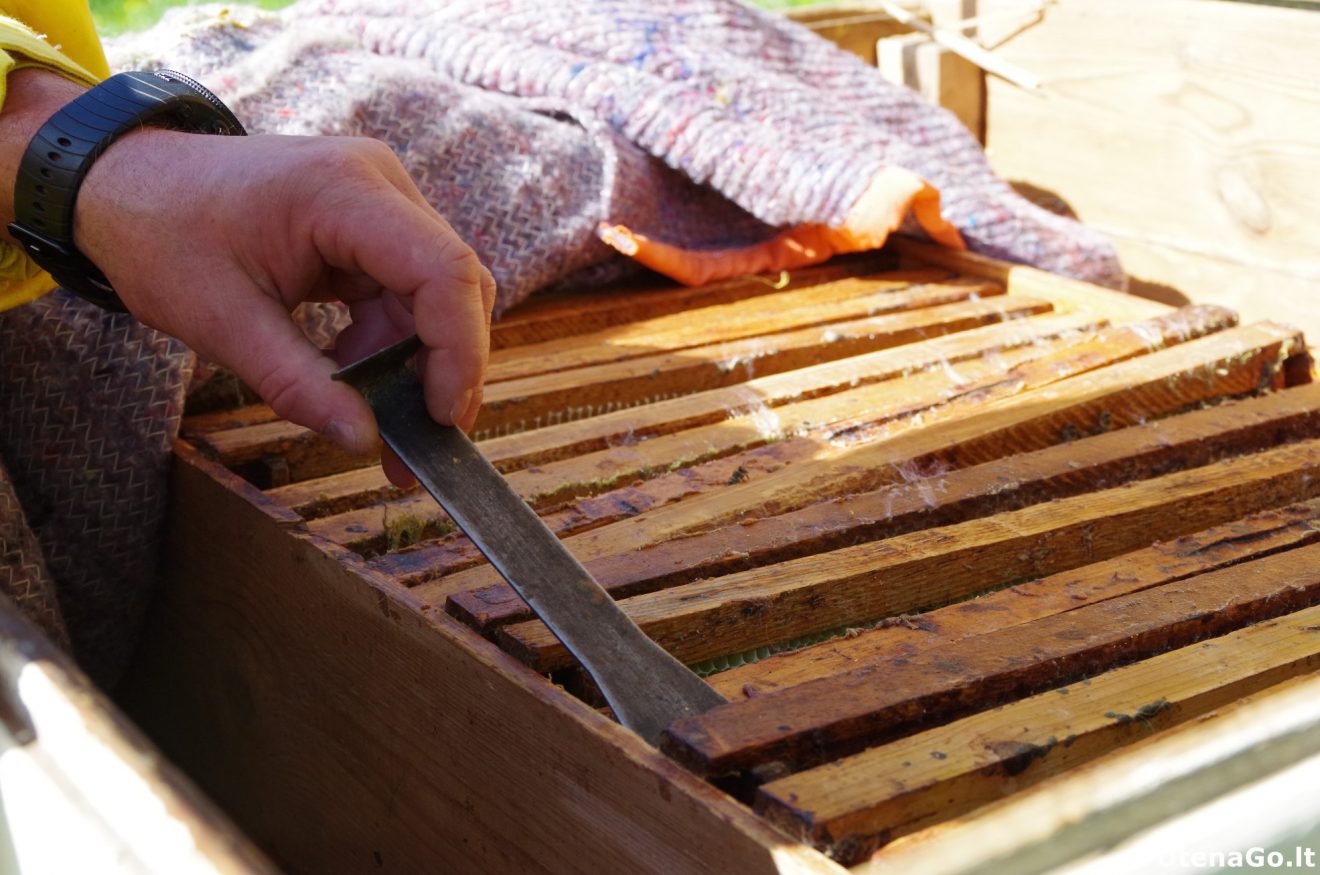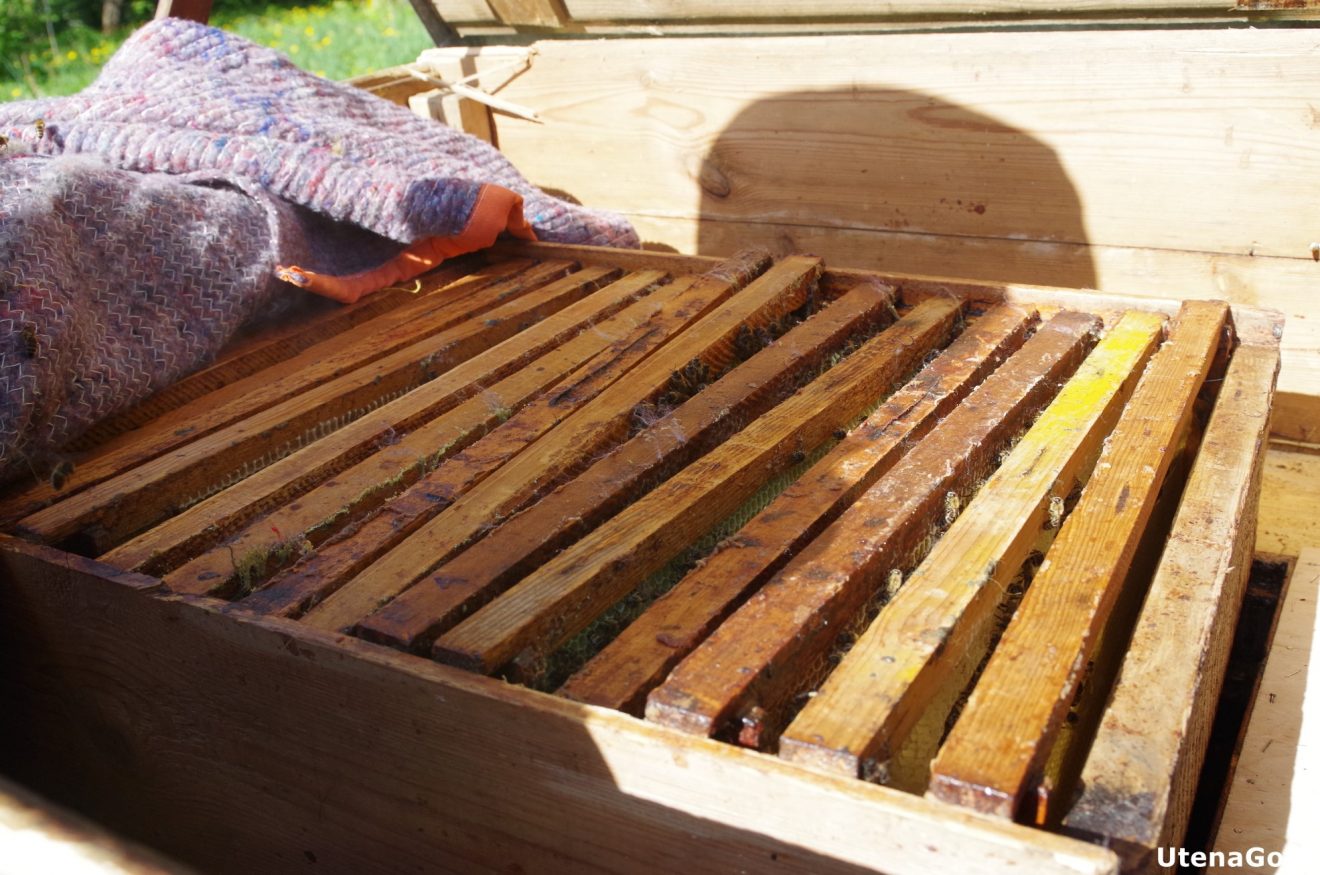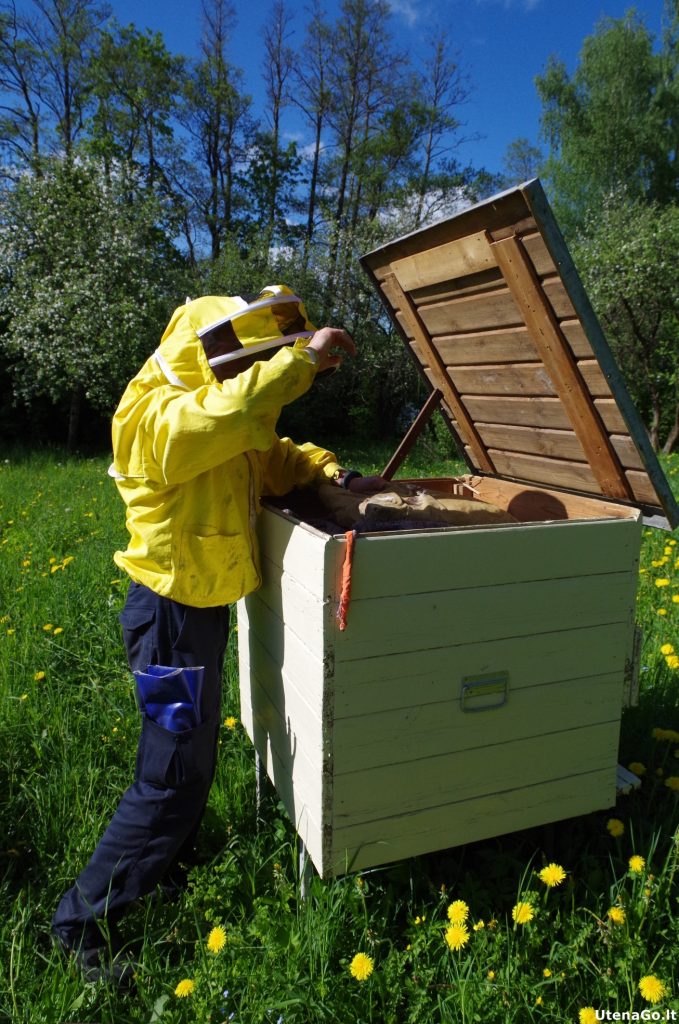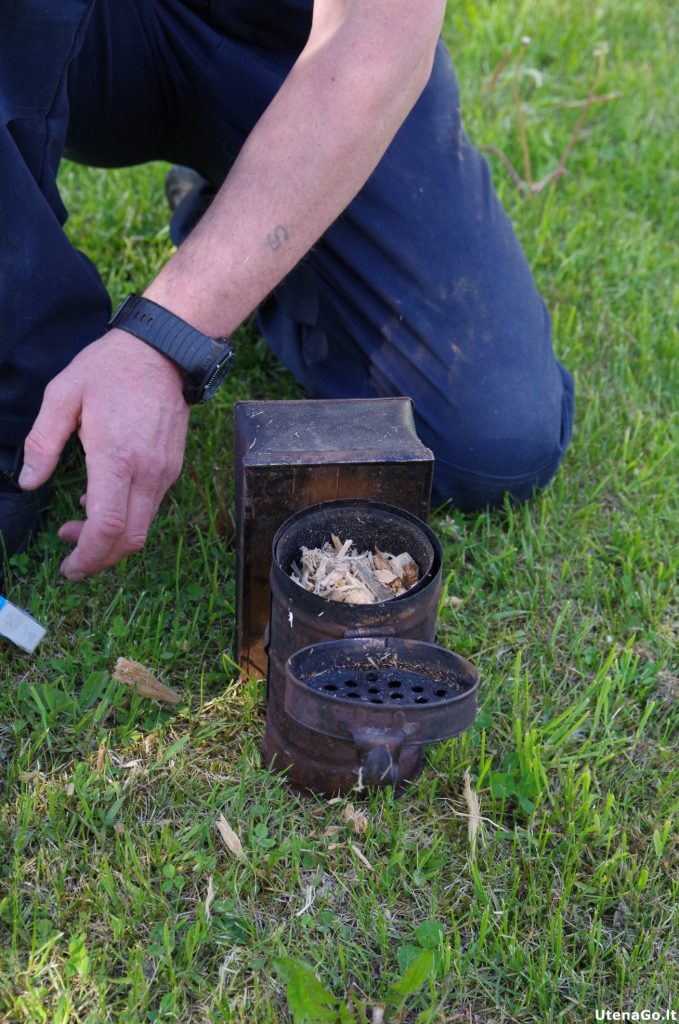In the second half of the 20th c. beekeeping was regarded as business only in the wooded south eastern part of Lithuania. An old and strong hollow tree would produce up to 7 gorčius (1 pood = 16.3805 kg) of honey and up to 2 pounds (365.47 g) of wax. On other parts of Lithuania hollow tree beekeeping had almost disappeared due to the massive forest cutting.
In the second half of the 19th-early 20th c. more intensive beekeeping was limited to farms. It took 3-4 days for a bee-keeper to build a hive and sometimes they used to be carved by clog shoe makers.
In the second half of the 19th and the first half of the 20th c. people used to take up beekeeping by getting a hive as present. Bee-keepers used to give bees as a present for “people with a calling”, relatives, neighbours, their children, godchildren or skilful hired servants on various occasions. They not only gave them a hive, but also taught them the trade of beekeeping. Eventually, as beekeeping traditions began to extinct, beginners had to hire experienced bee-keepers to teach them the art of beekeeping. Due to various Lithuanian superstitions, bees became an object of trade only in the first half of the 20th c. However, the majority of bee-keepers, especially the older ones, were hesitant to sell their bees, being afraid to sell their luck.
Hollow tree beekeeping was always, while hive beekeeping has been exceptionally a man’s job for a long time. The old bee-keepers believed that this trade is only for grown up people and only men.
Moving bees to hives resulted in more advanced beekeeping. The first hives were made of tree trunks. At first they used to put vertically and later — horizontally. One side of a horizontal hive used to be higher than the other and referred to as the “head”, while the latter — as the “legs”.
Late 17th c. popularised artificial hives. At first they used to be made of straws or wickers and later they acquired a more modern shape, similar to the ones that we see today.
When one bee-keeper’s bees settled in another bee-keeper’s empty hive, these bee-keepers used to become bičiuliai (“friends” — the Lithuanian word is closely related to the word “bee” — bitė). A person, would not return the bees, but inform the former bee owner of the changed circumstances. Sometimes people would become bičiuliai by giving each other bees. Bičiulystė (“friendship”) is sacred, referring to strong ties, characterised by mutual respect, honesty and trust. Such friends were obliged to visit one another and refrain from harm or jealousy. Good relations of bičiuliai had to guarantee the prosperity of their bees.












